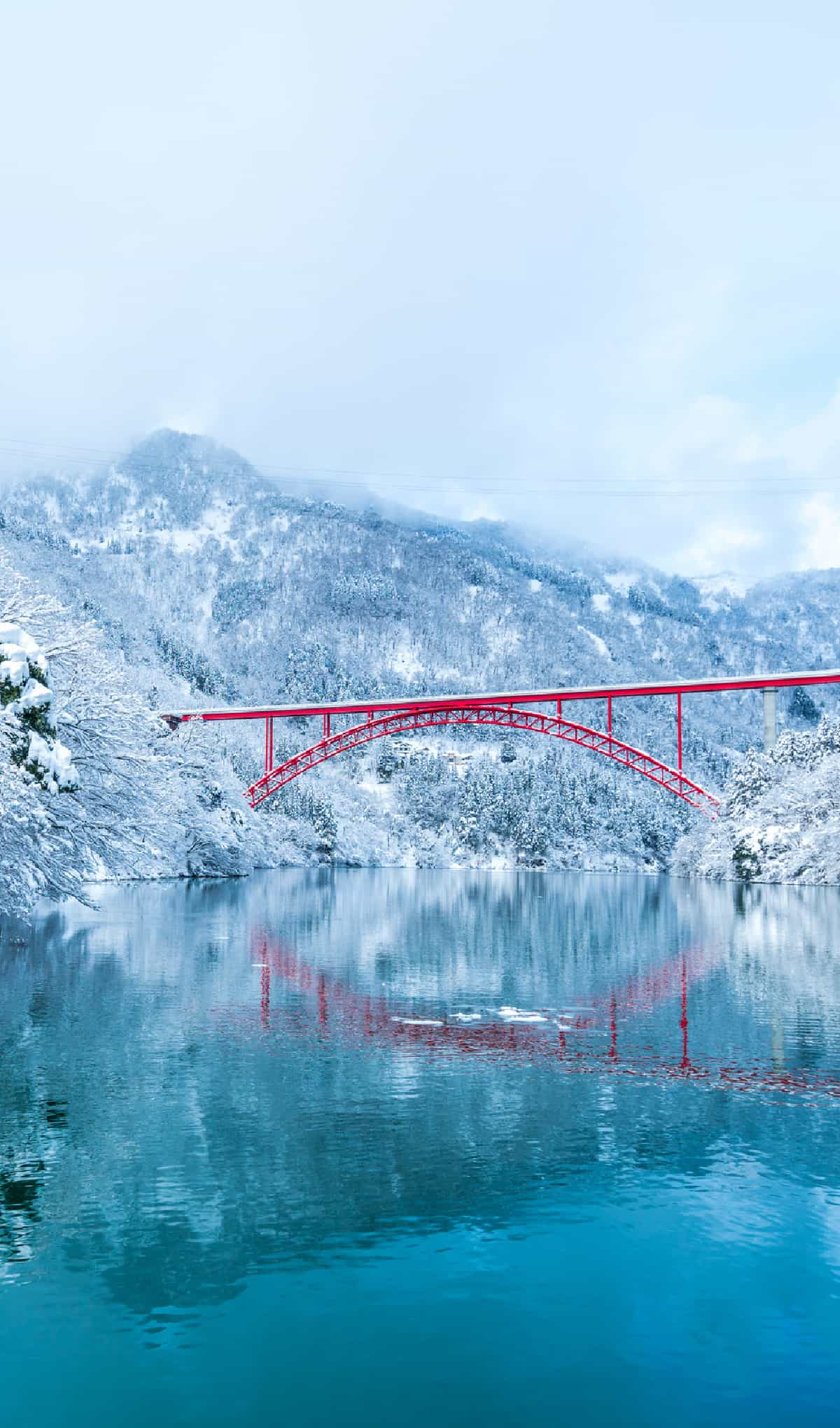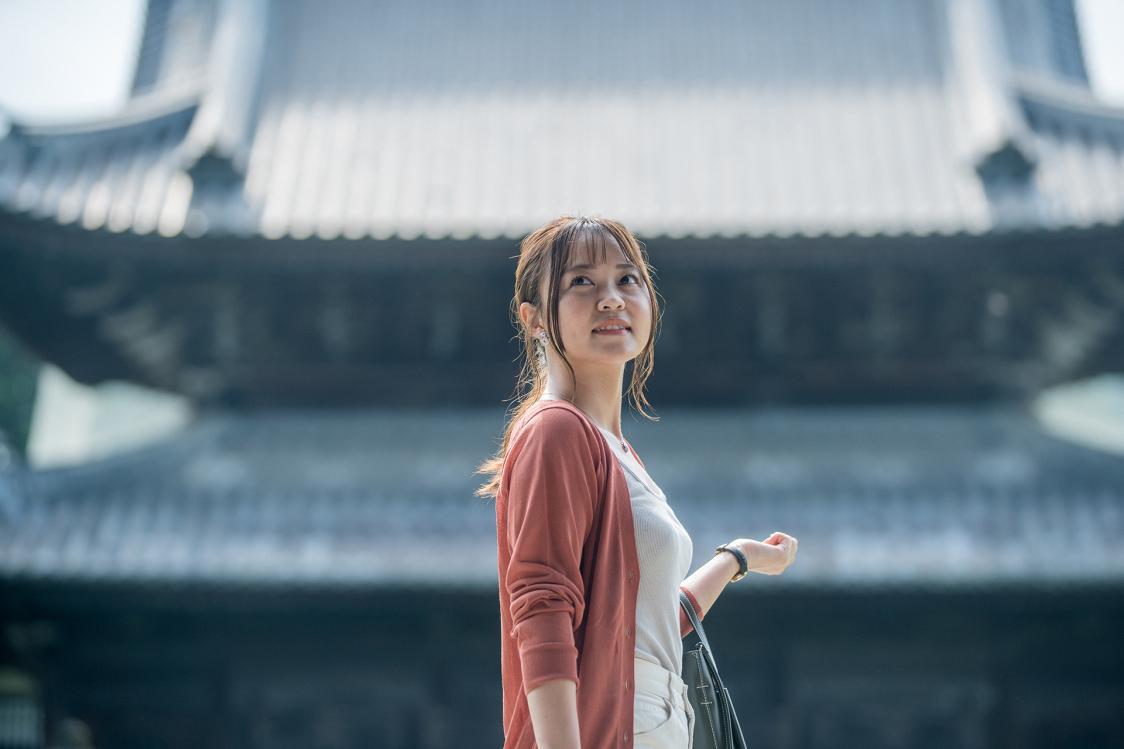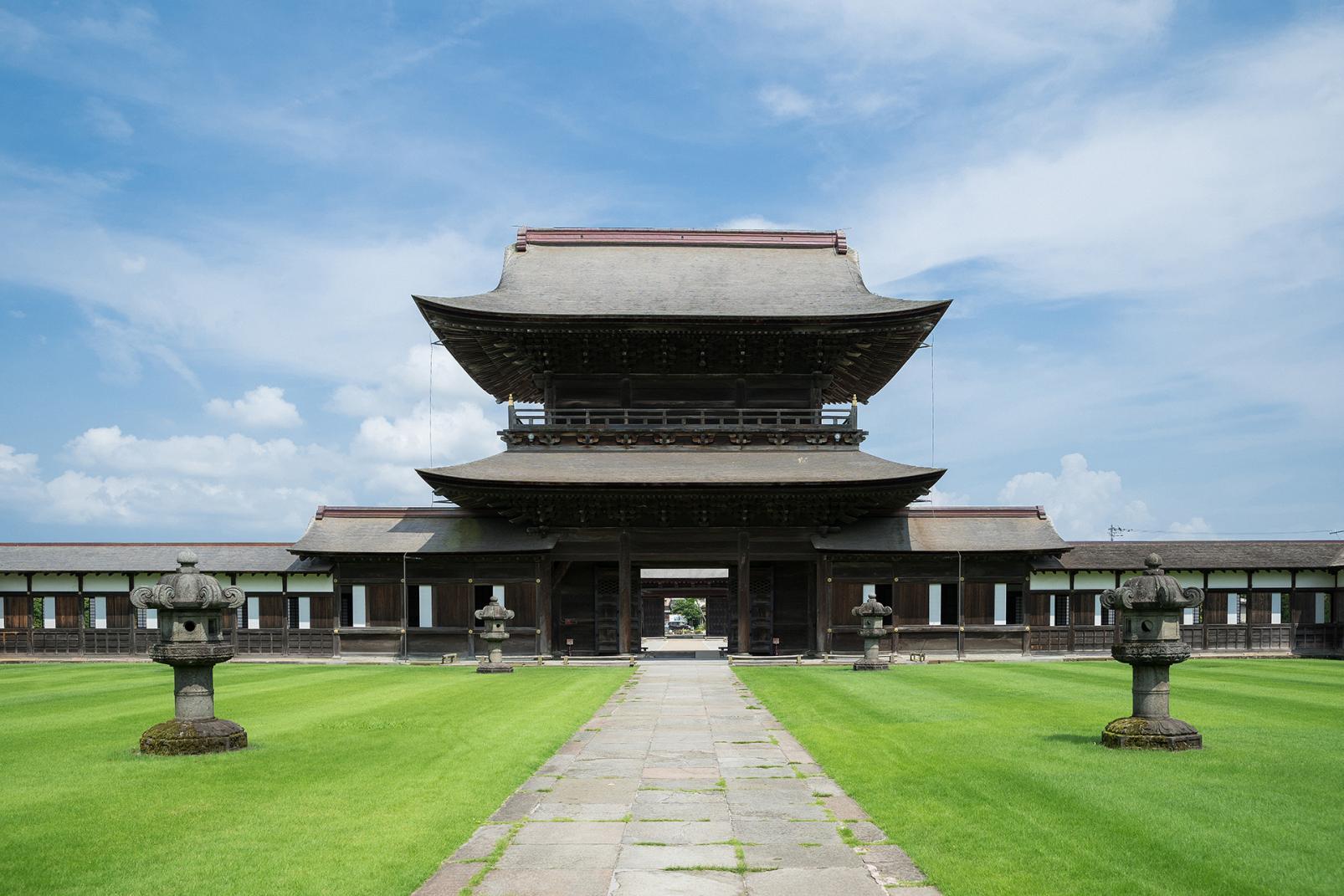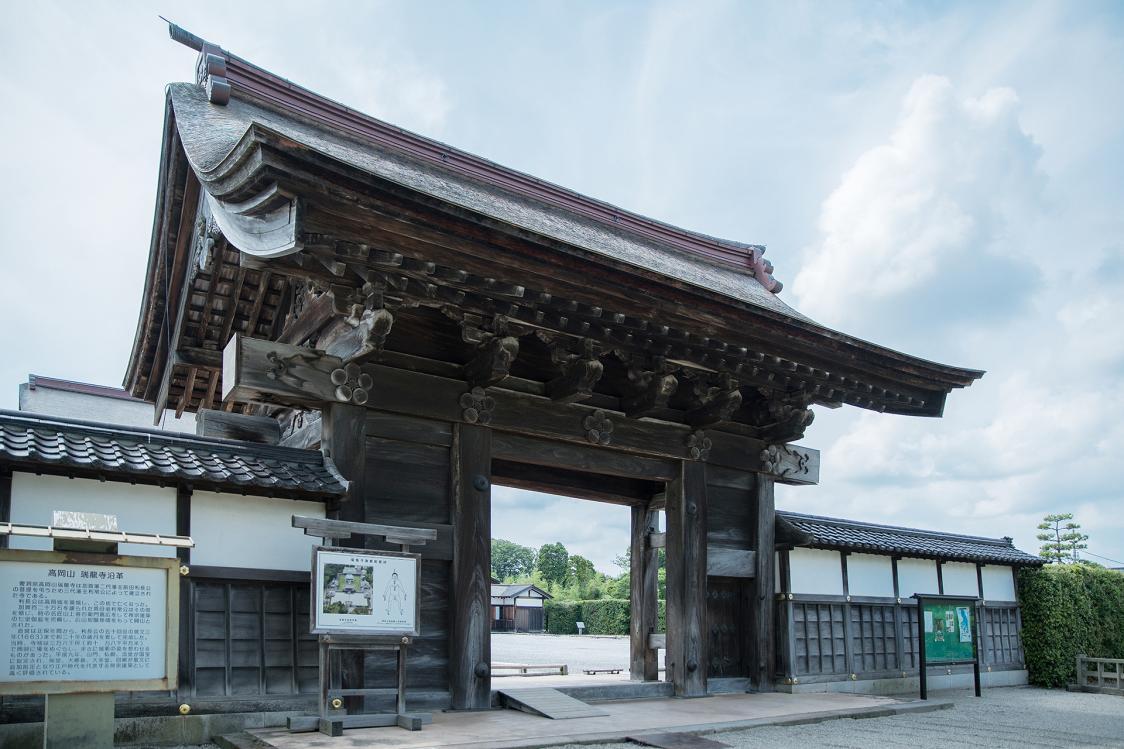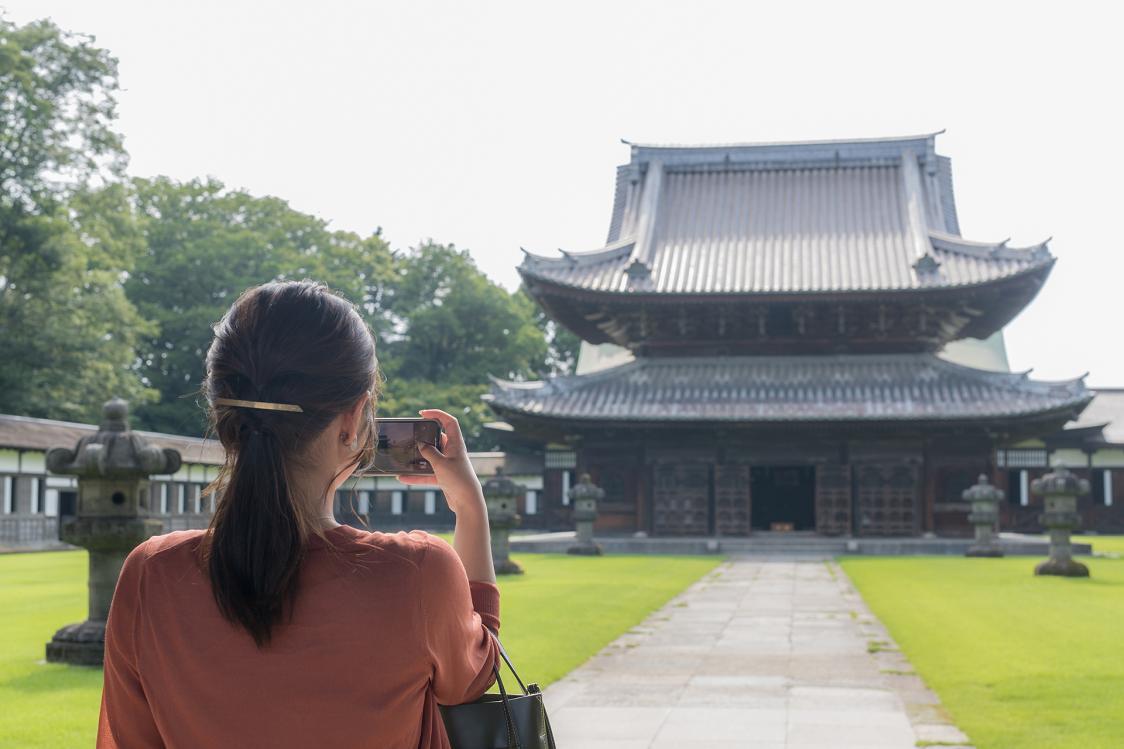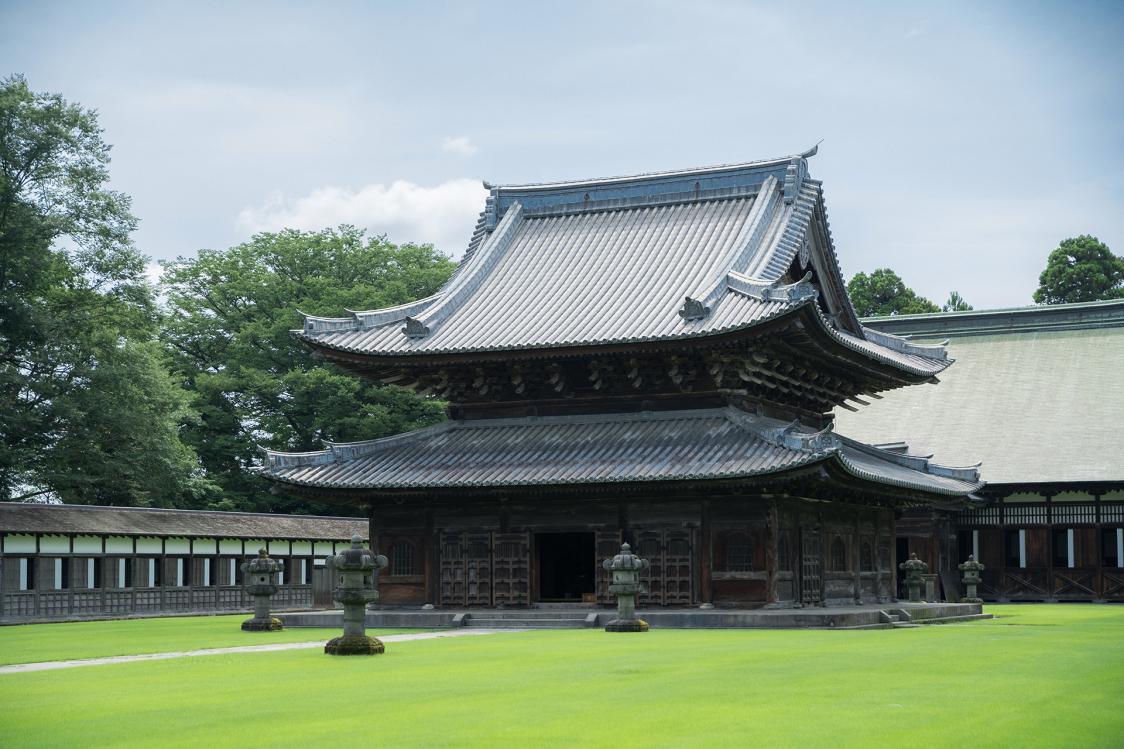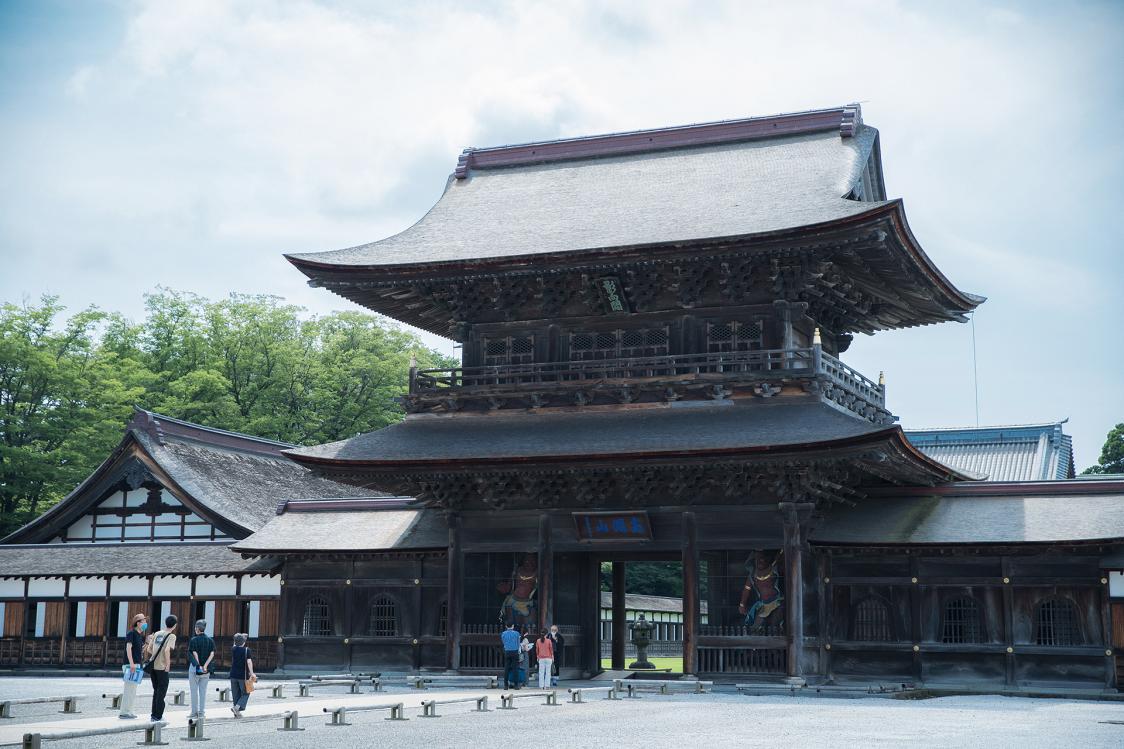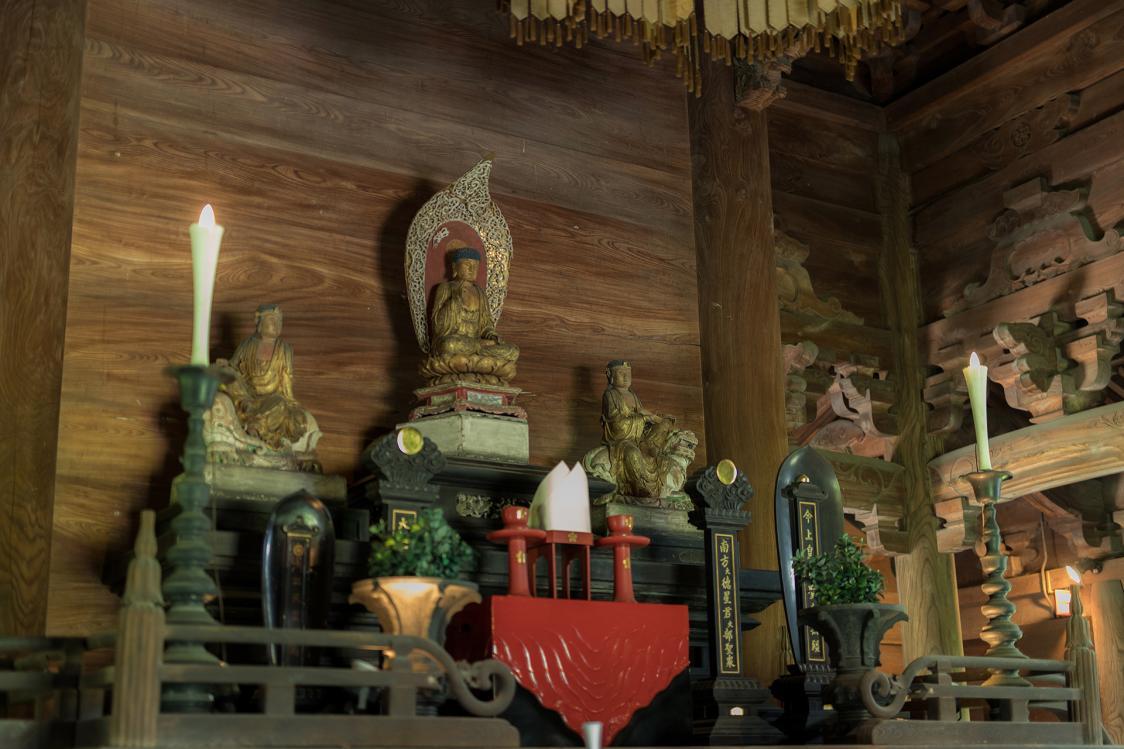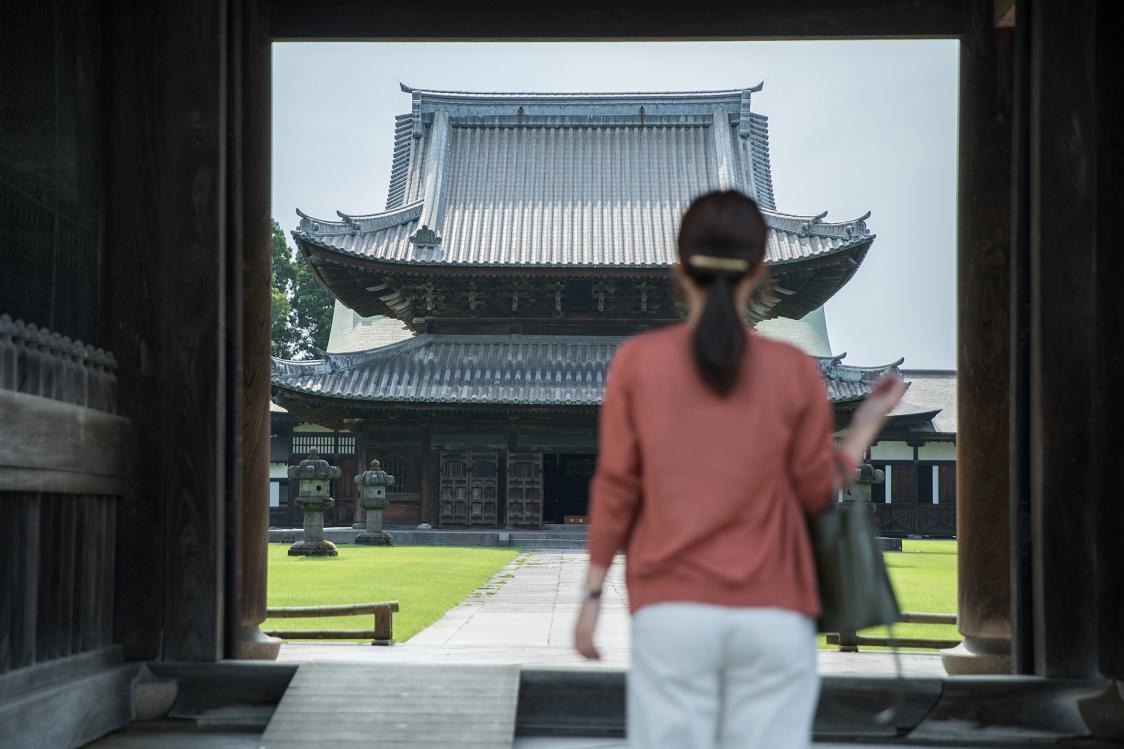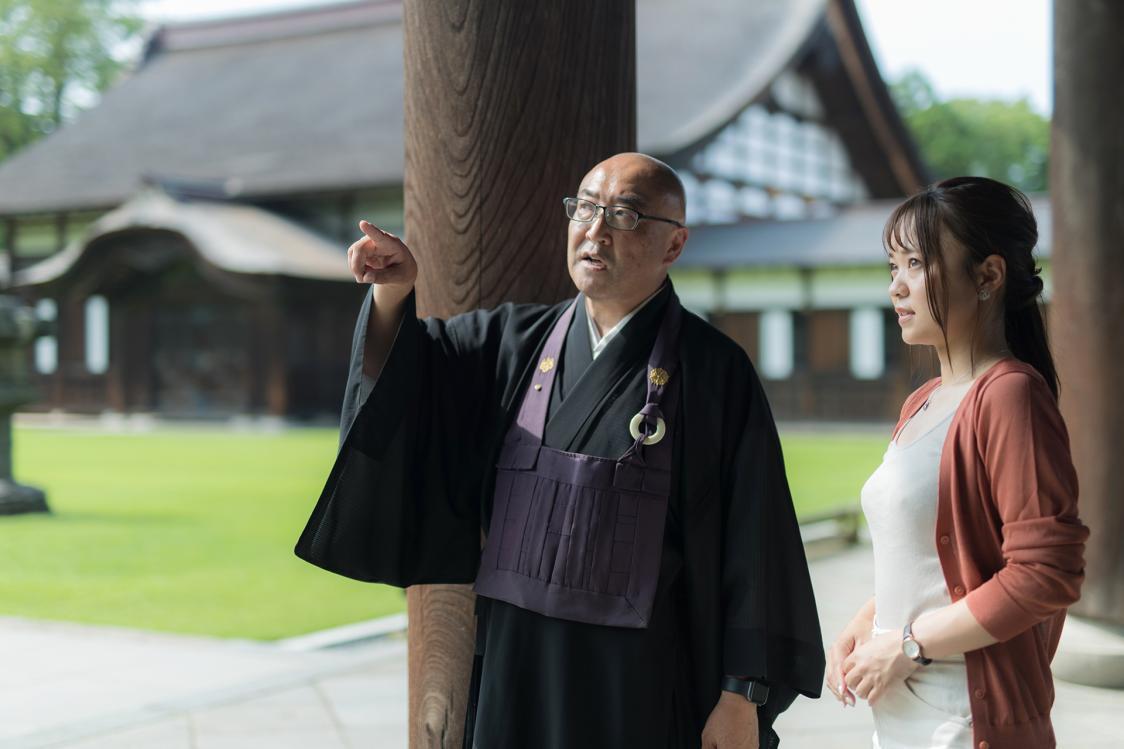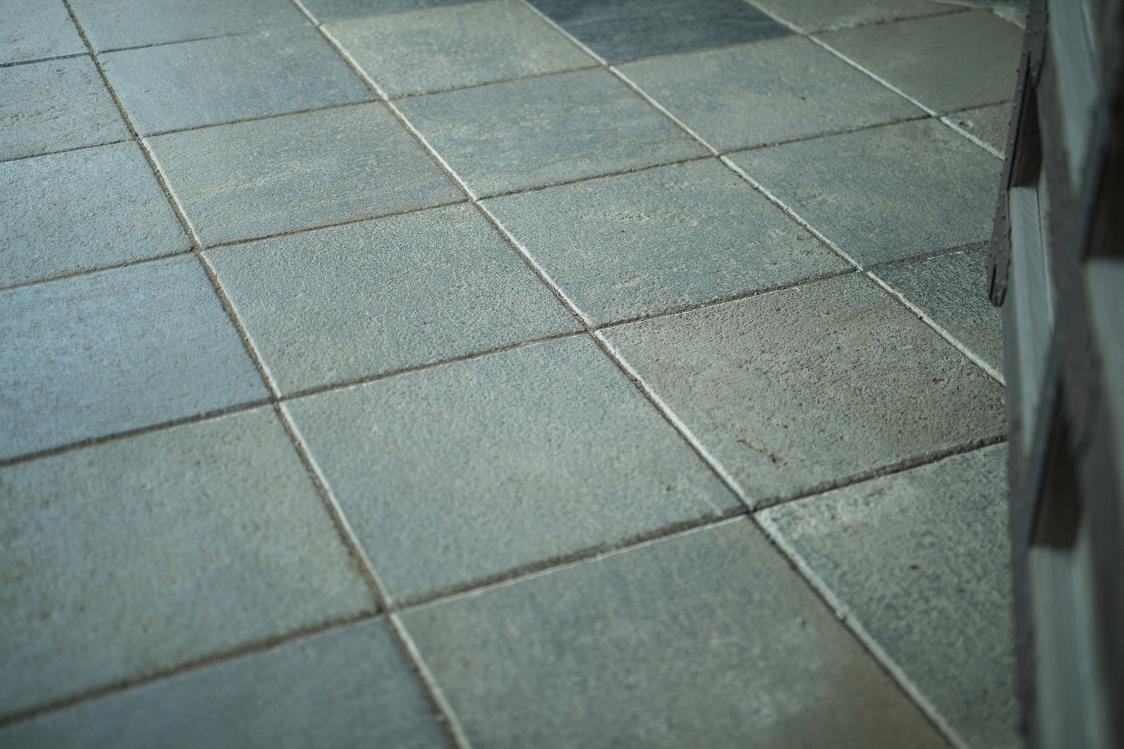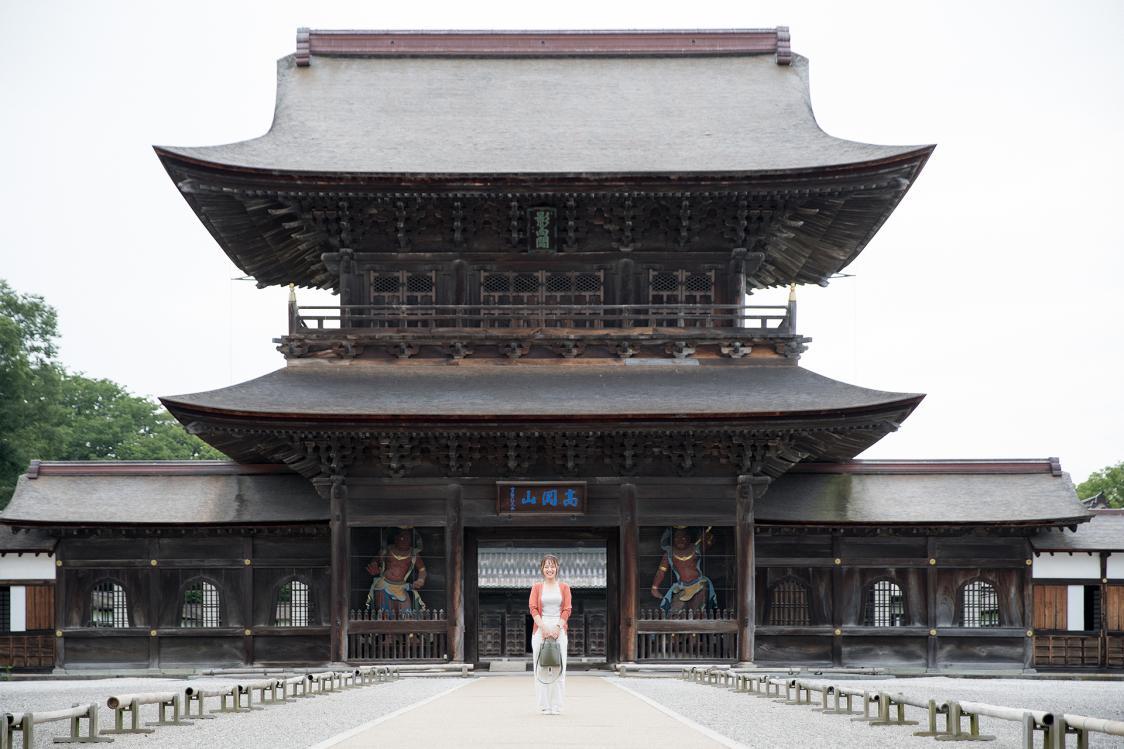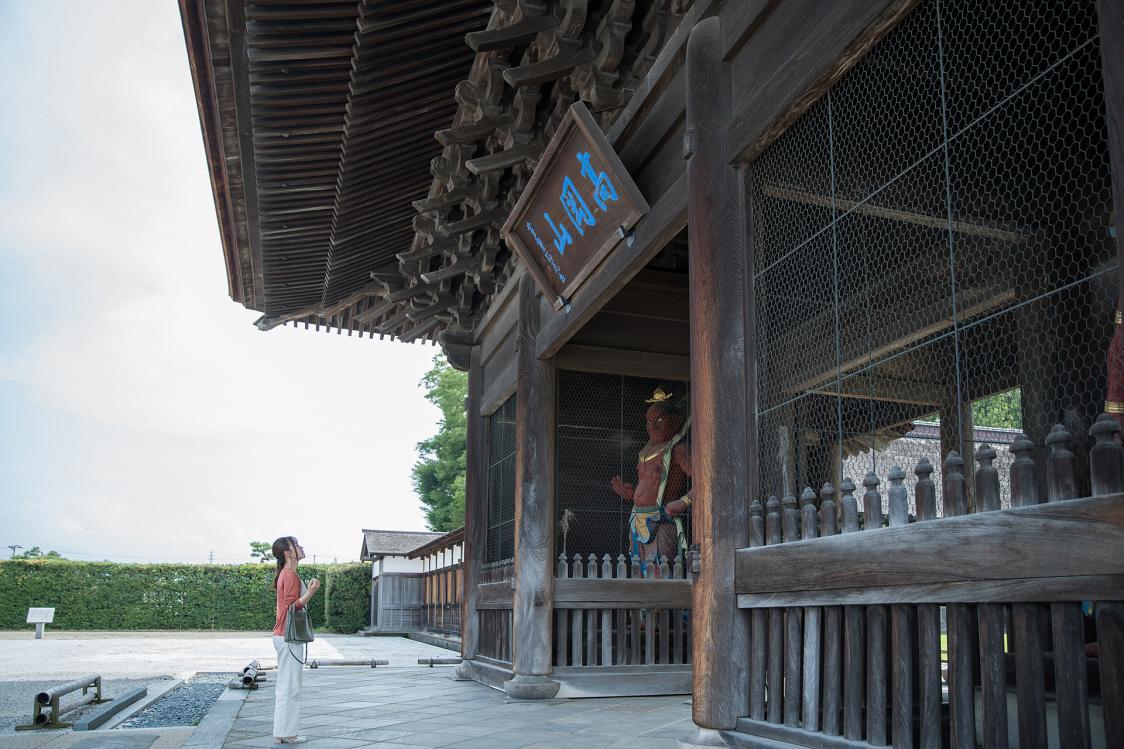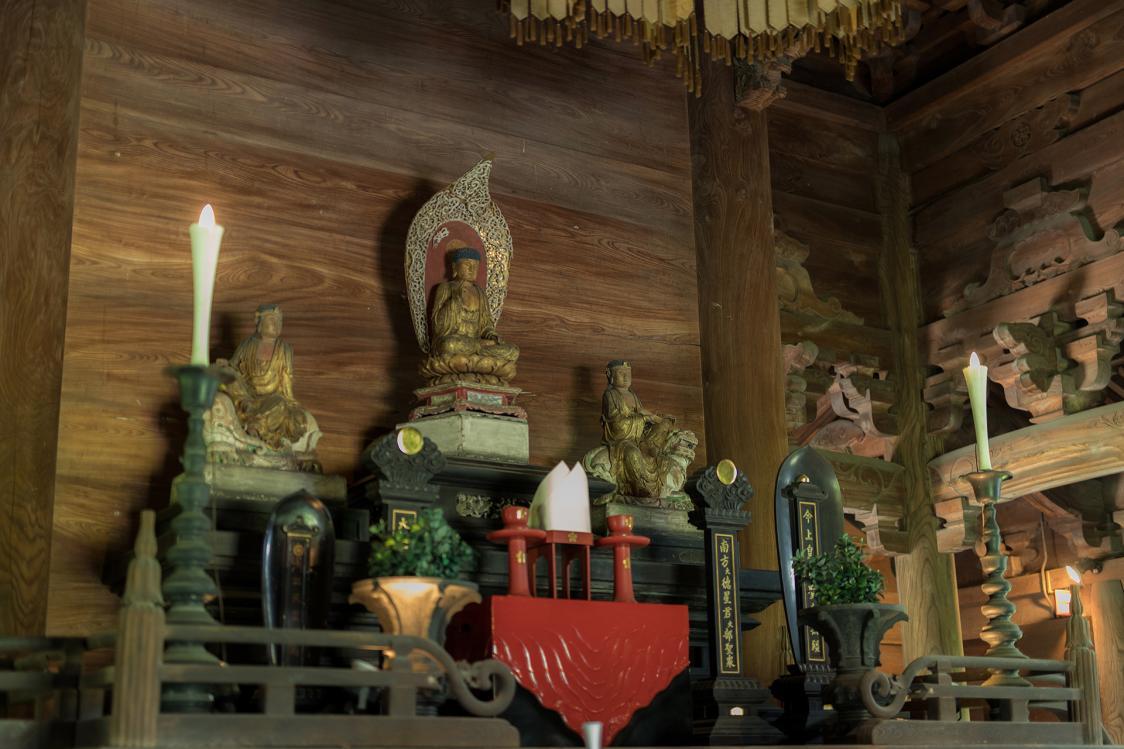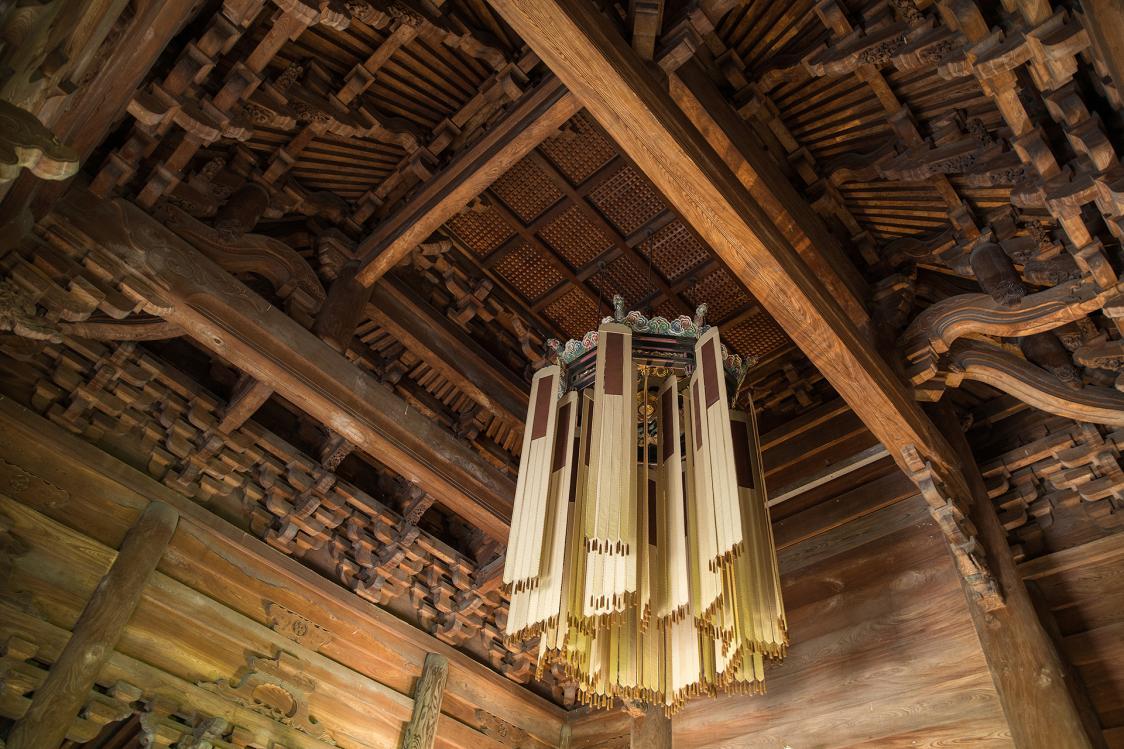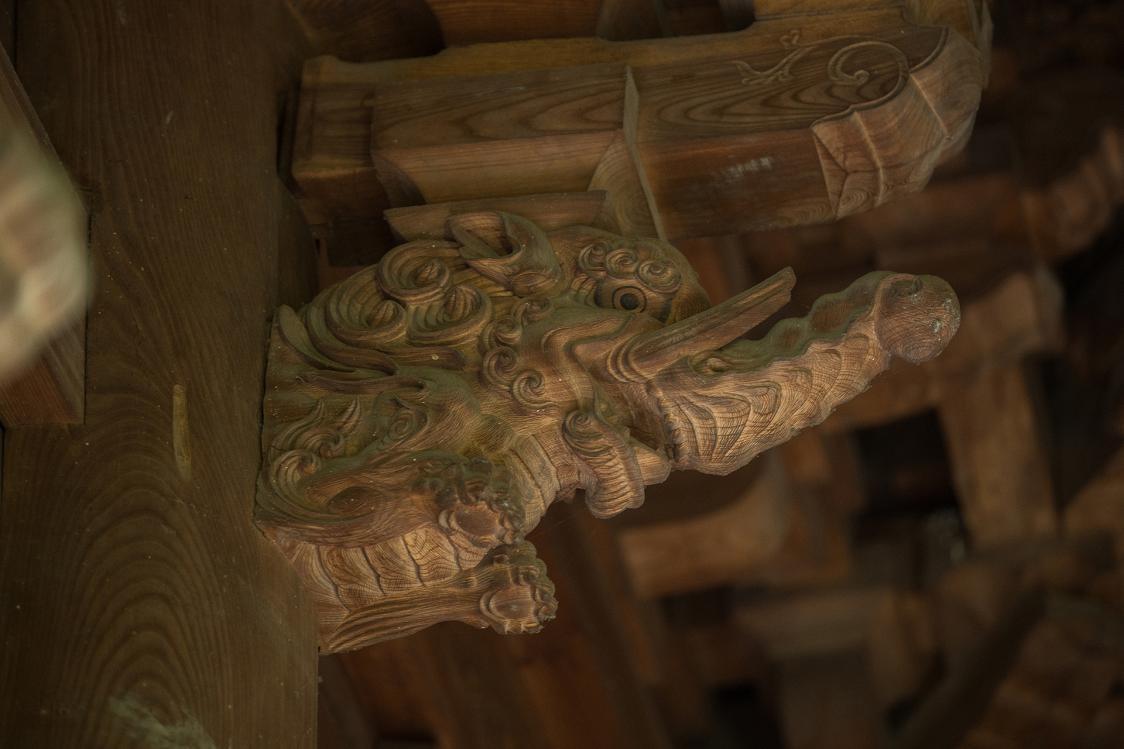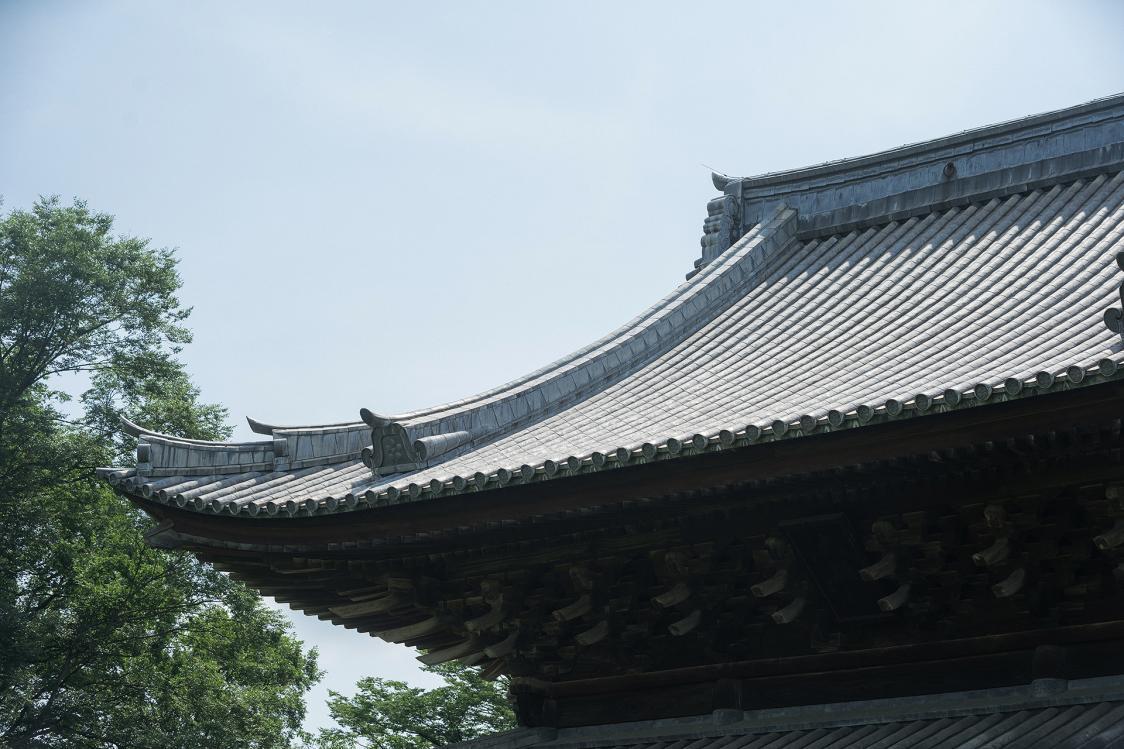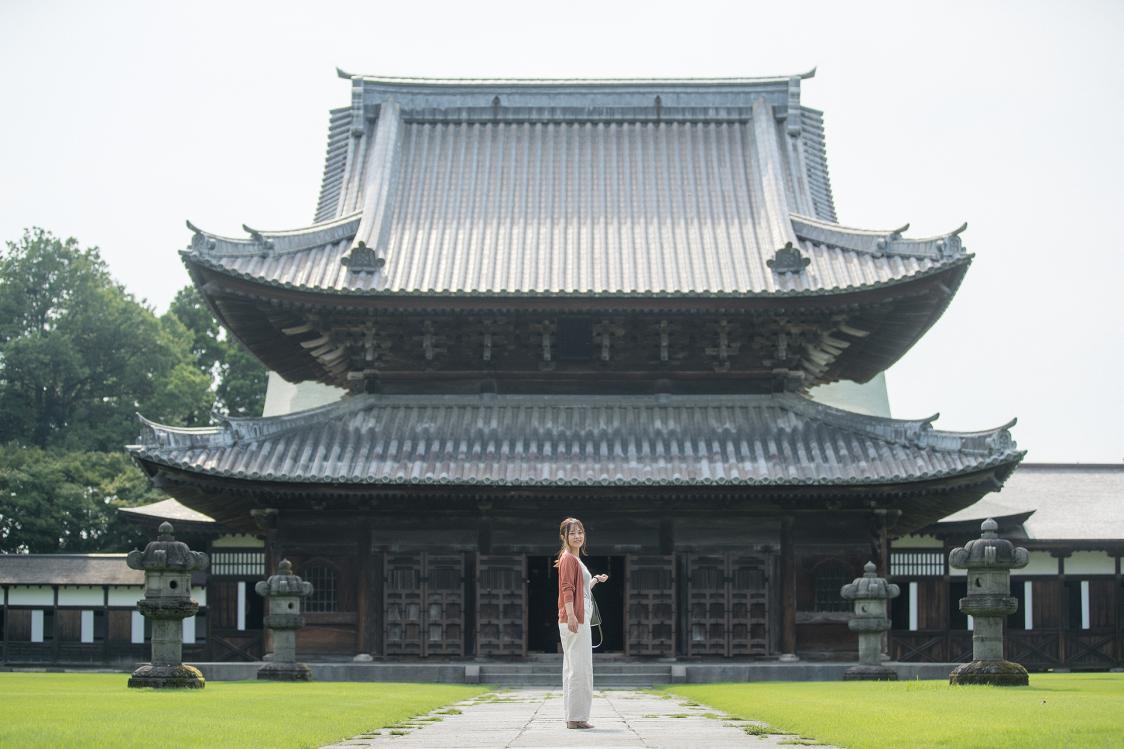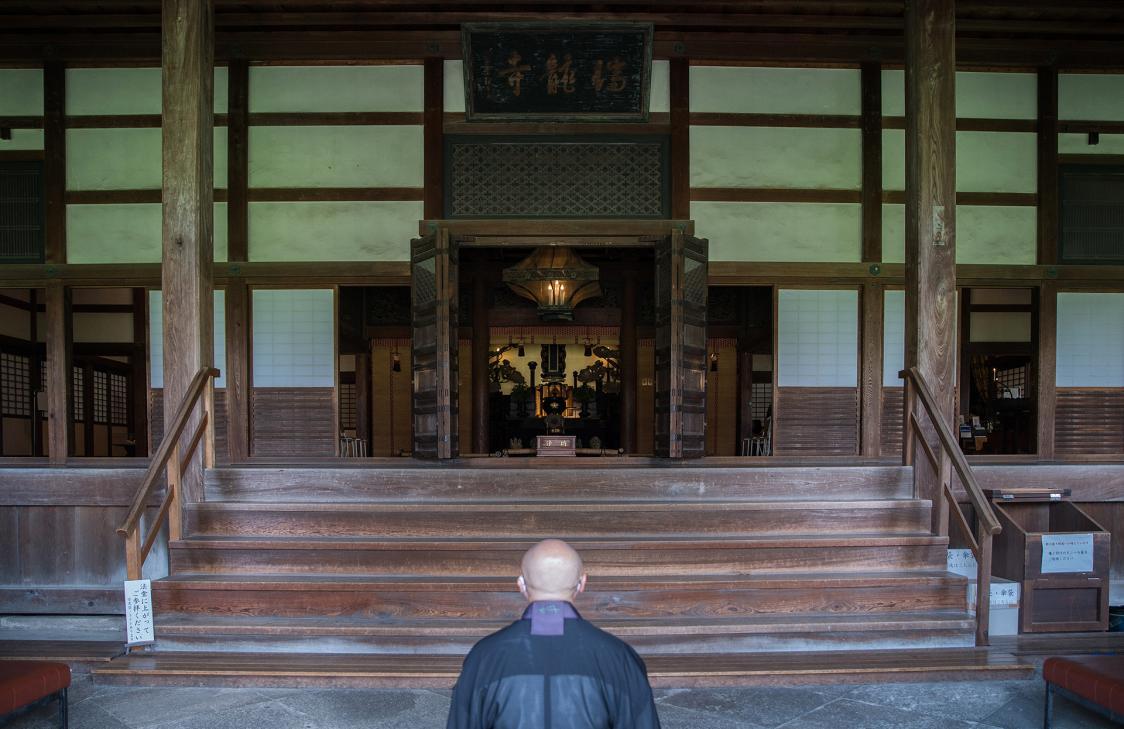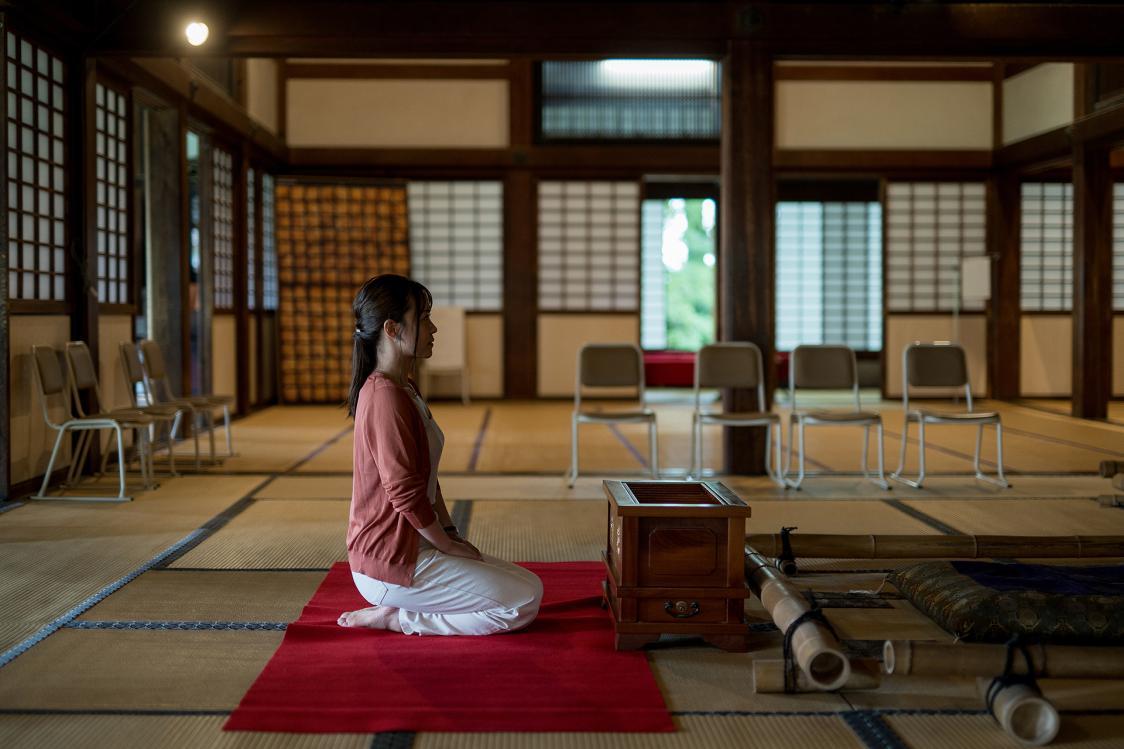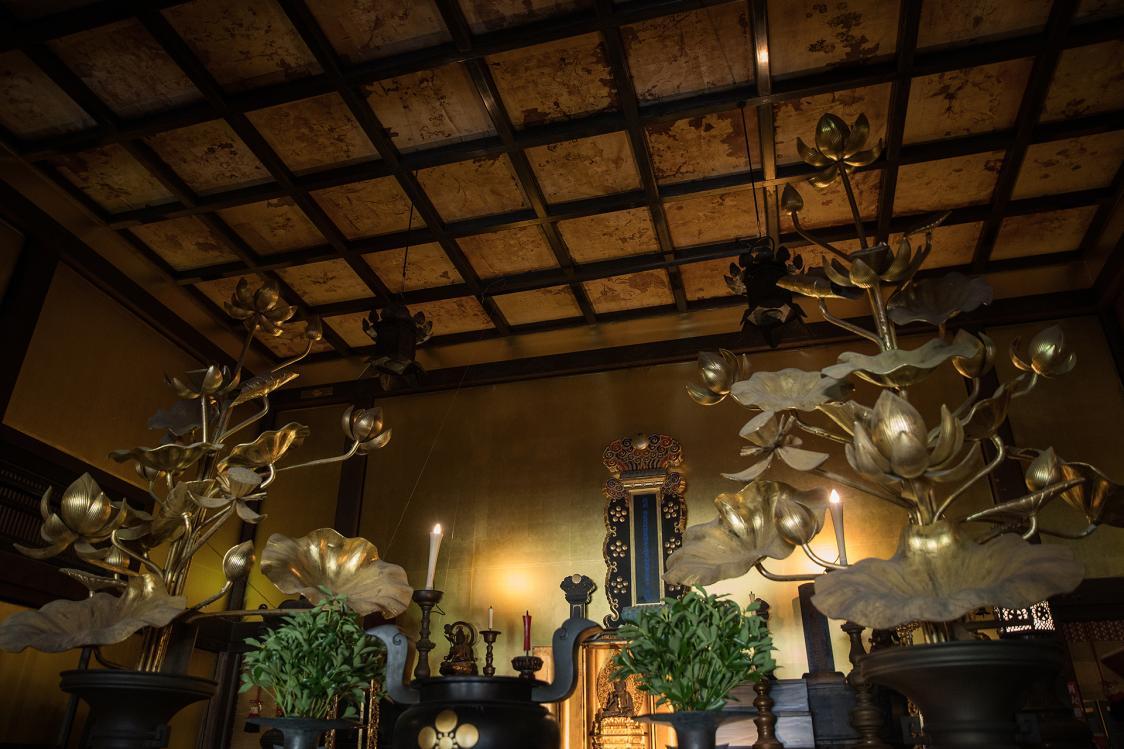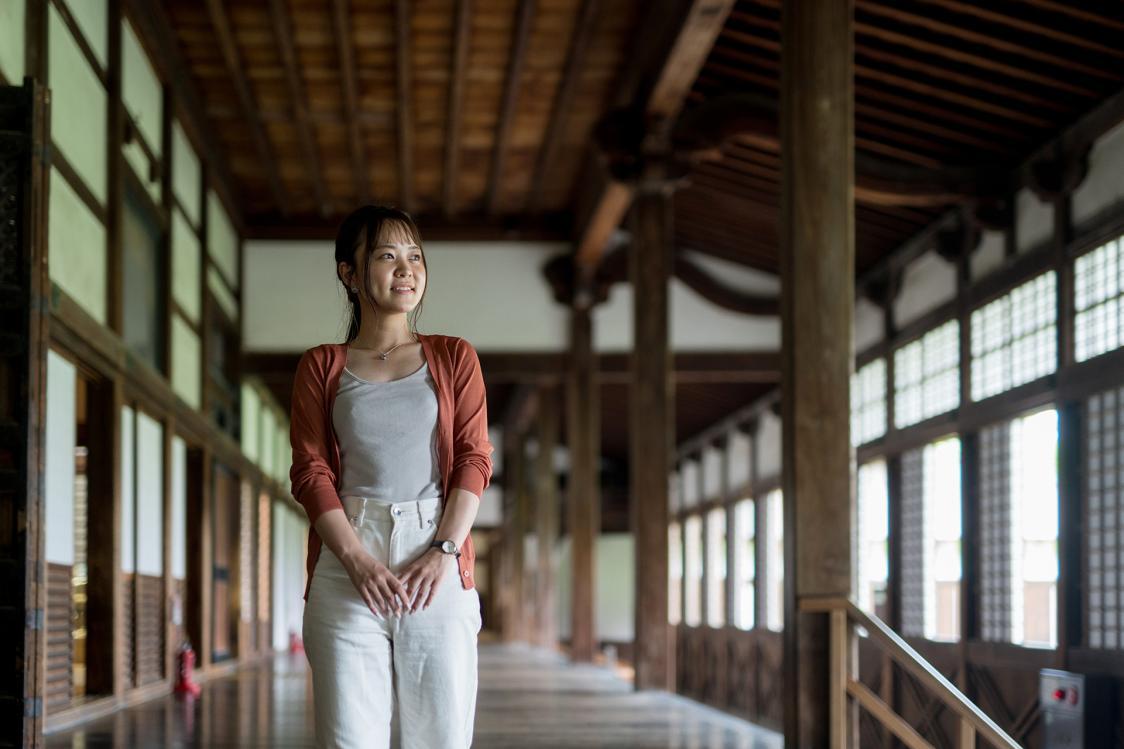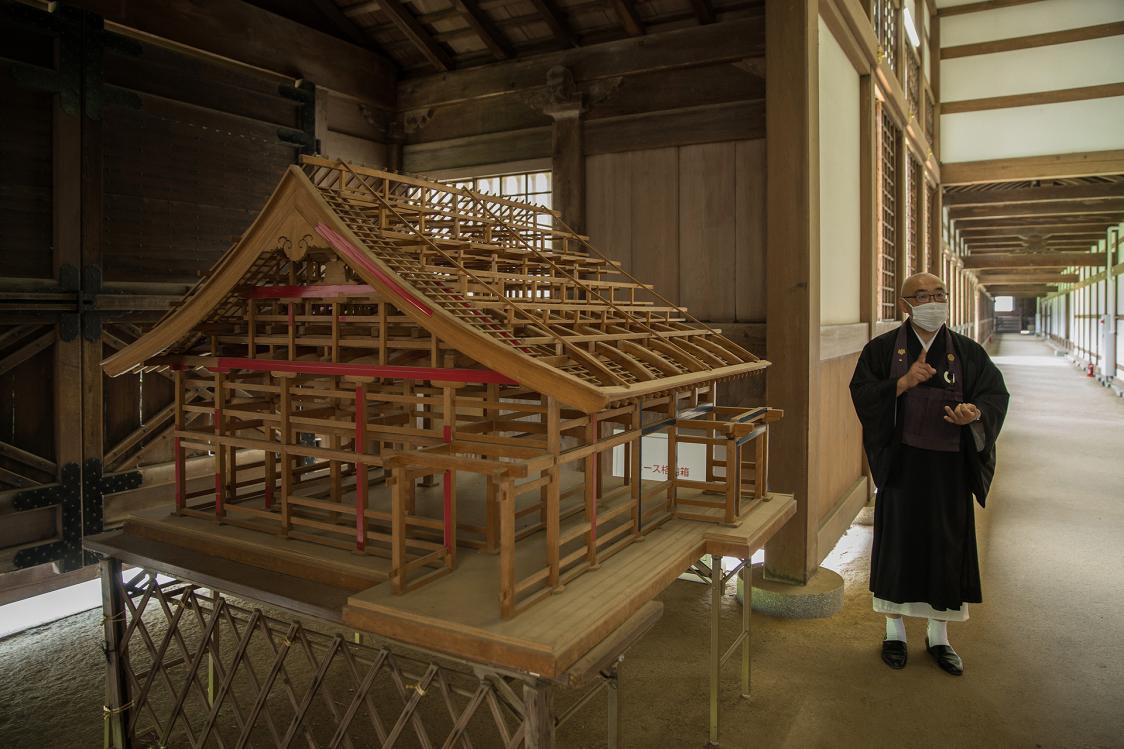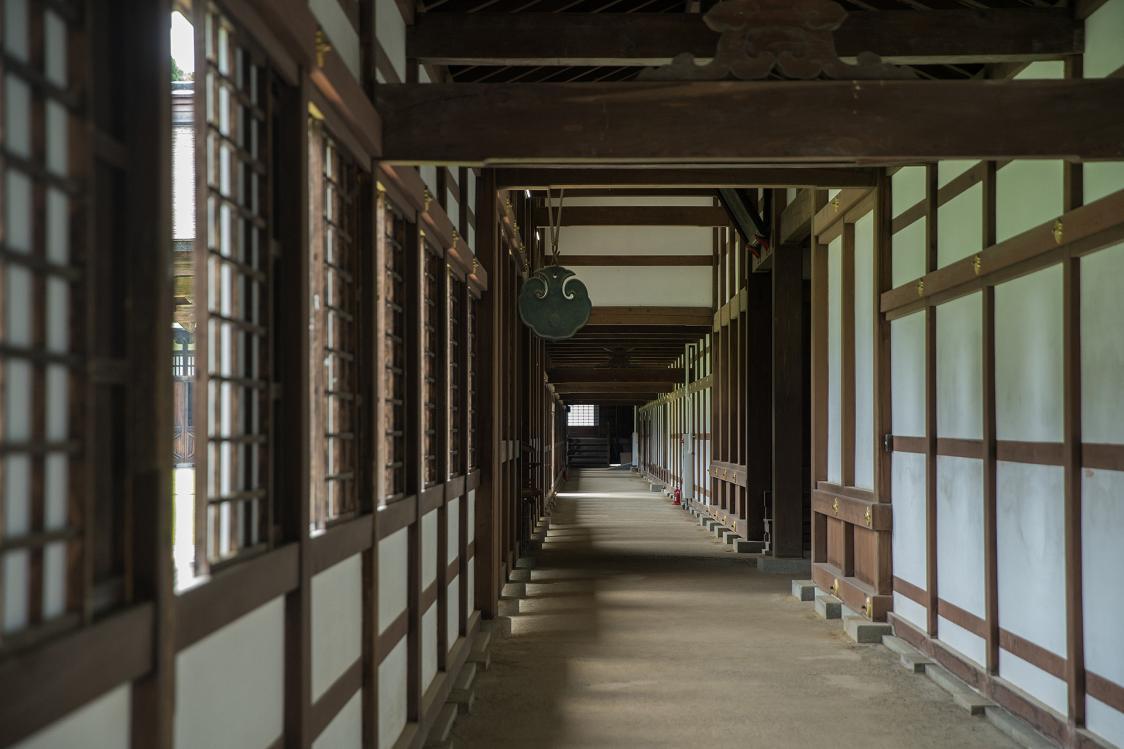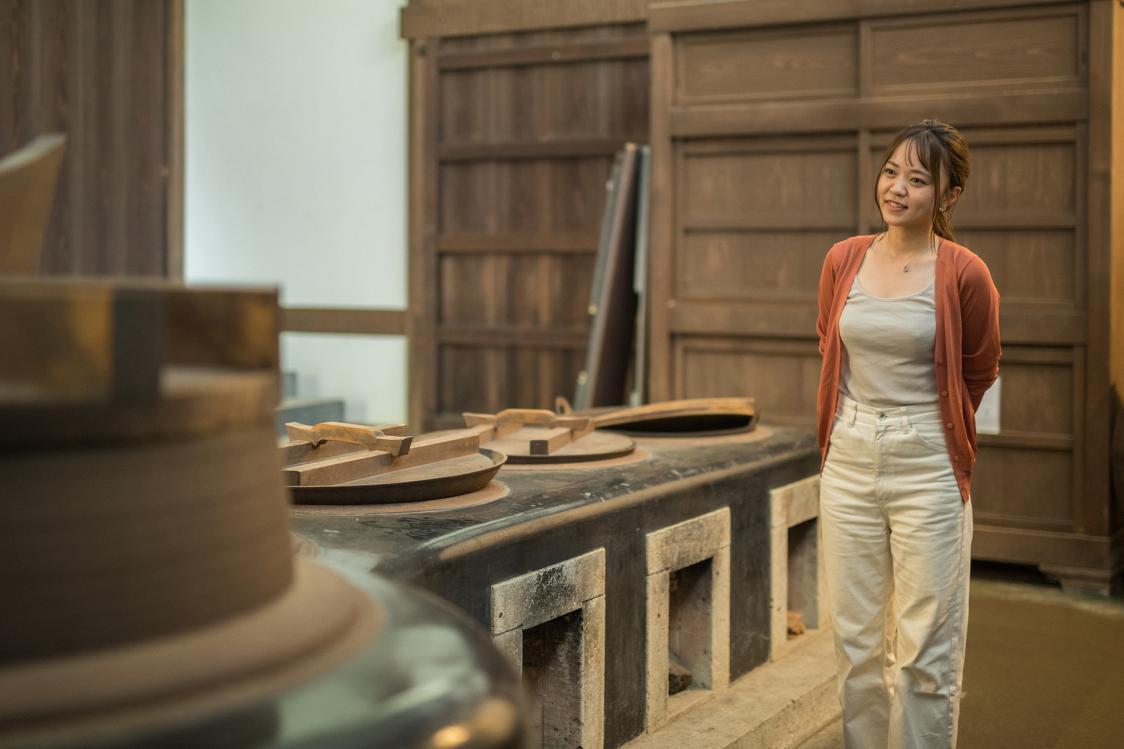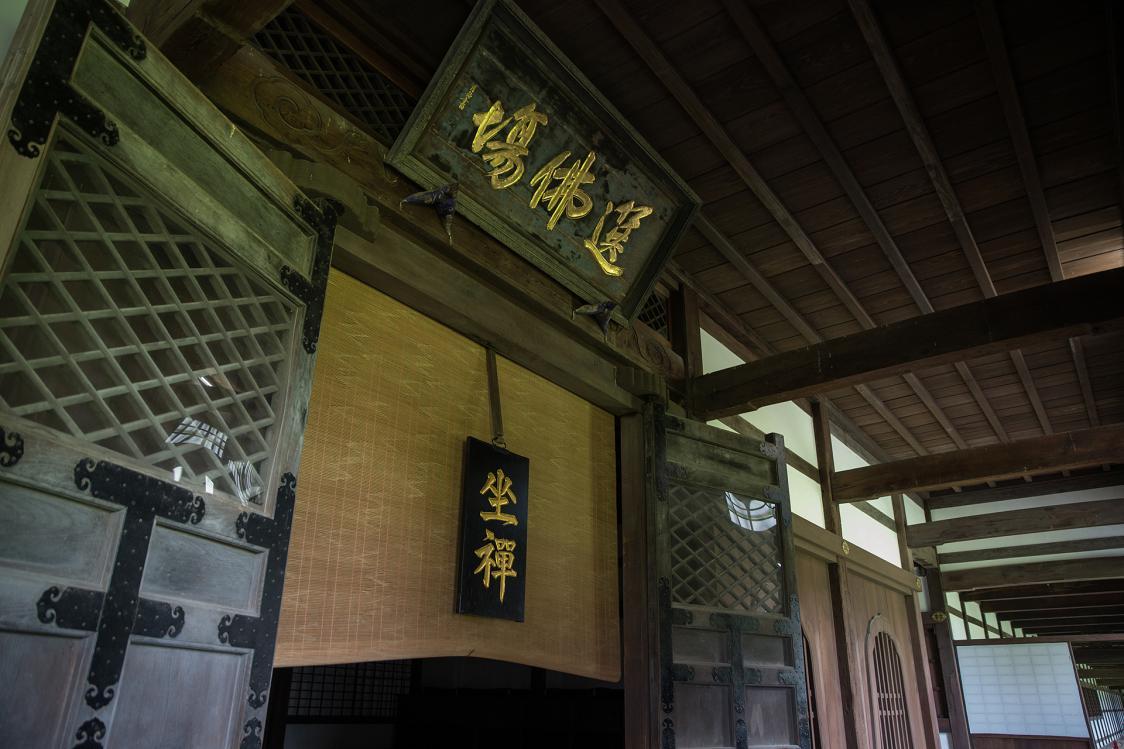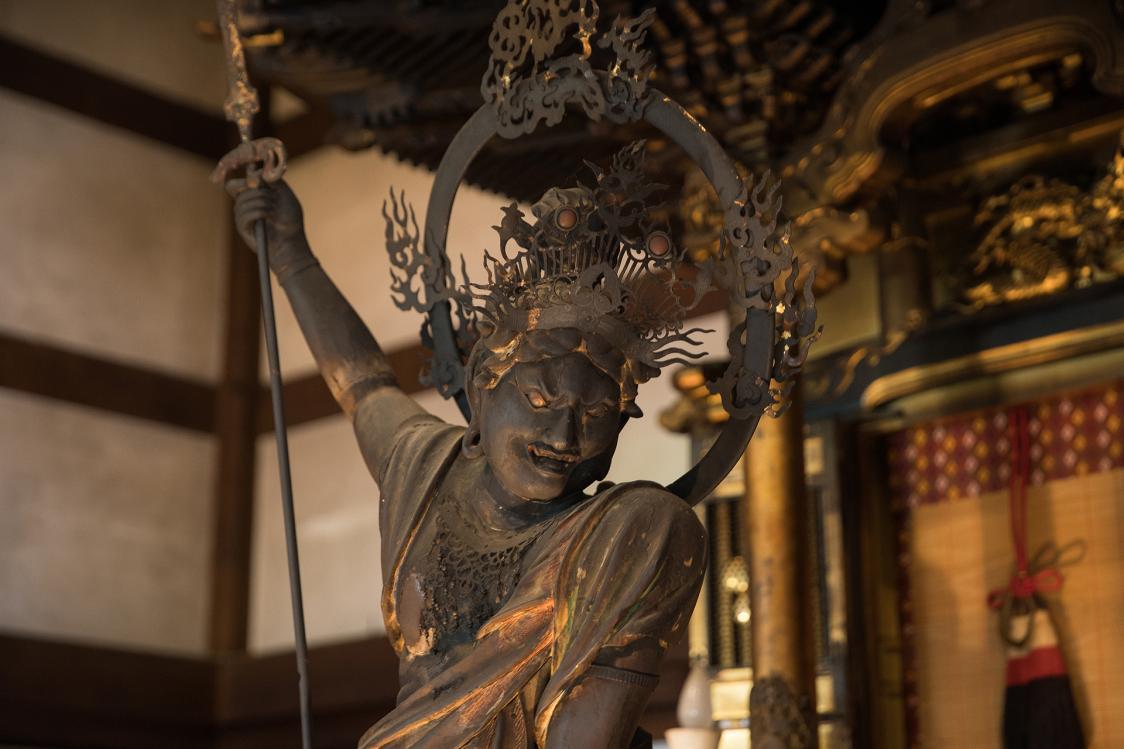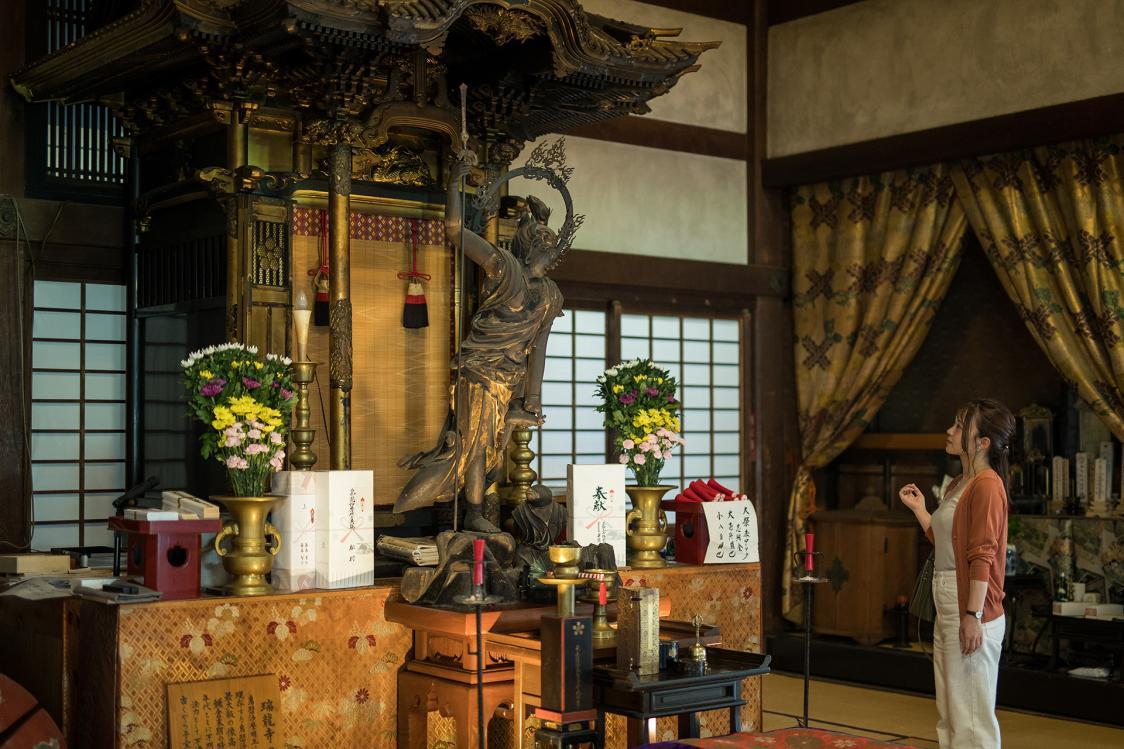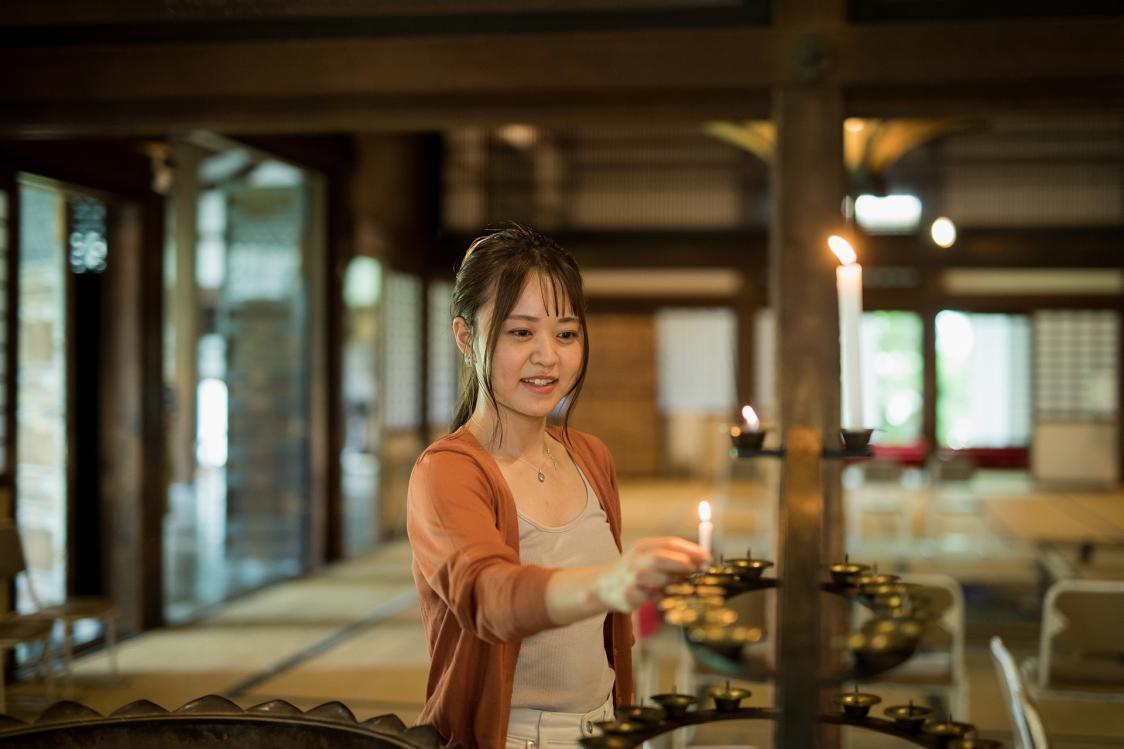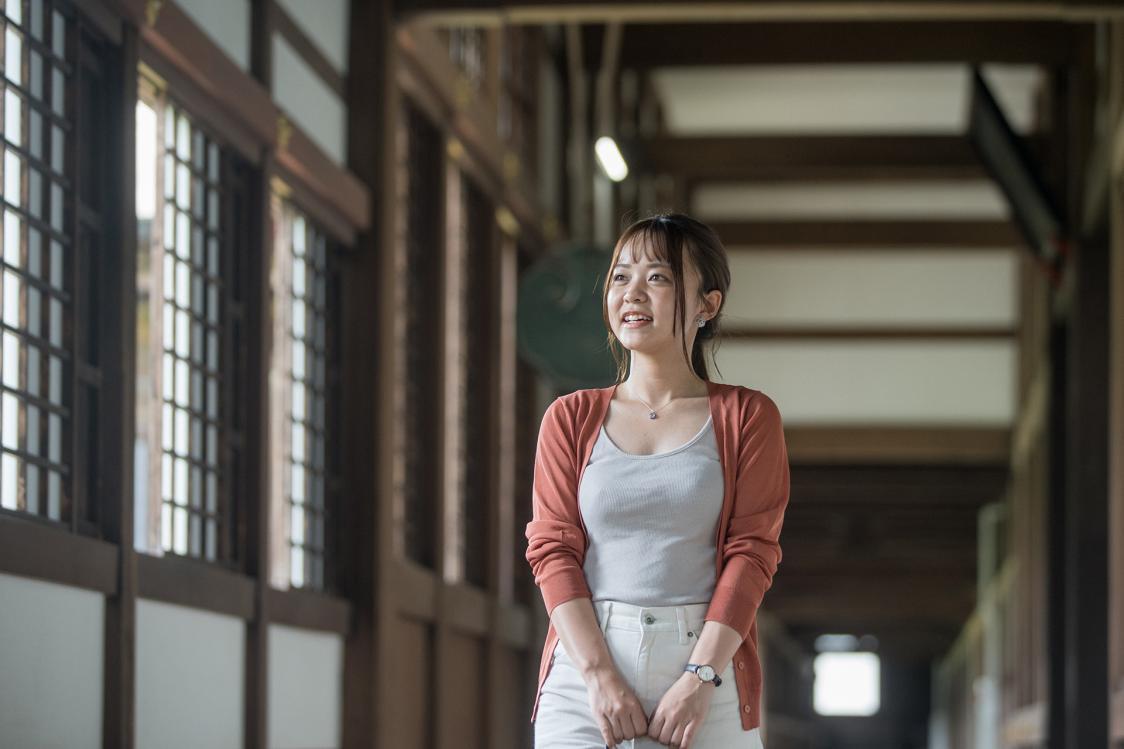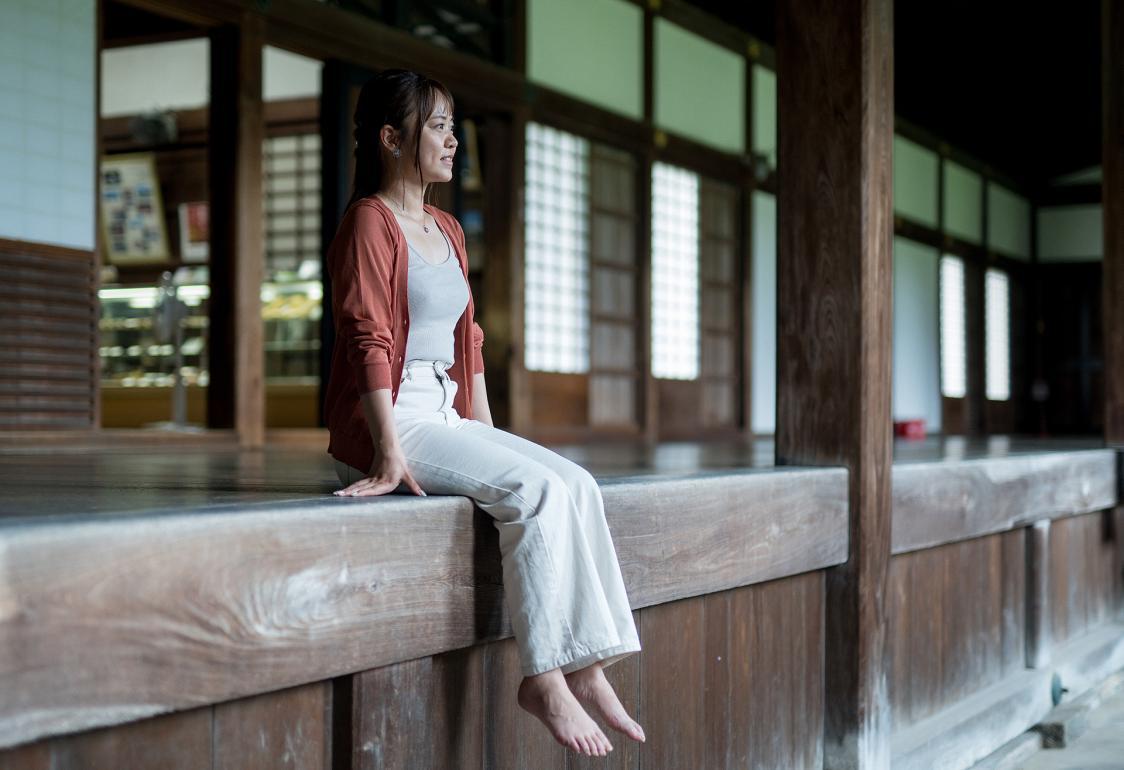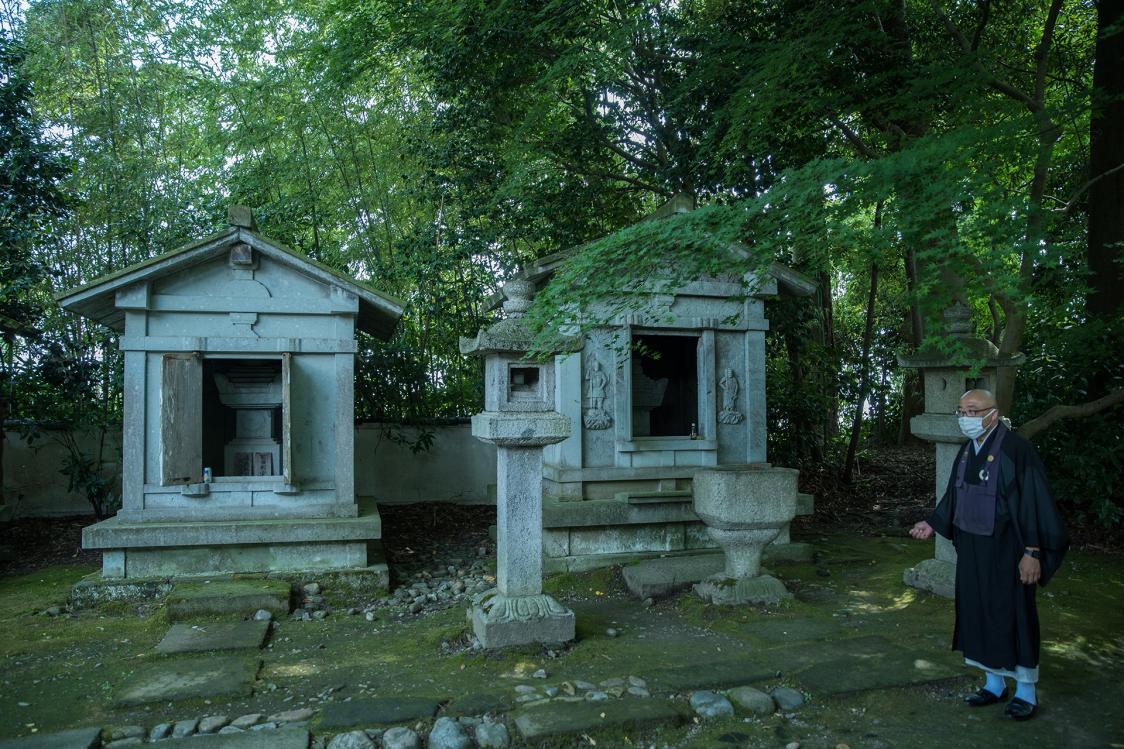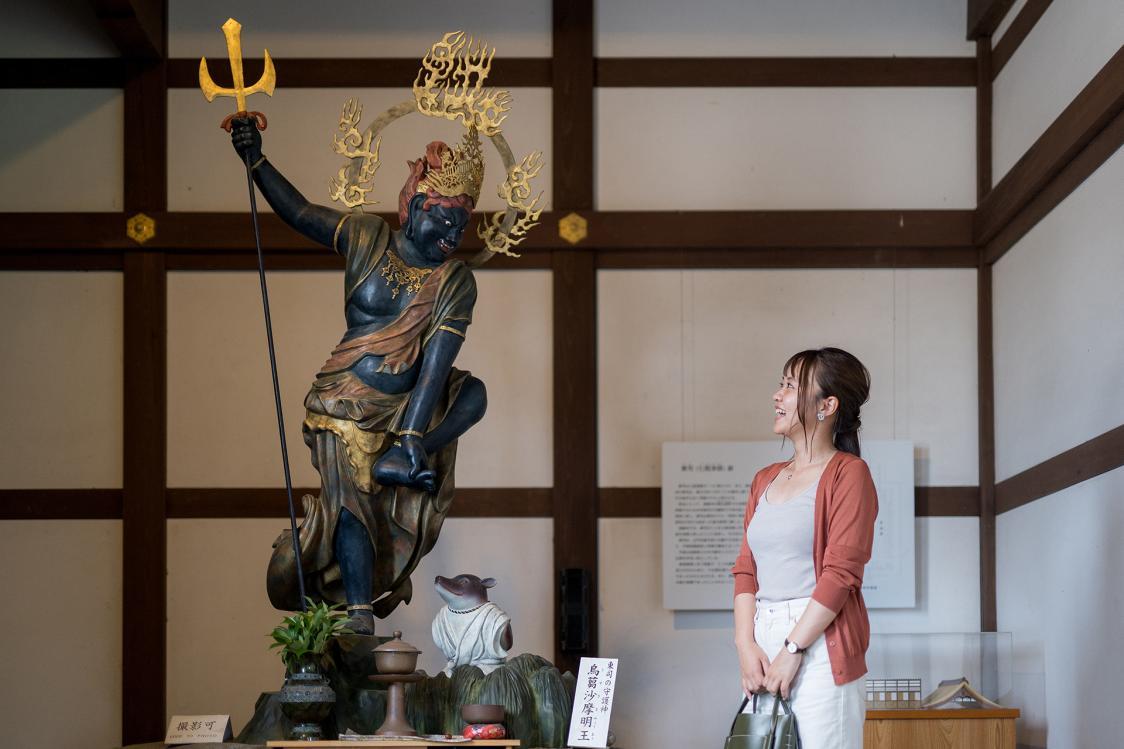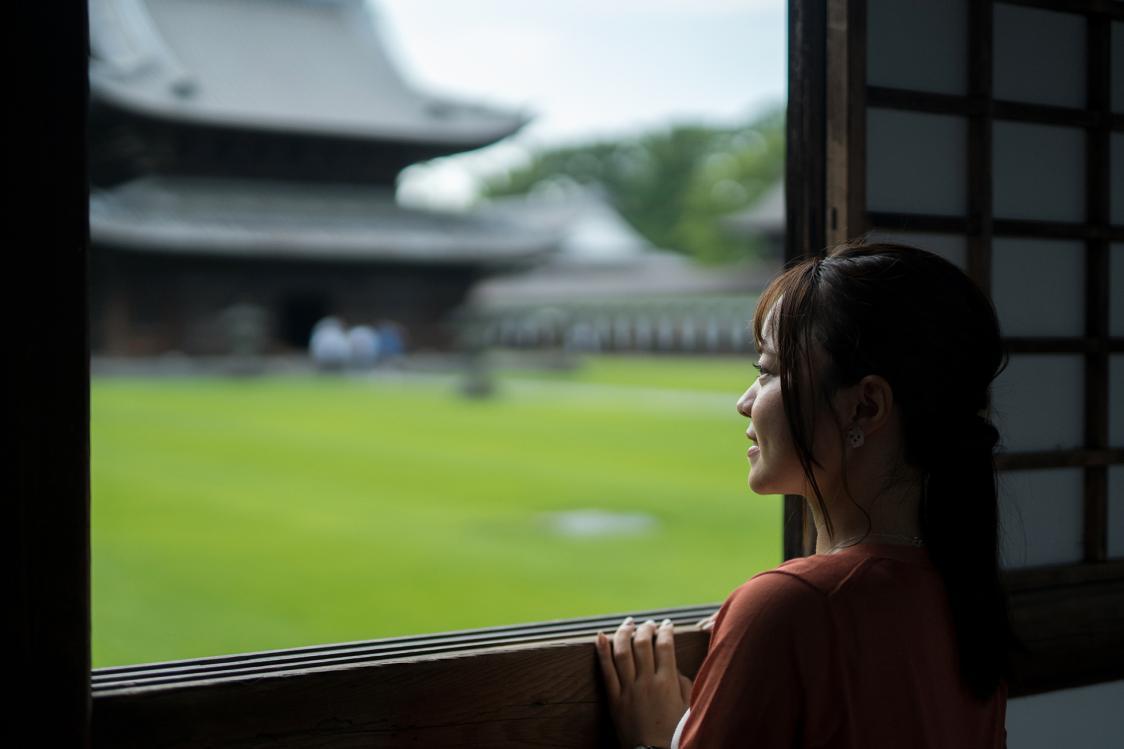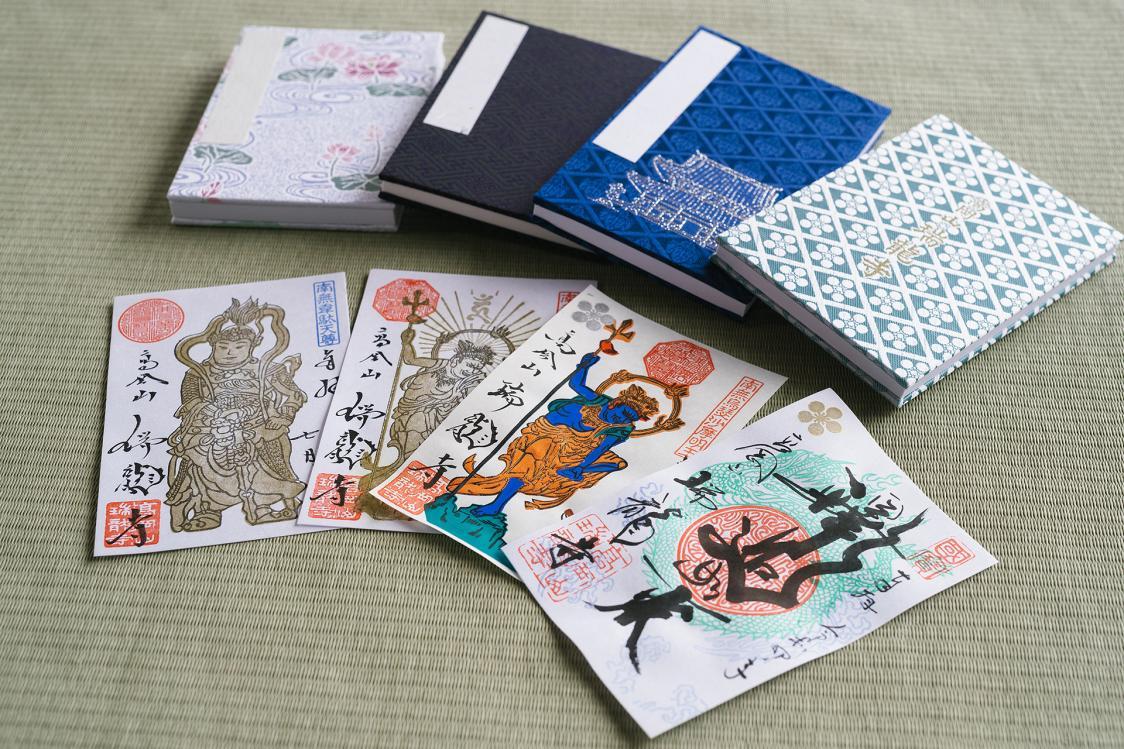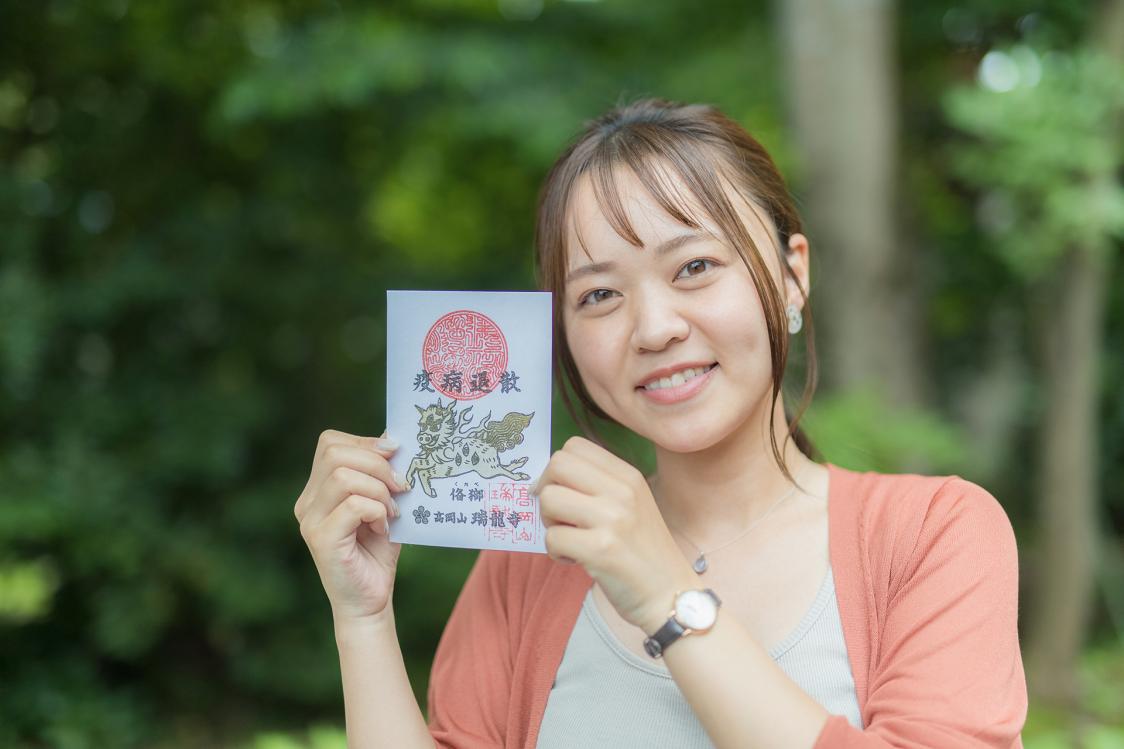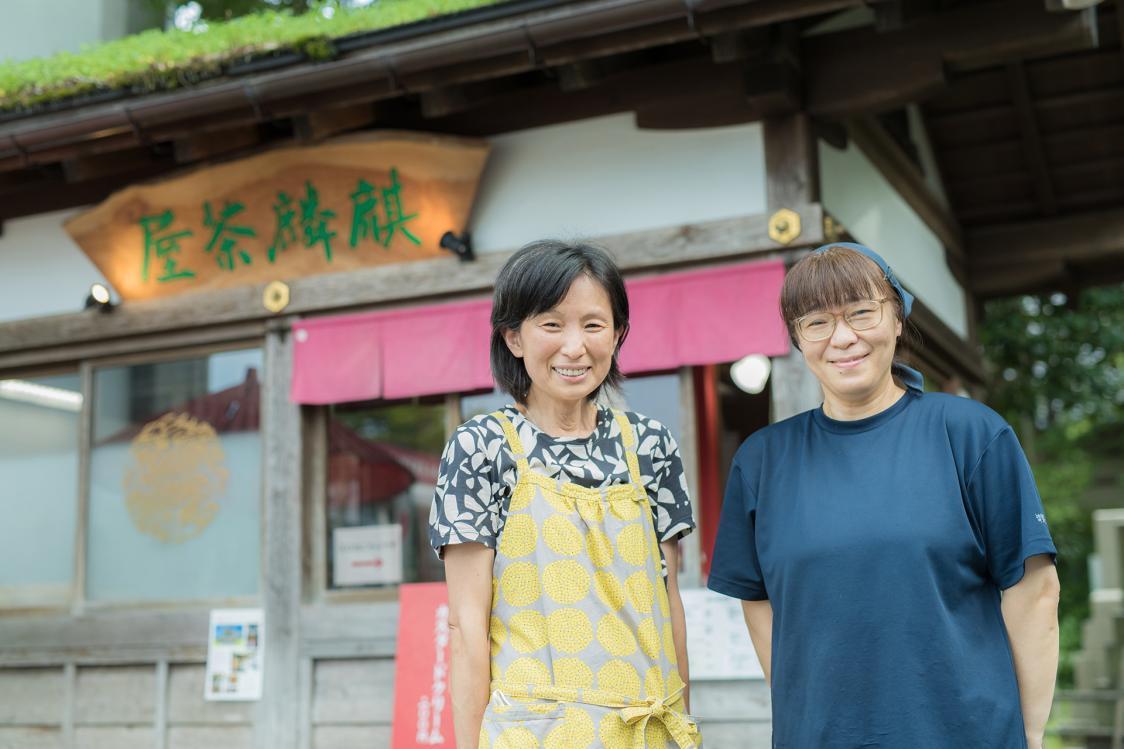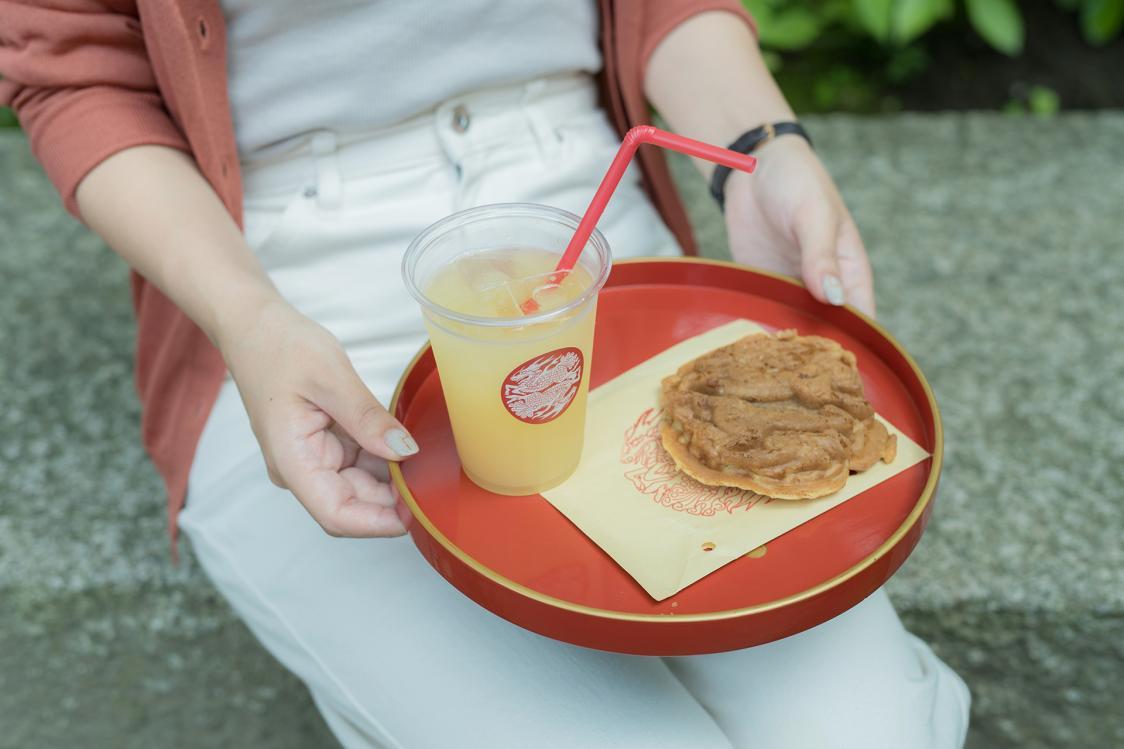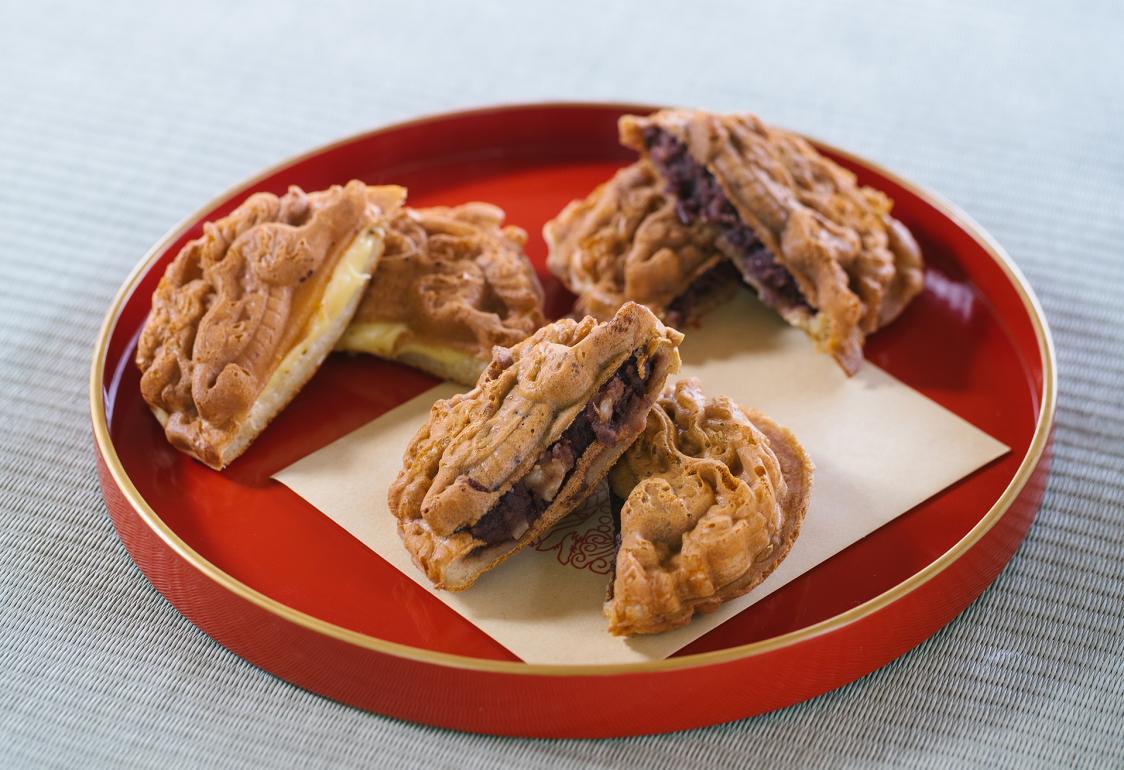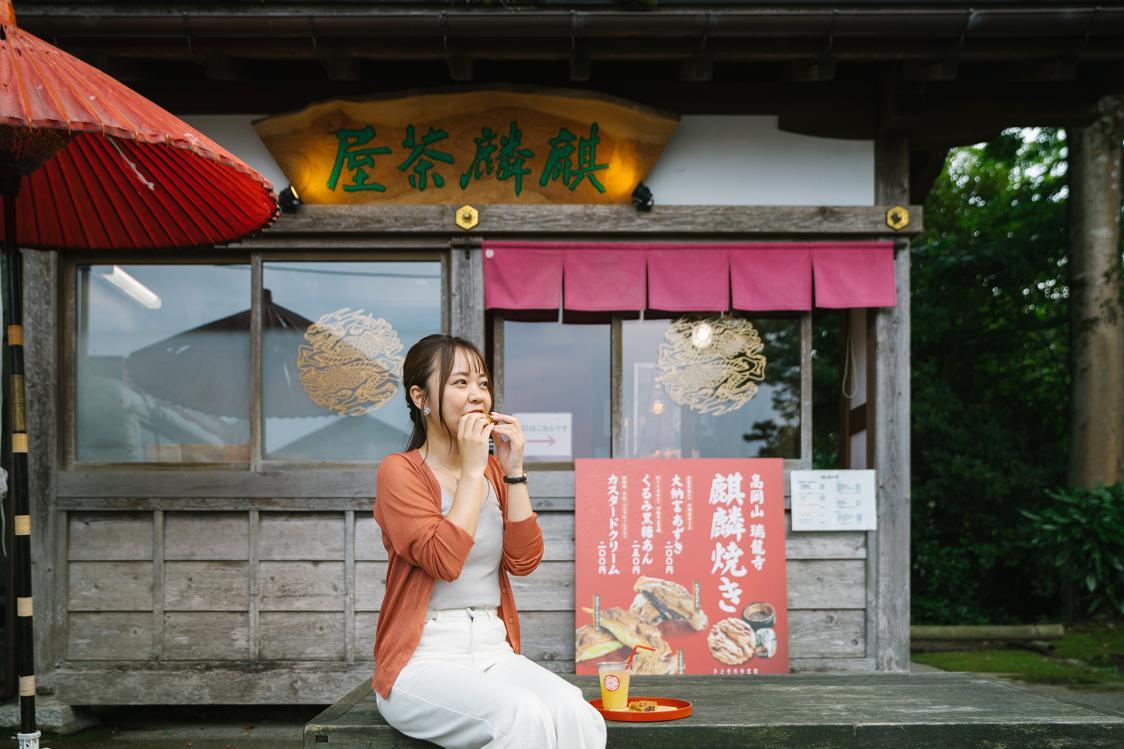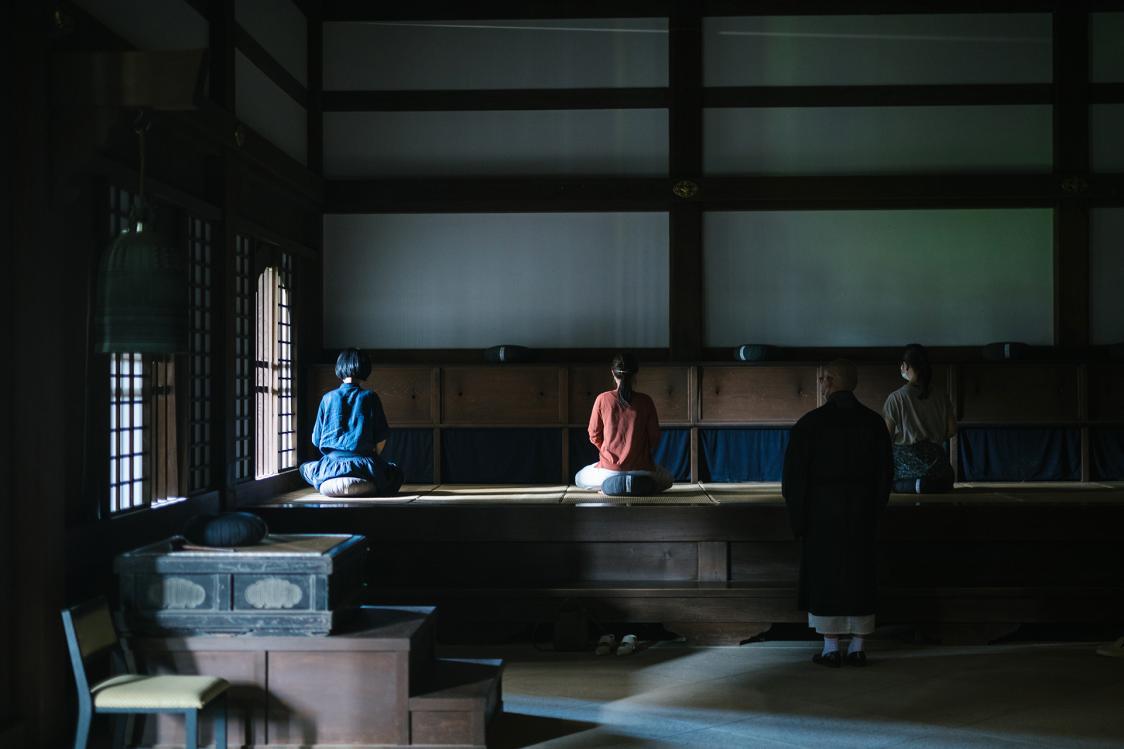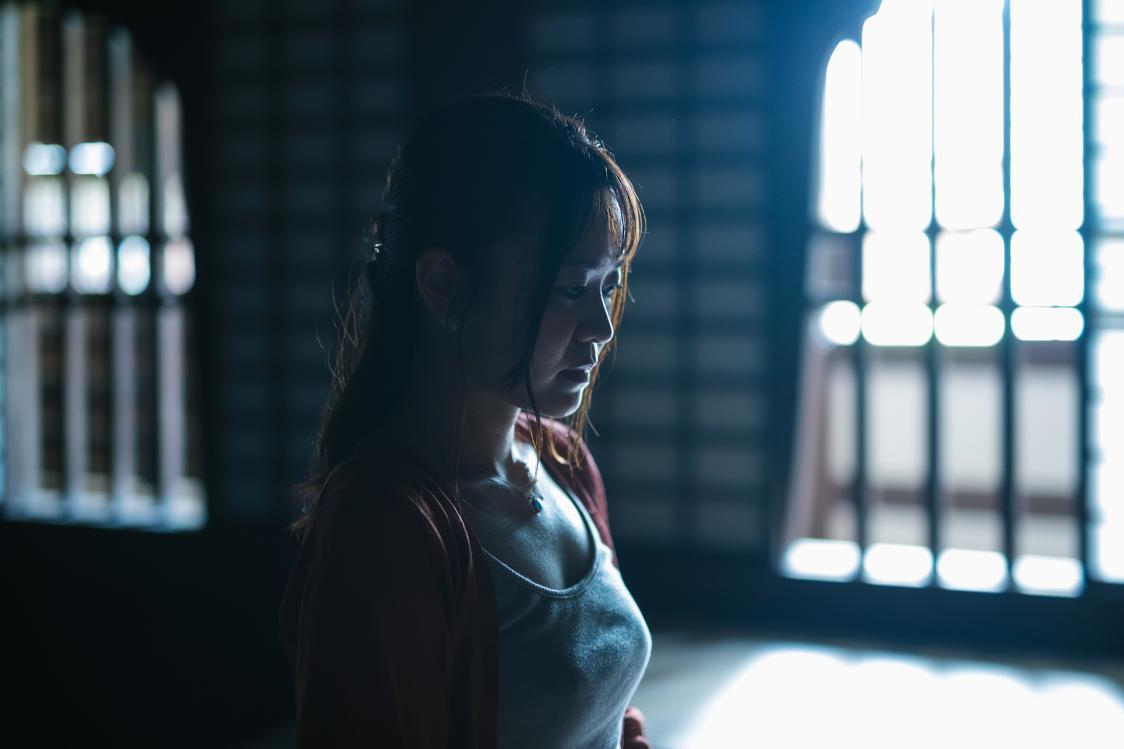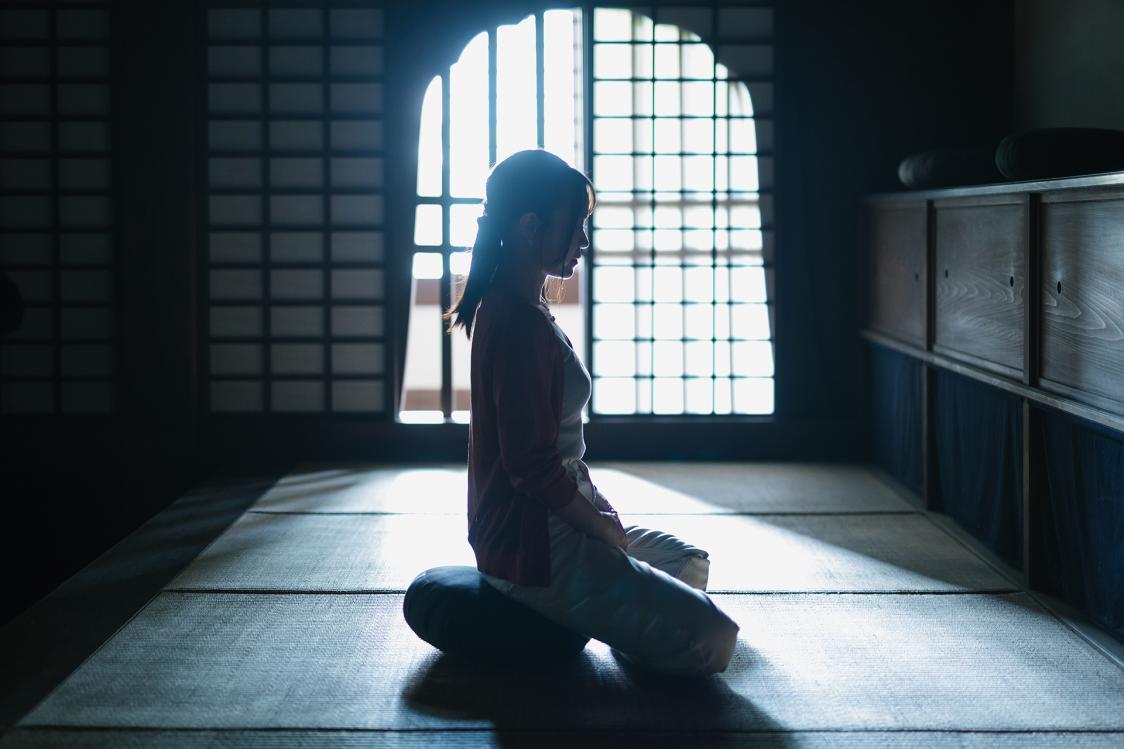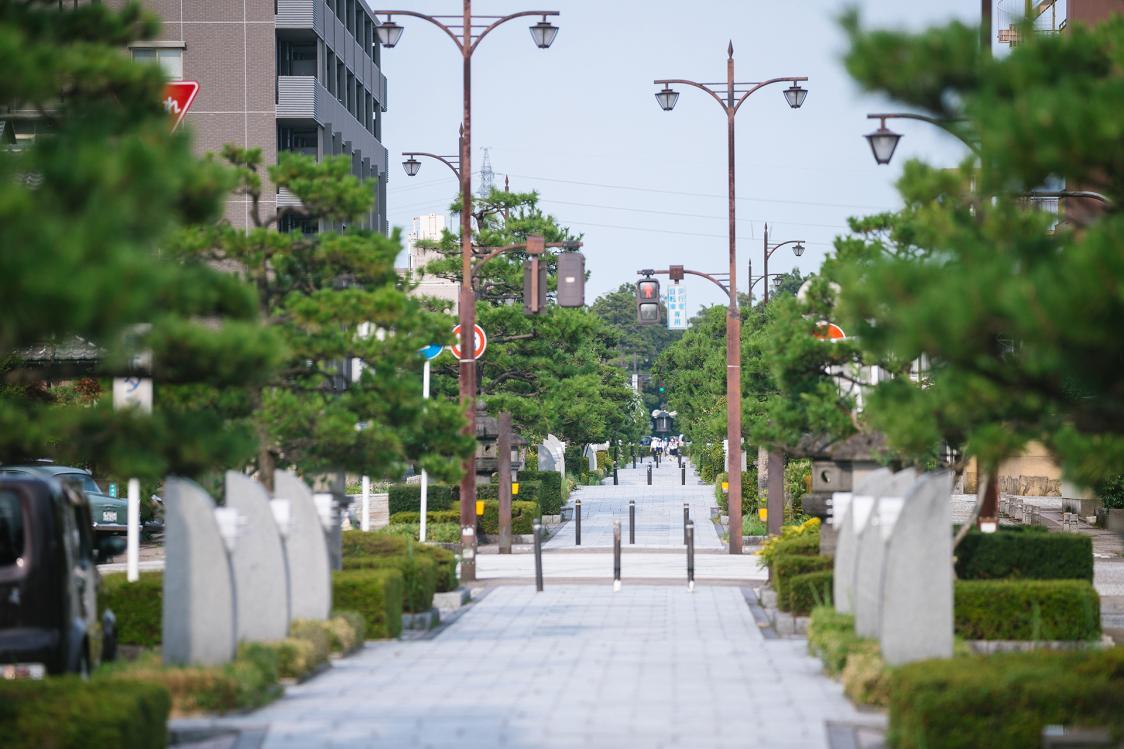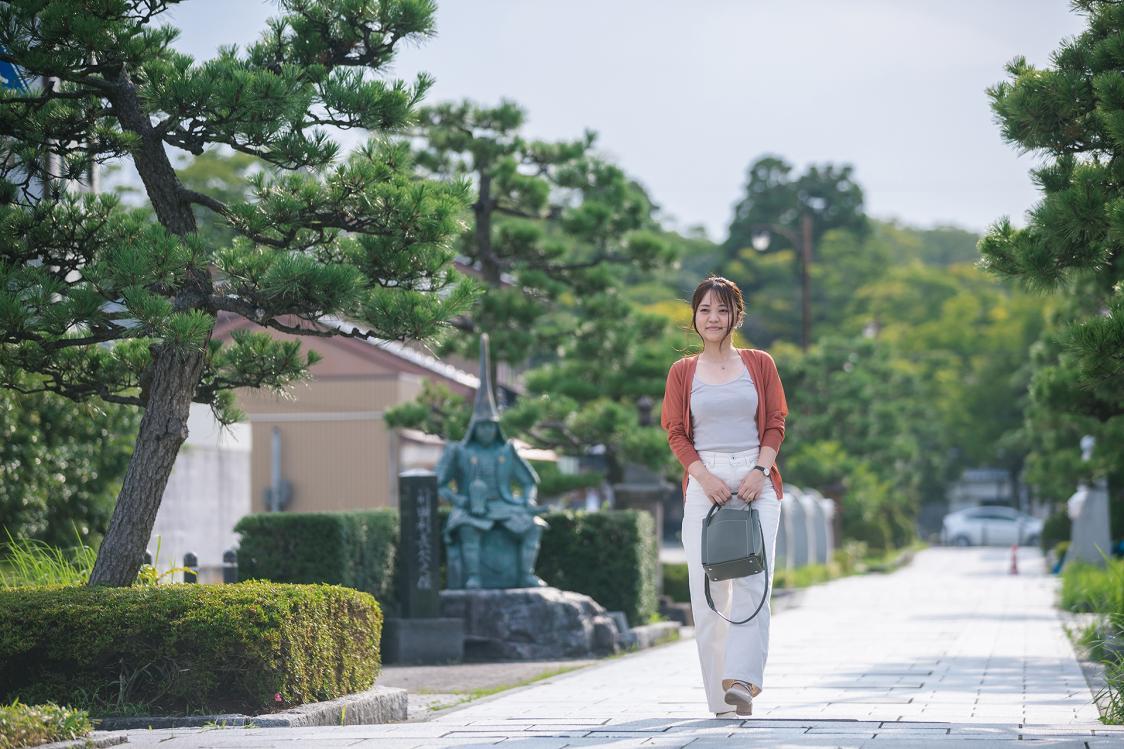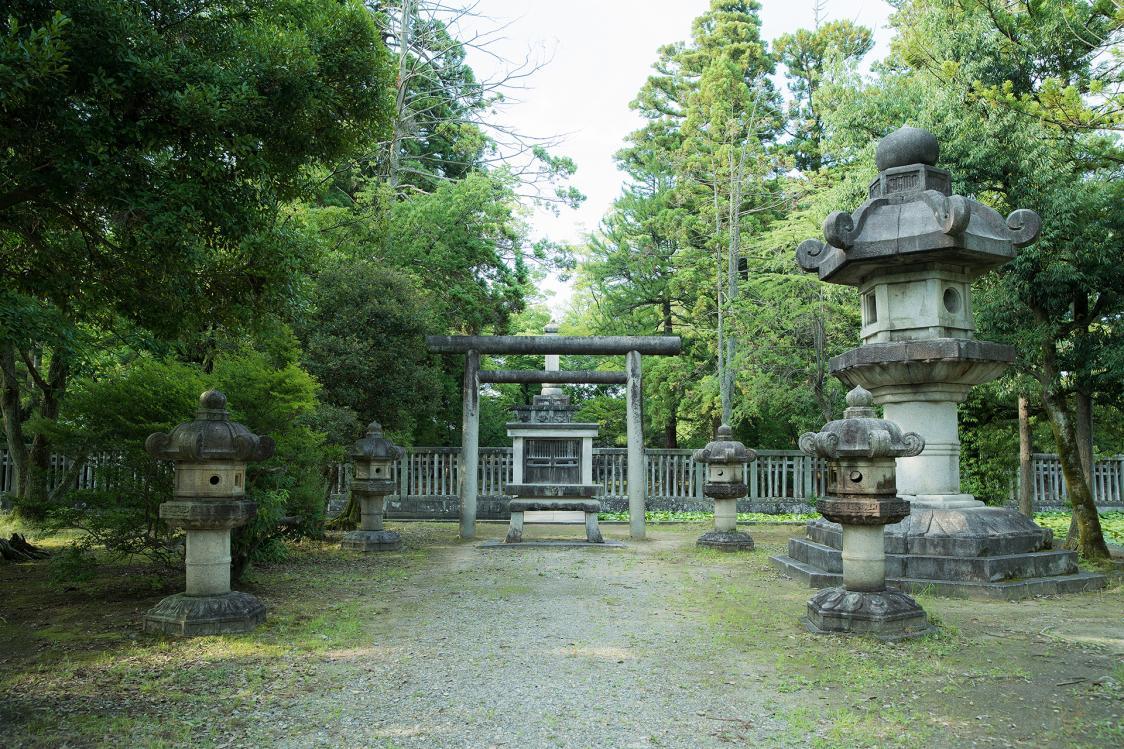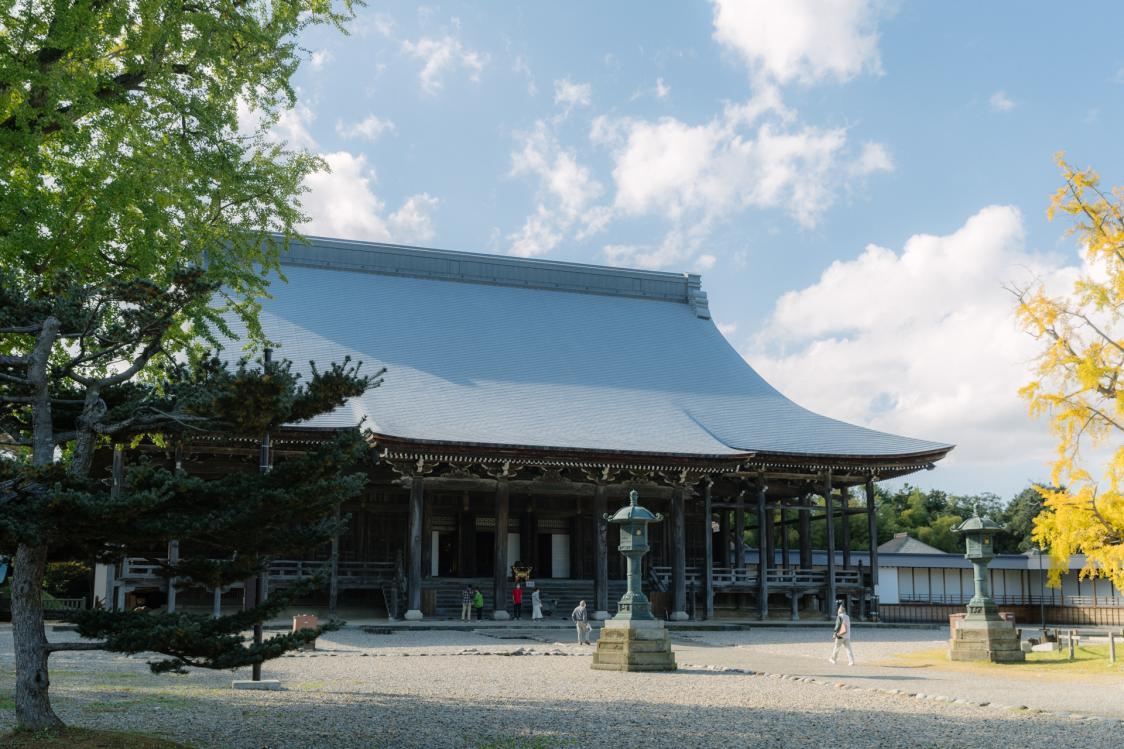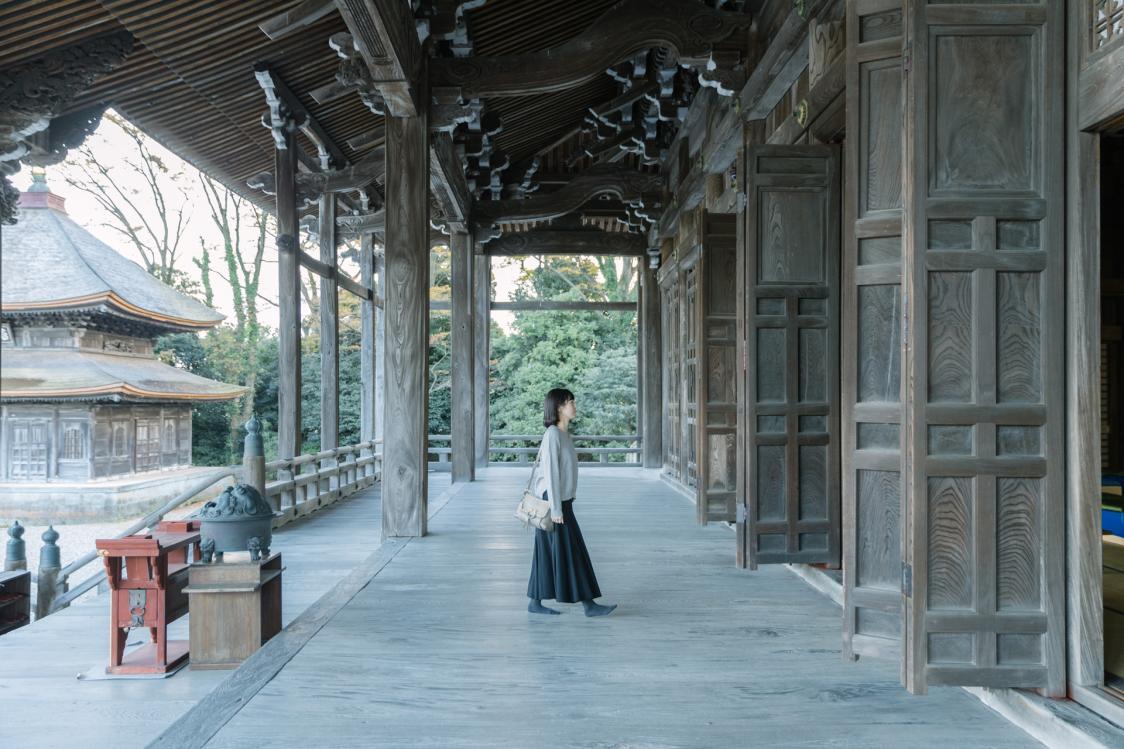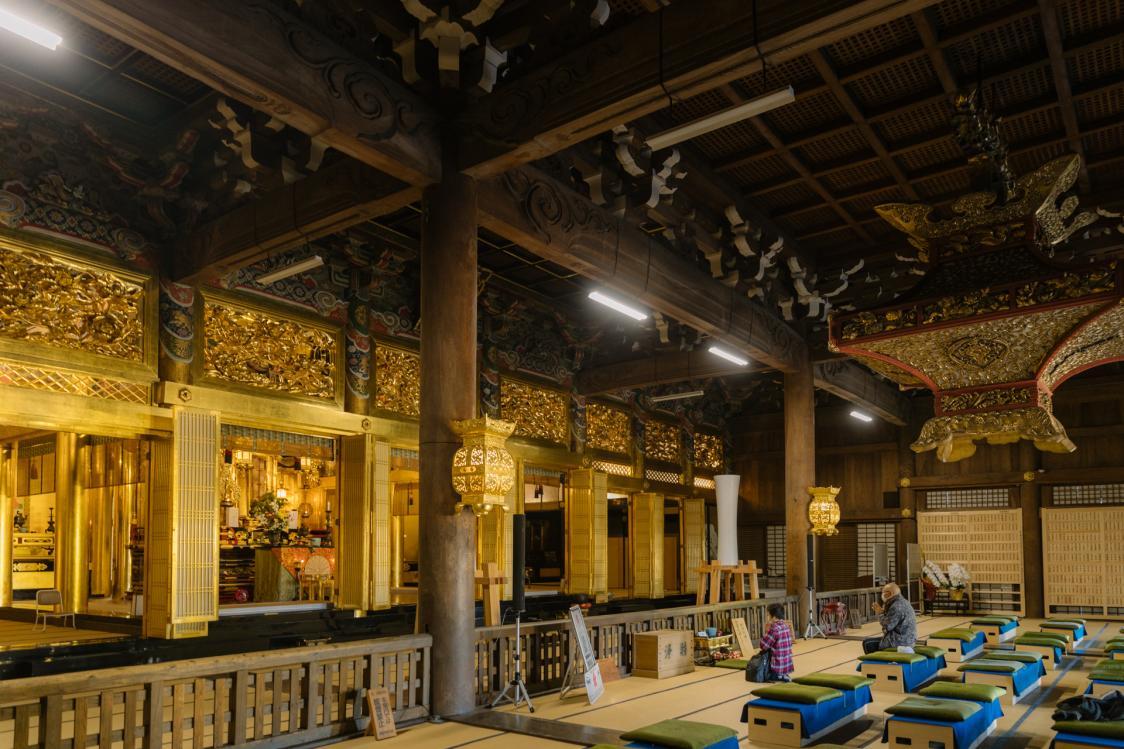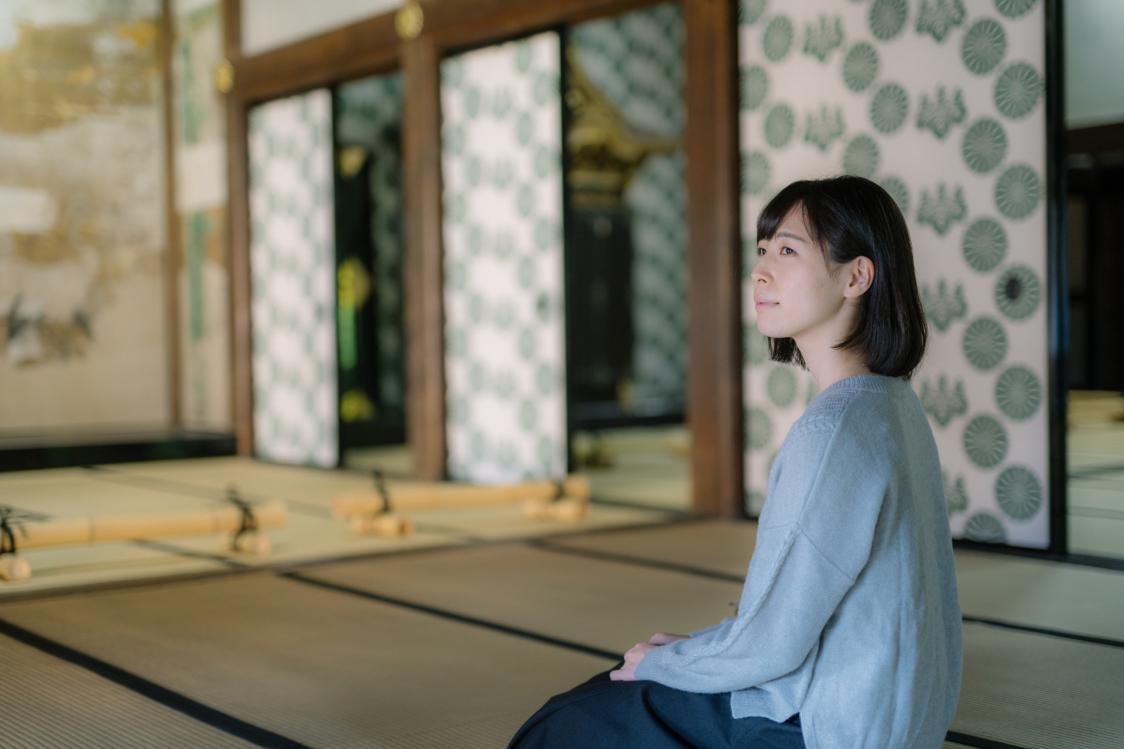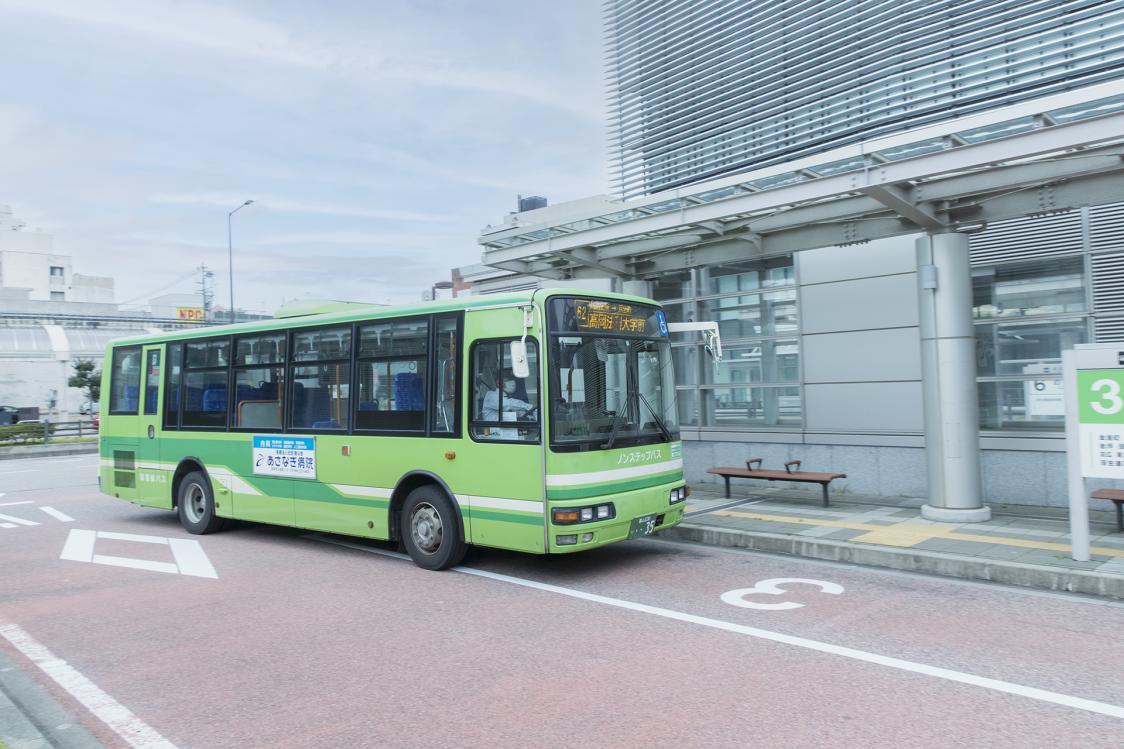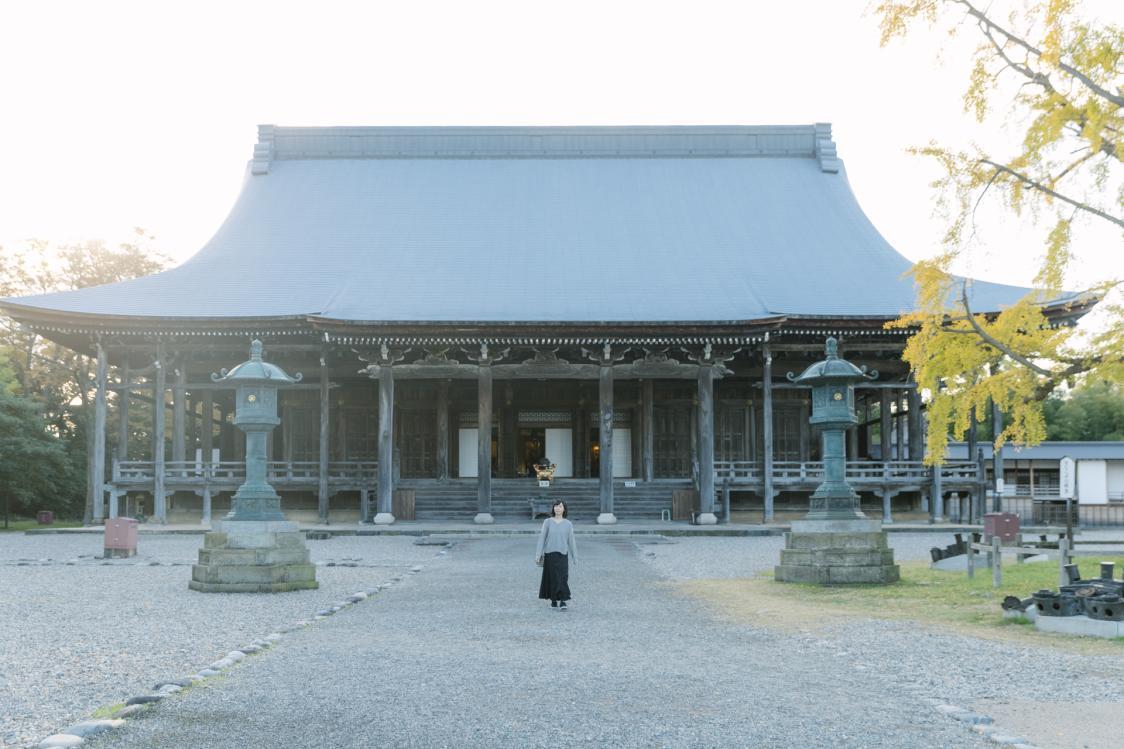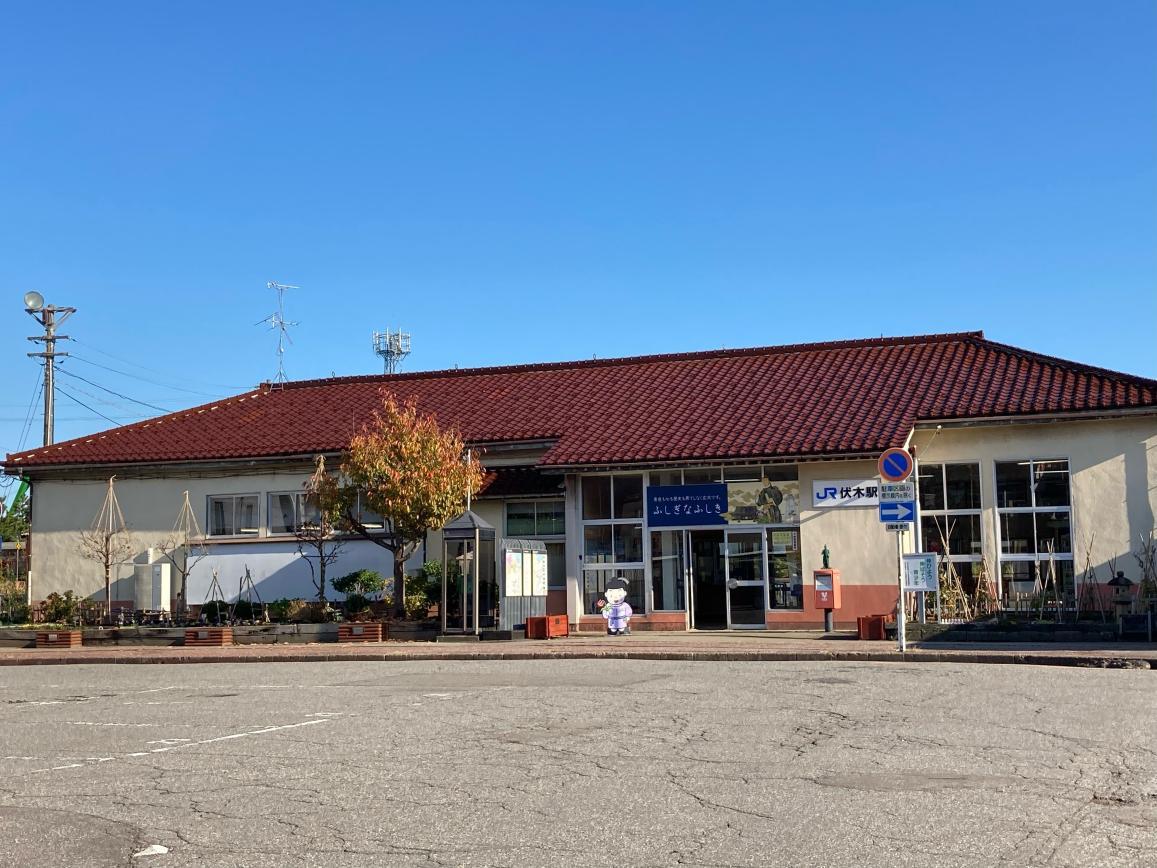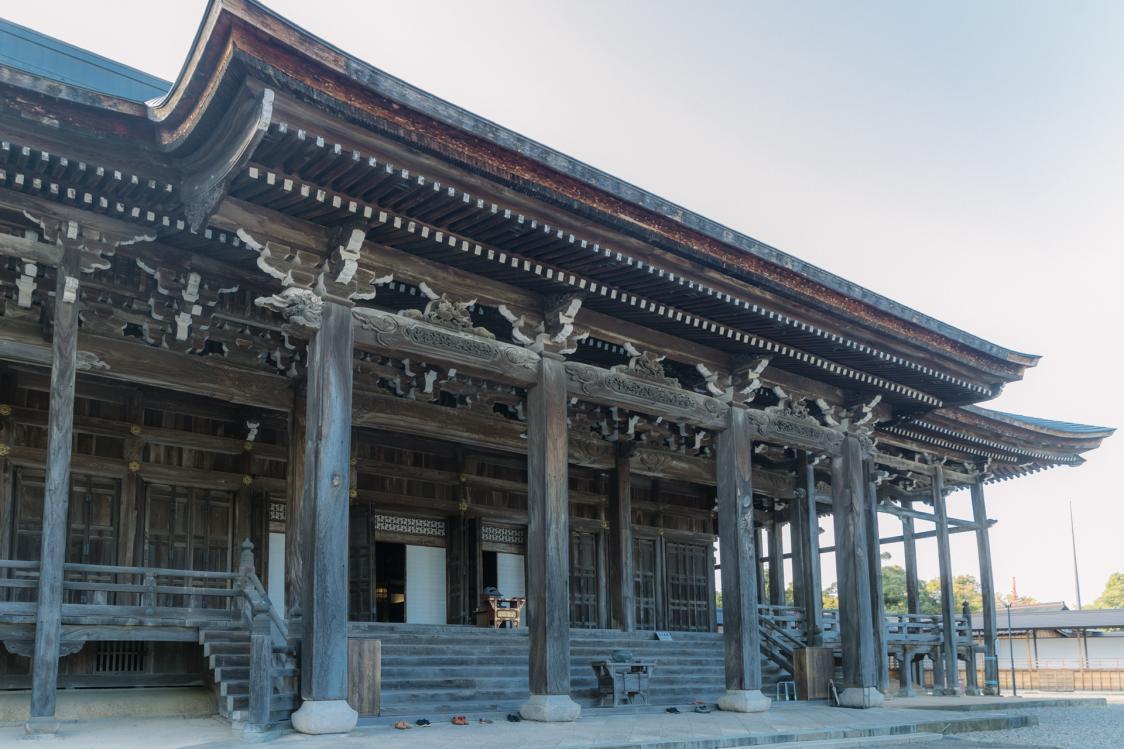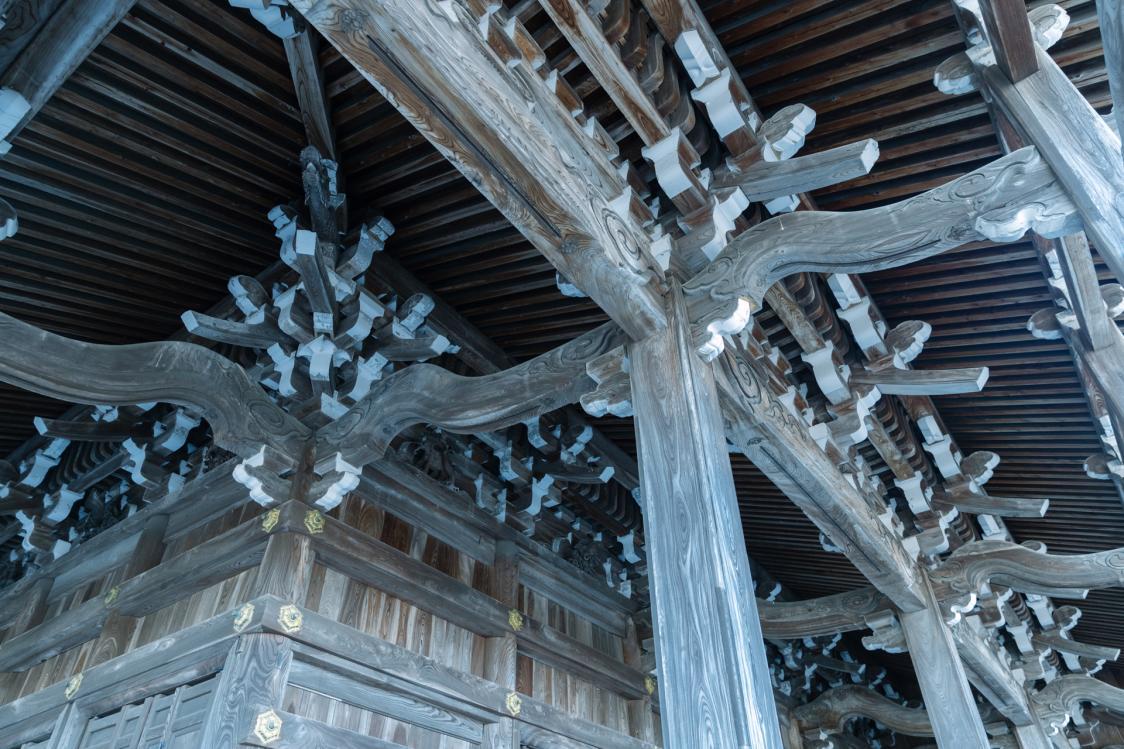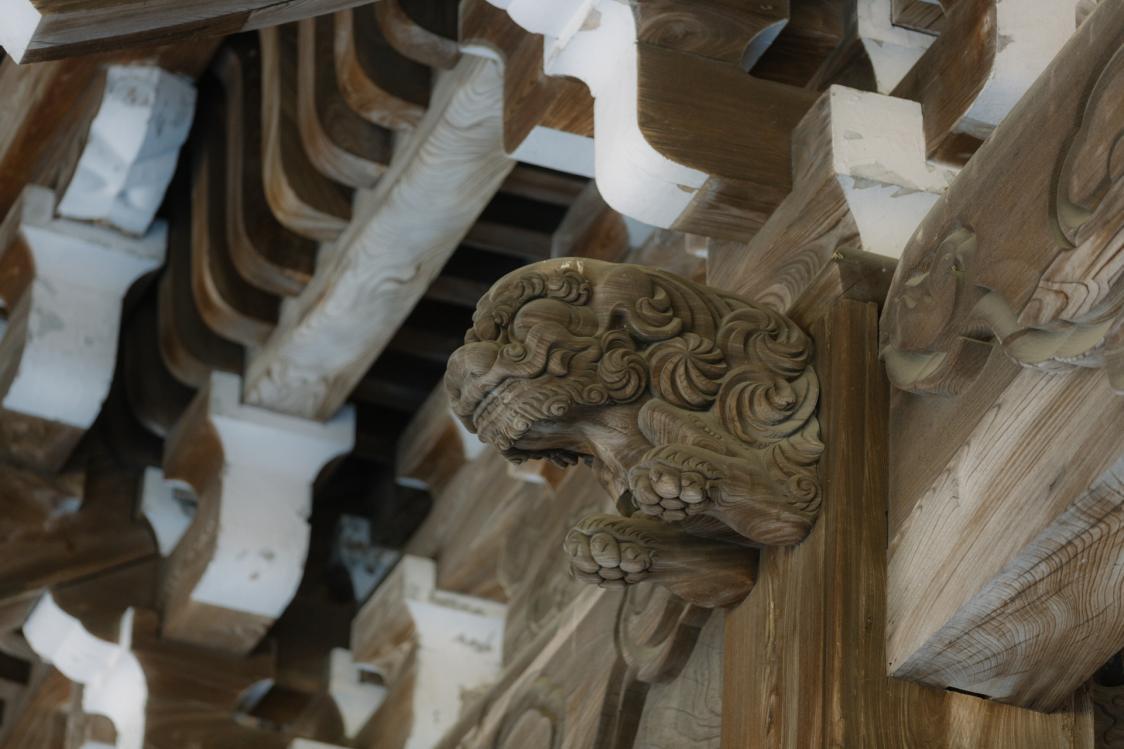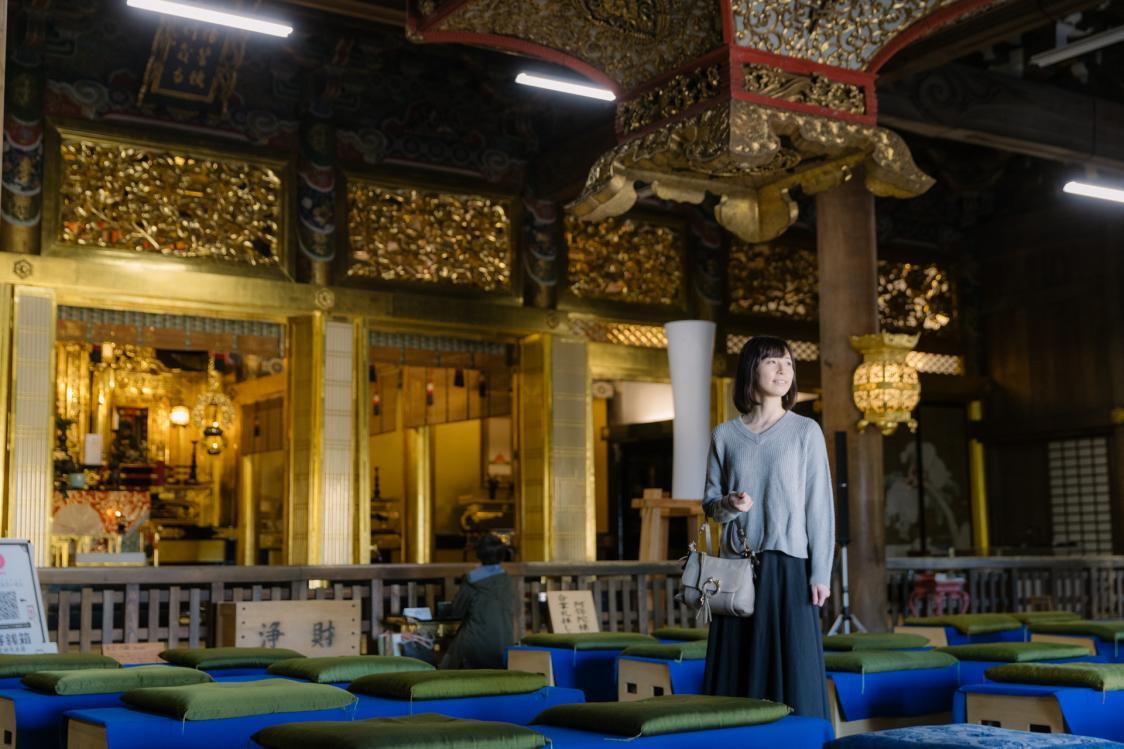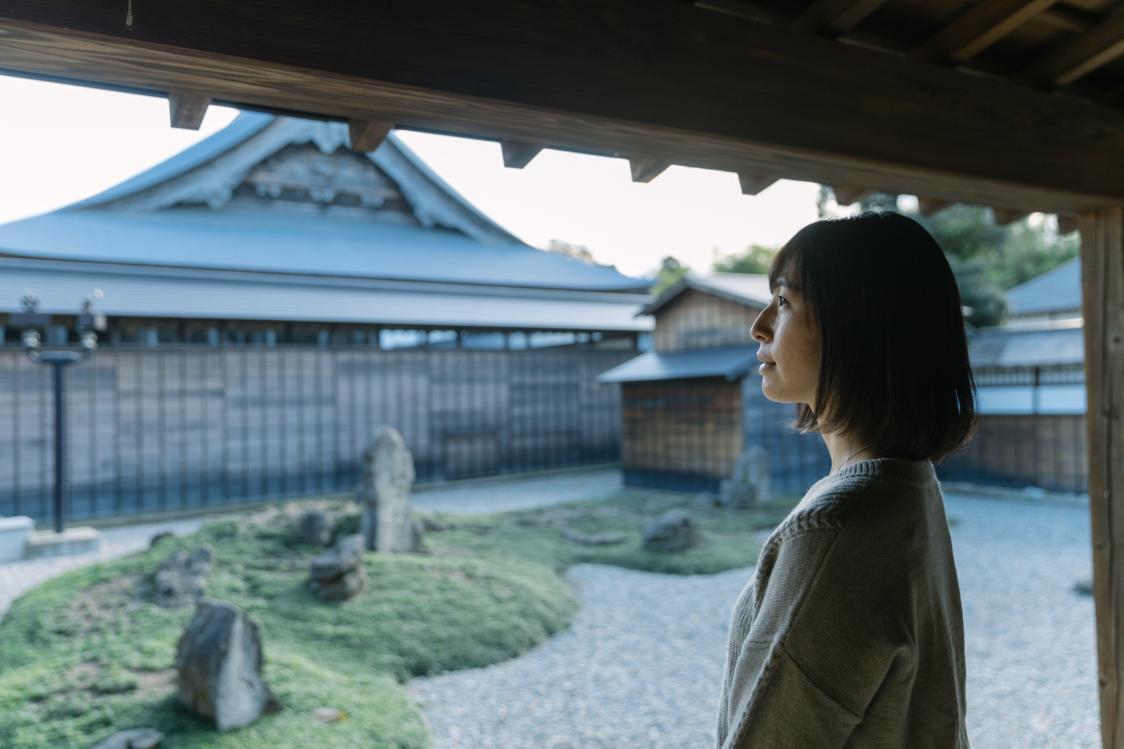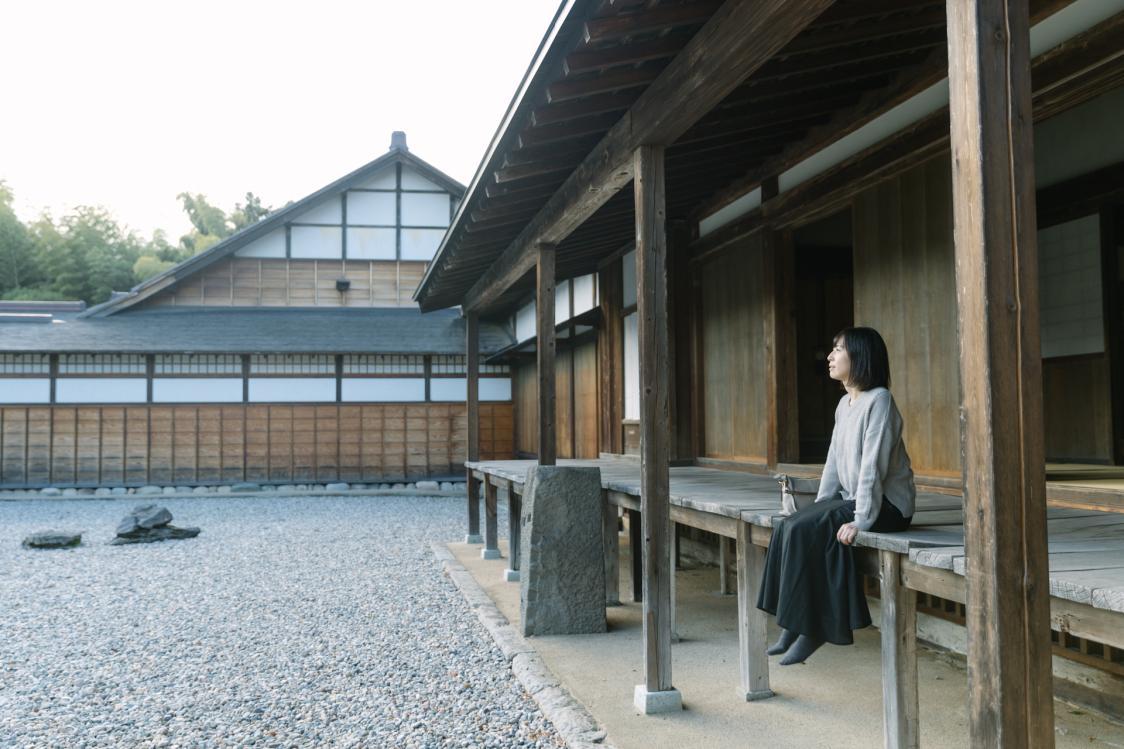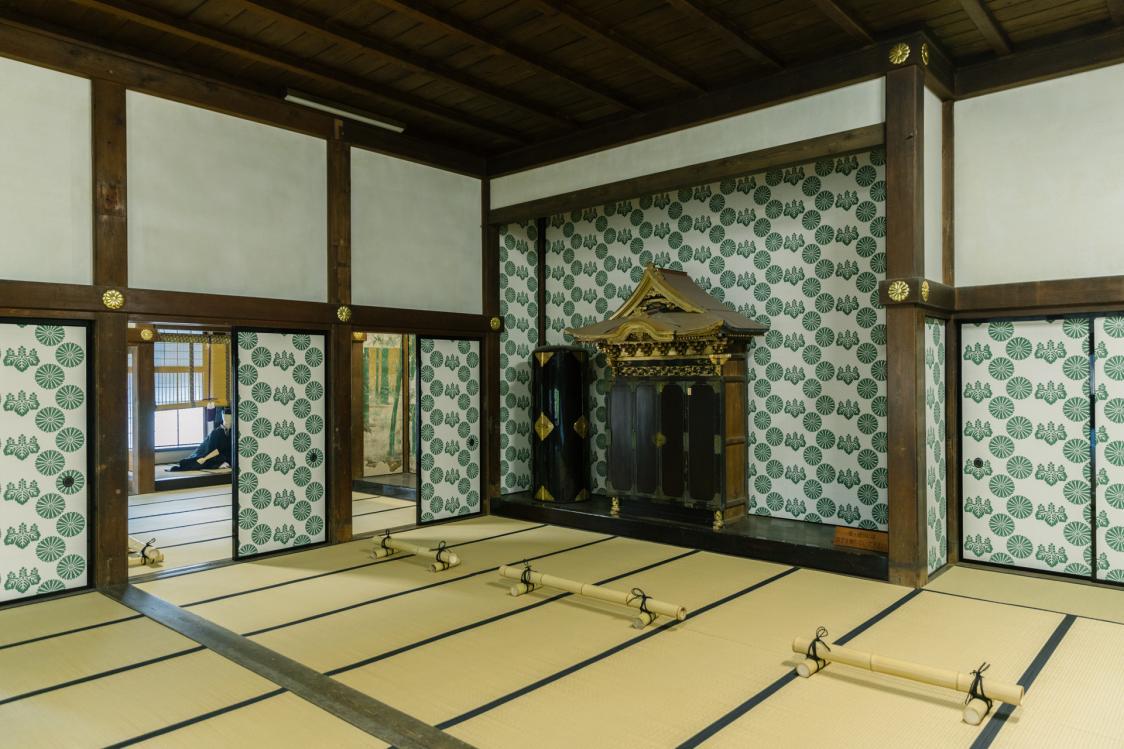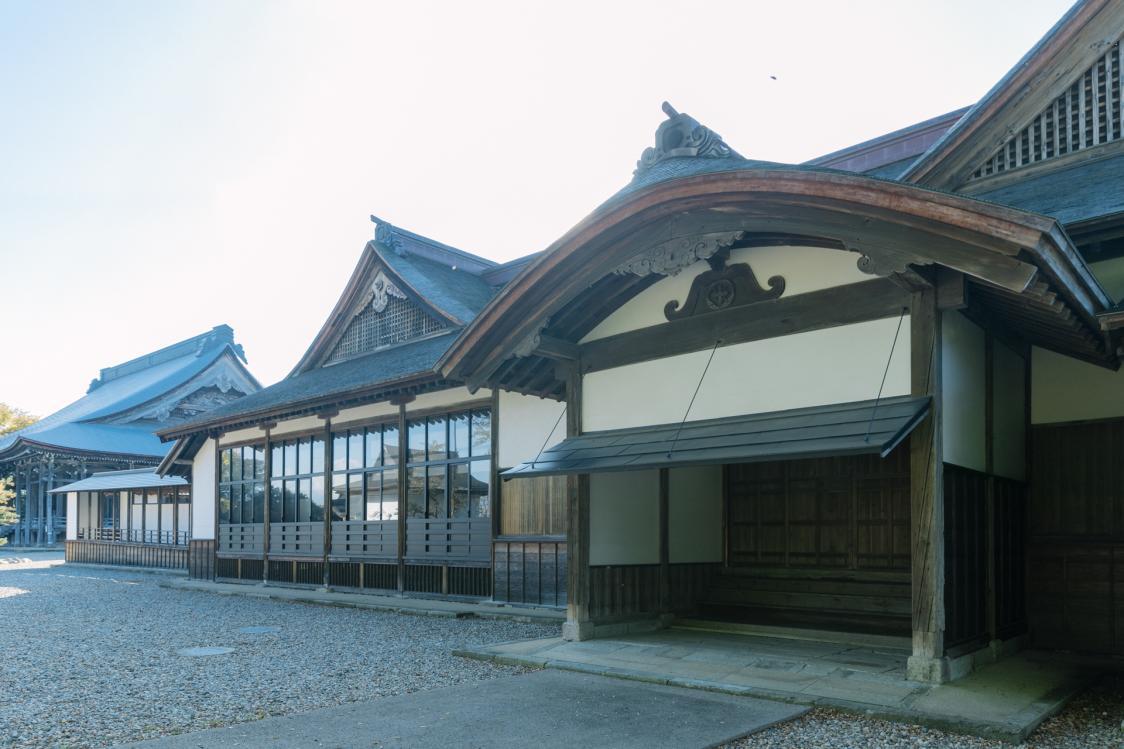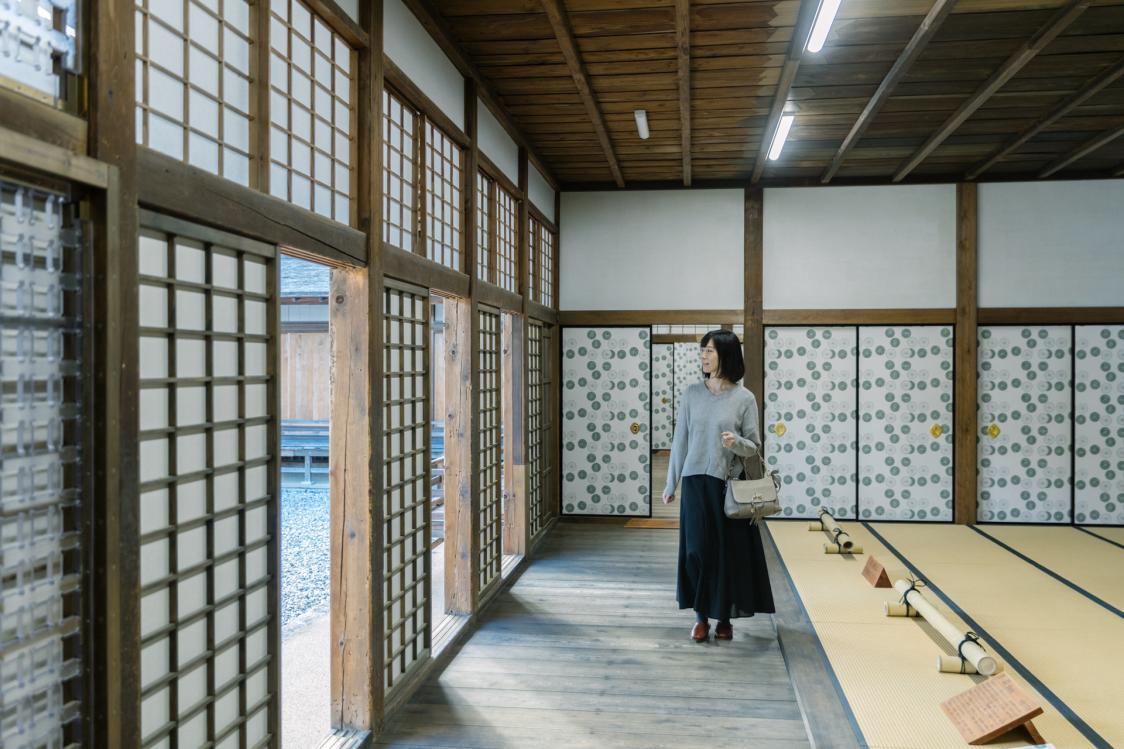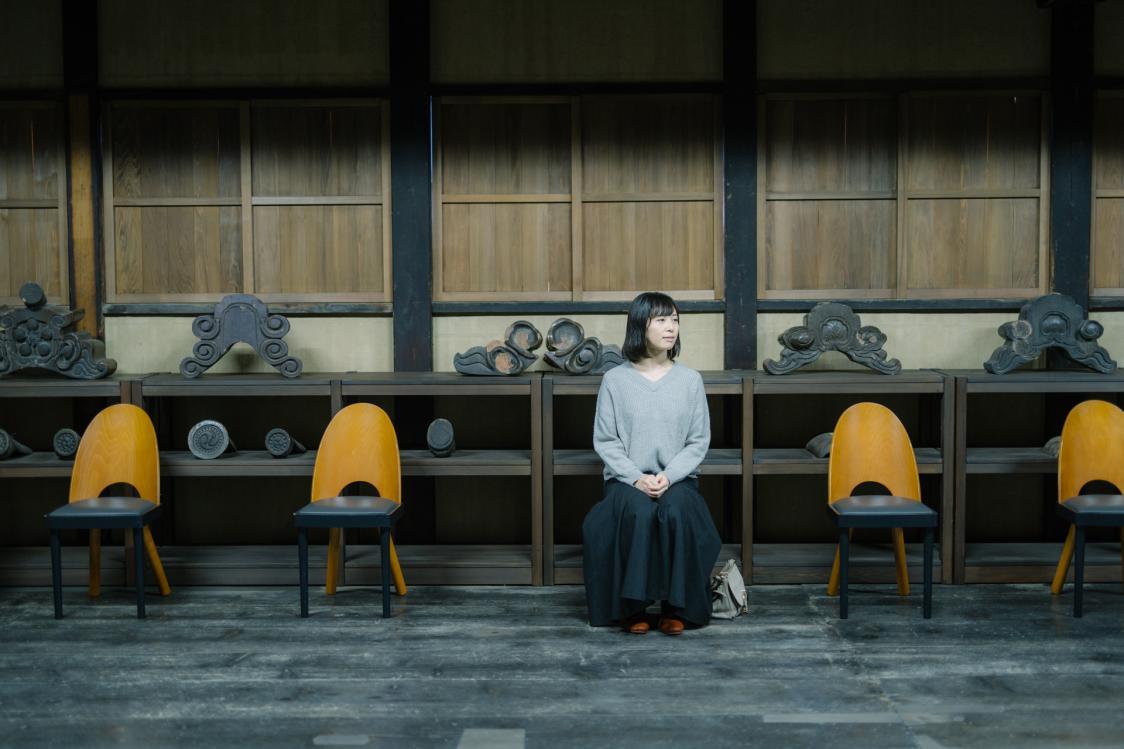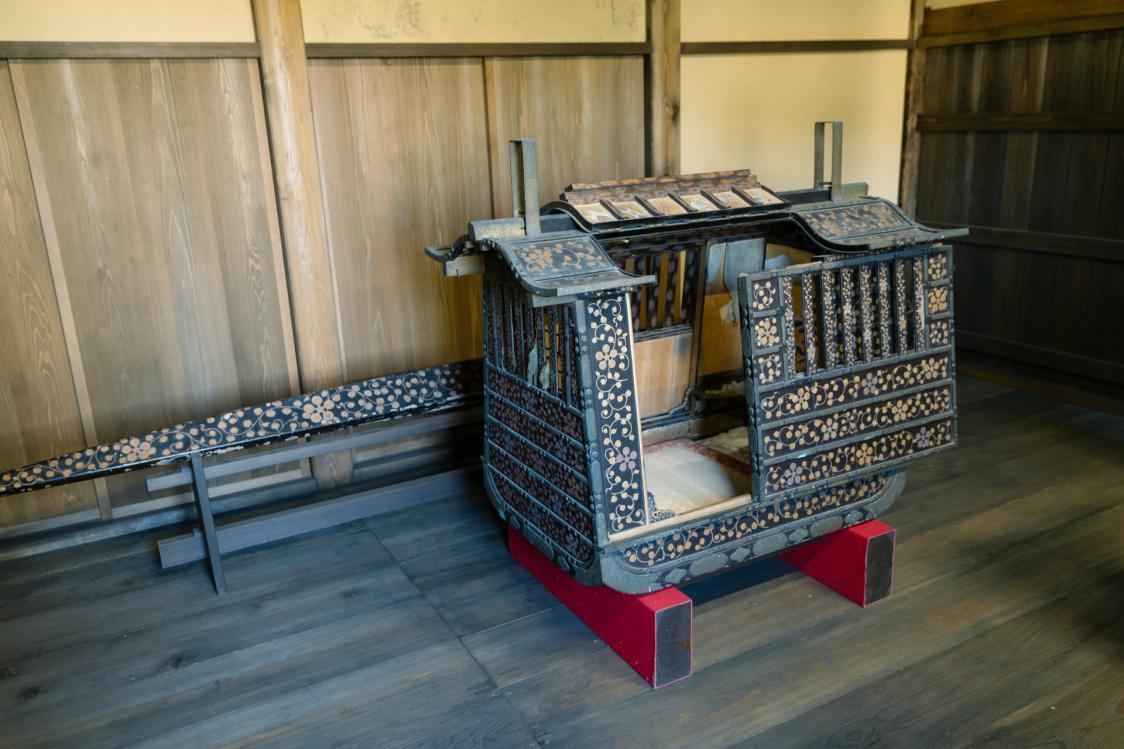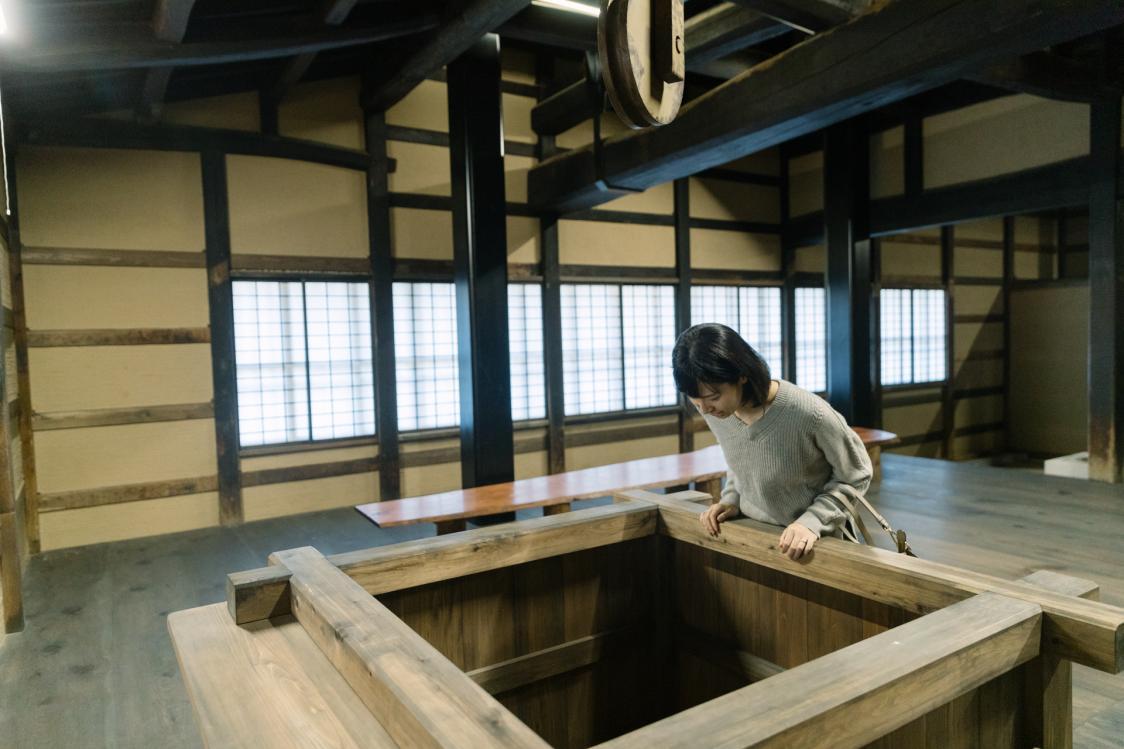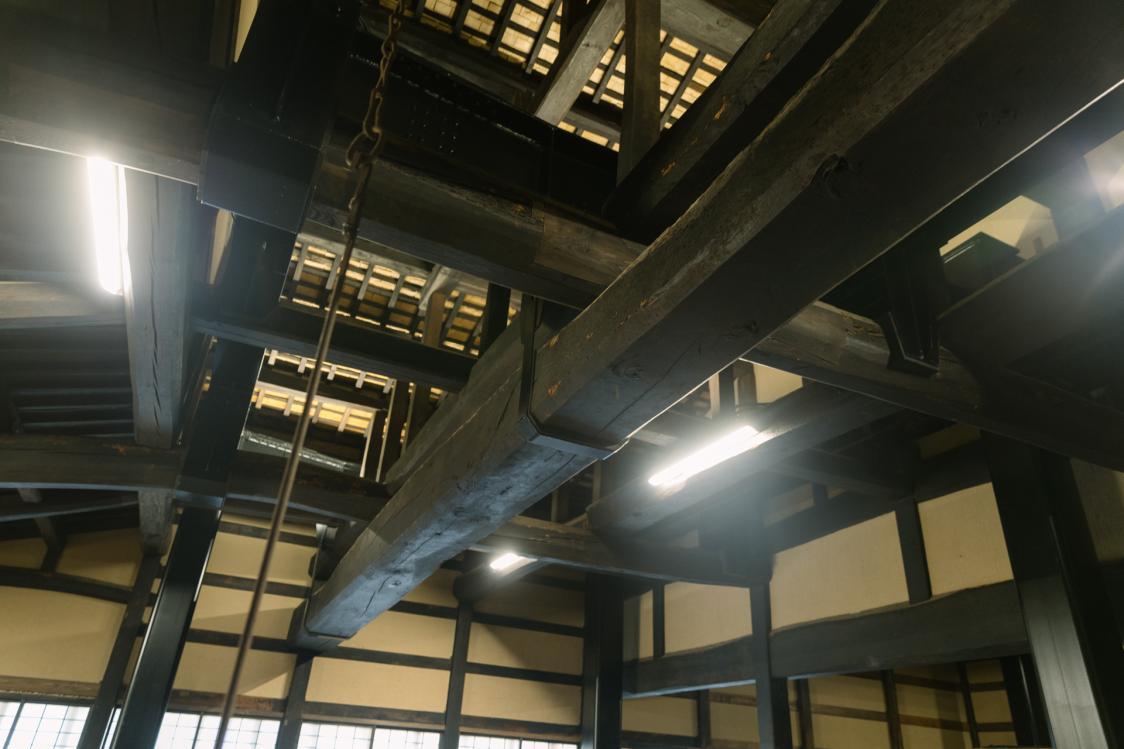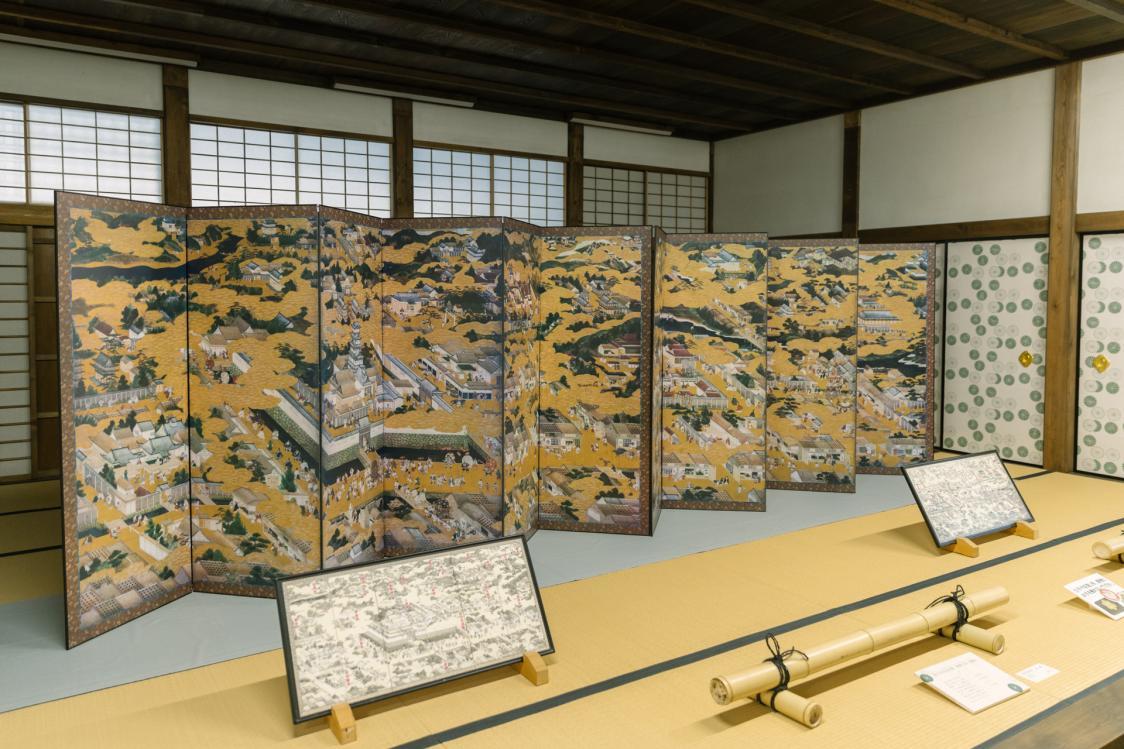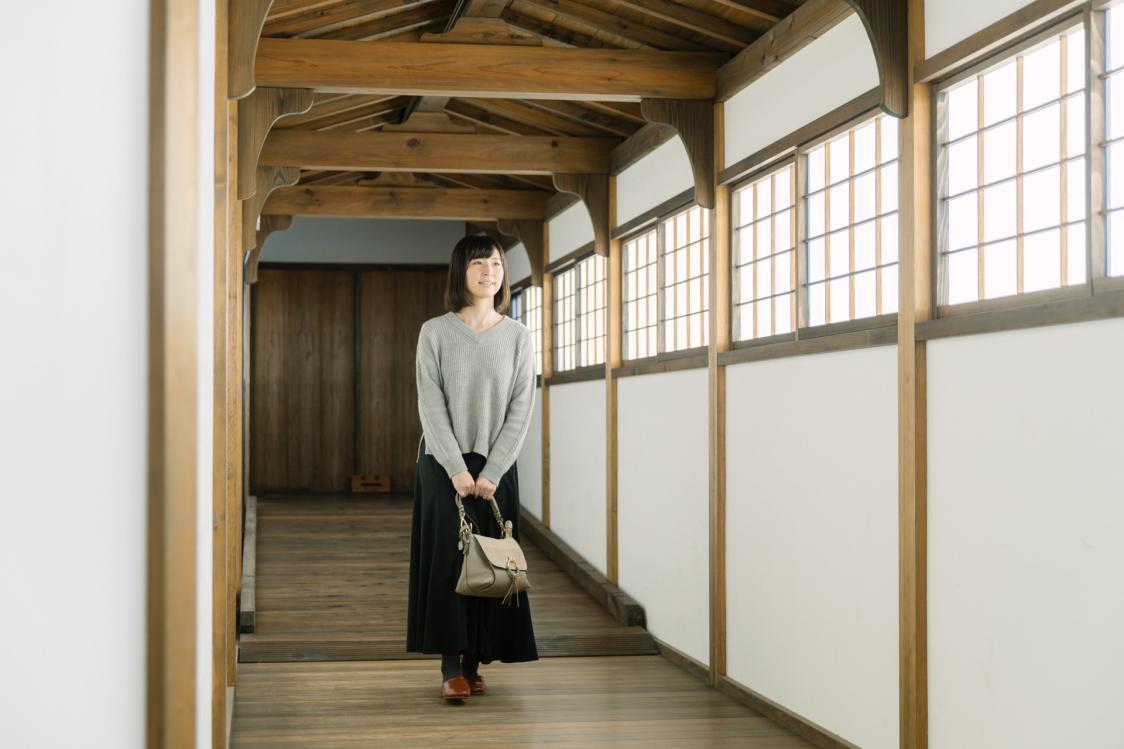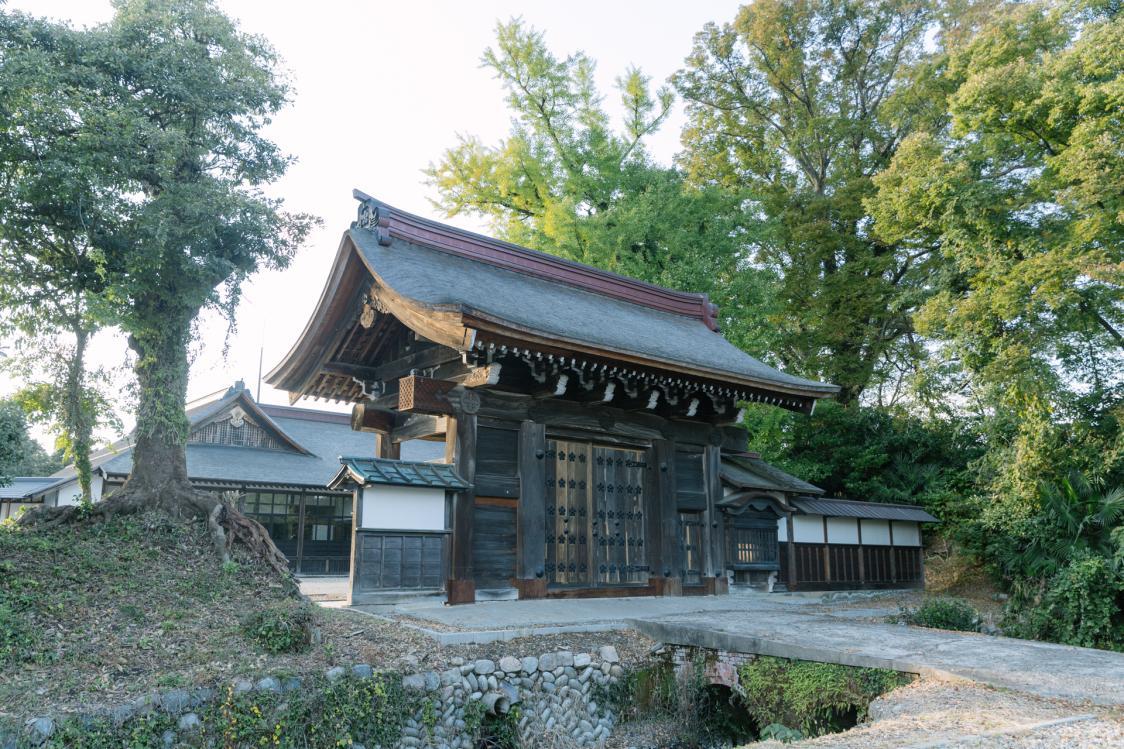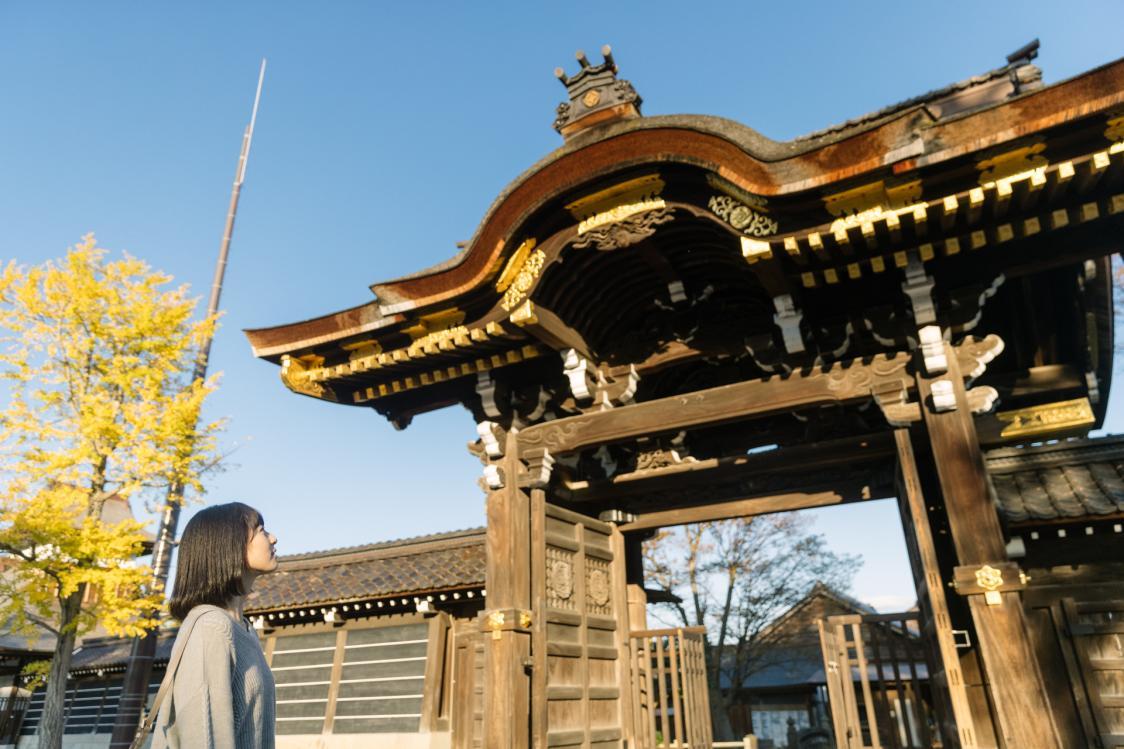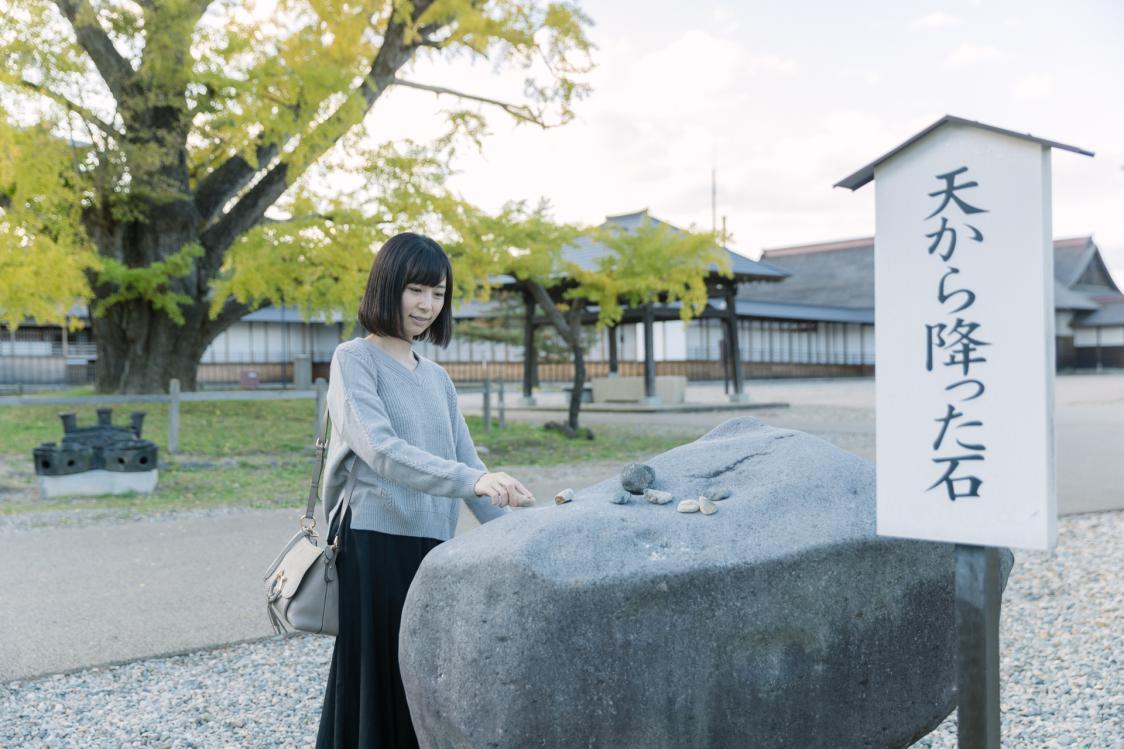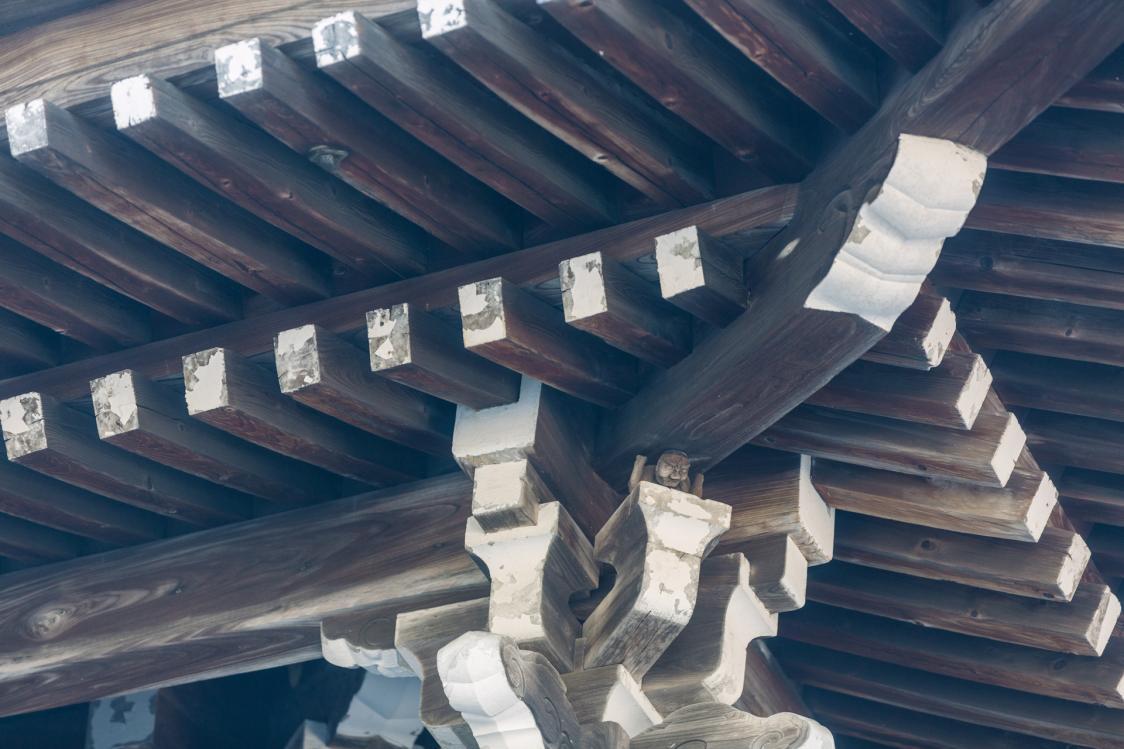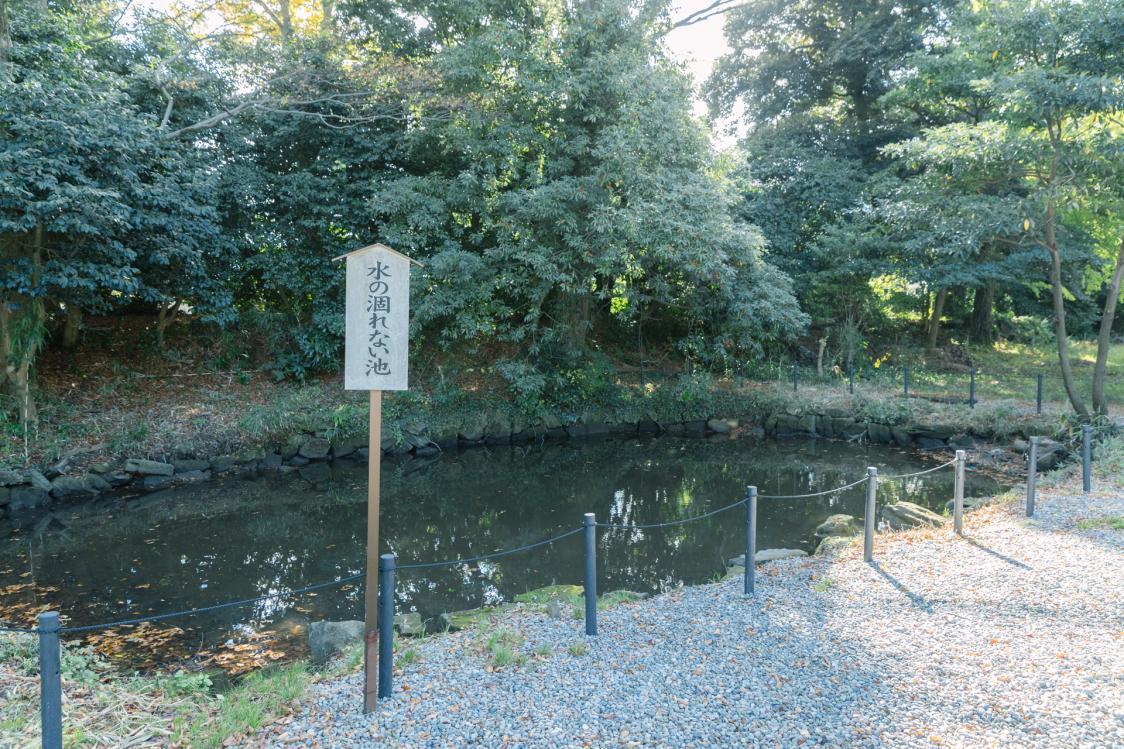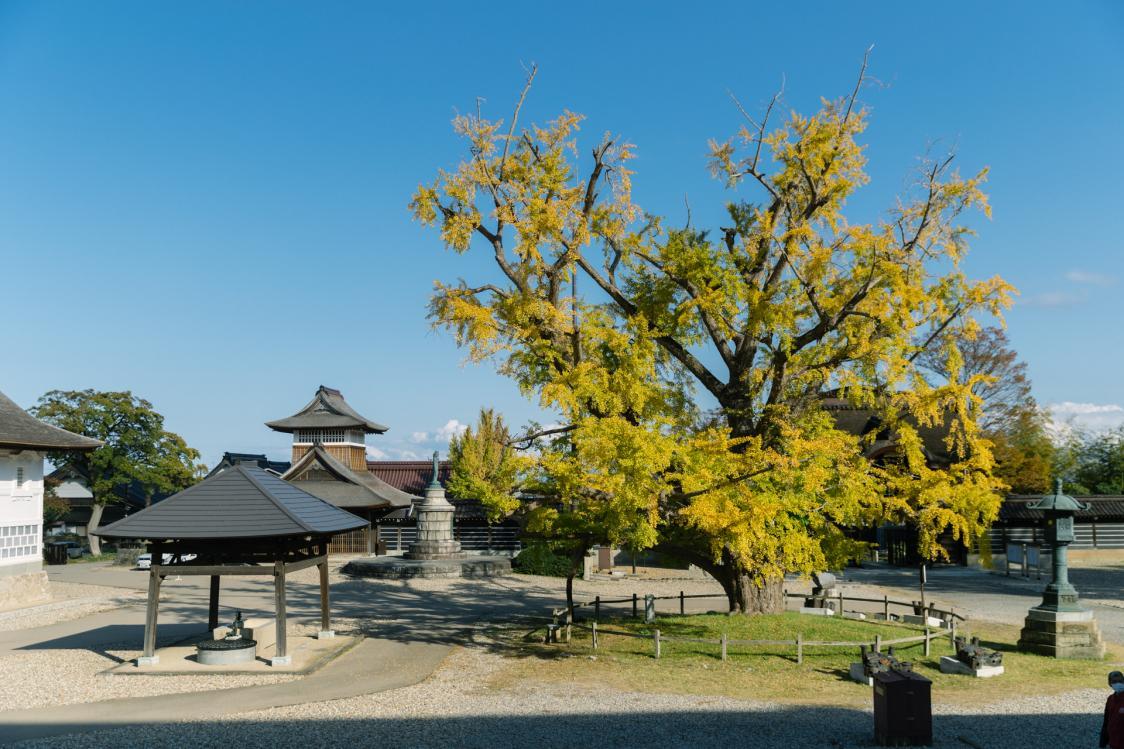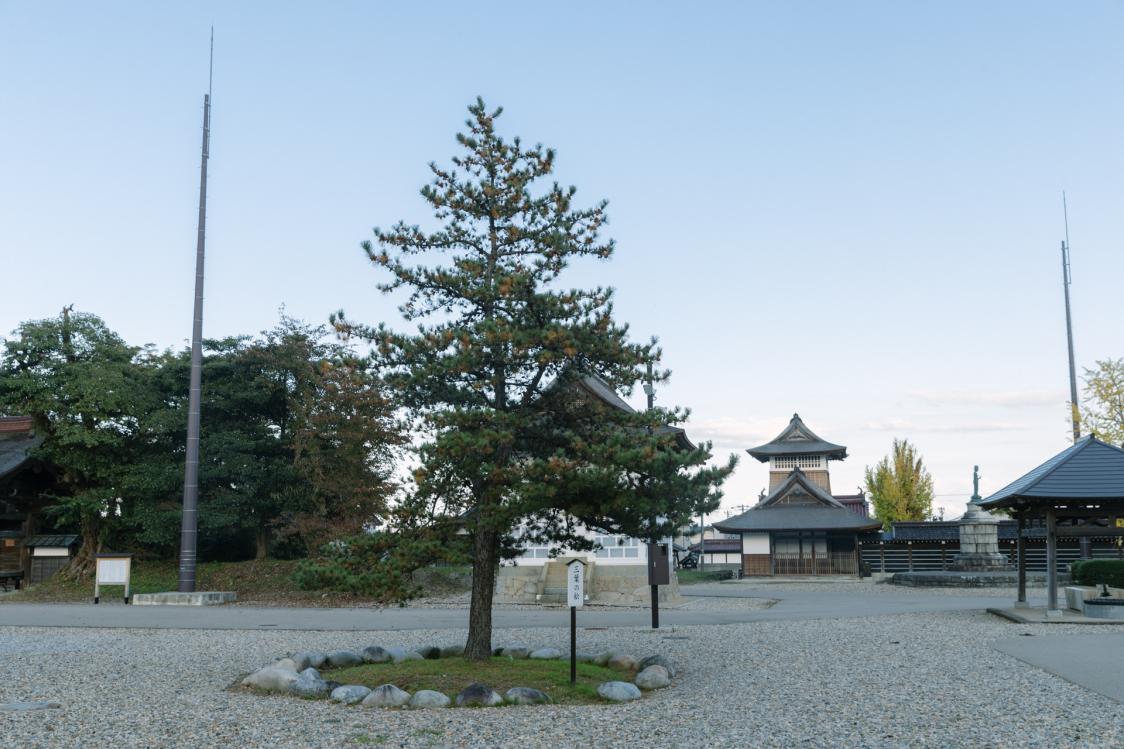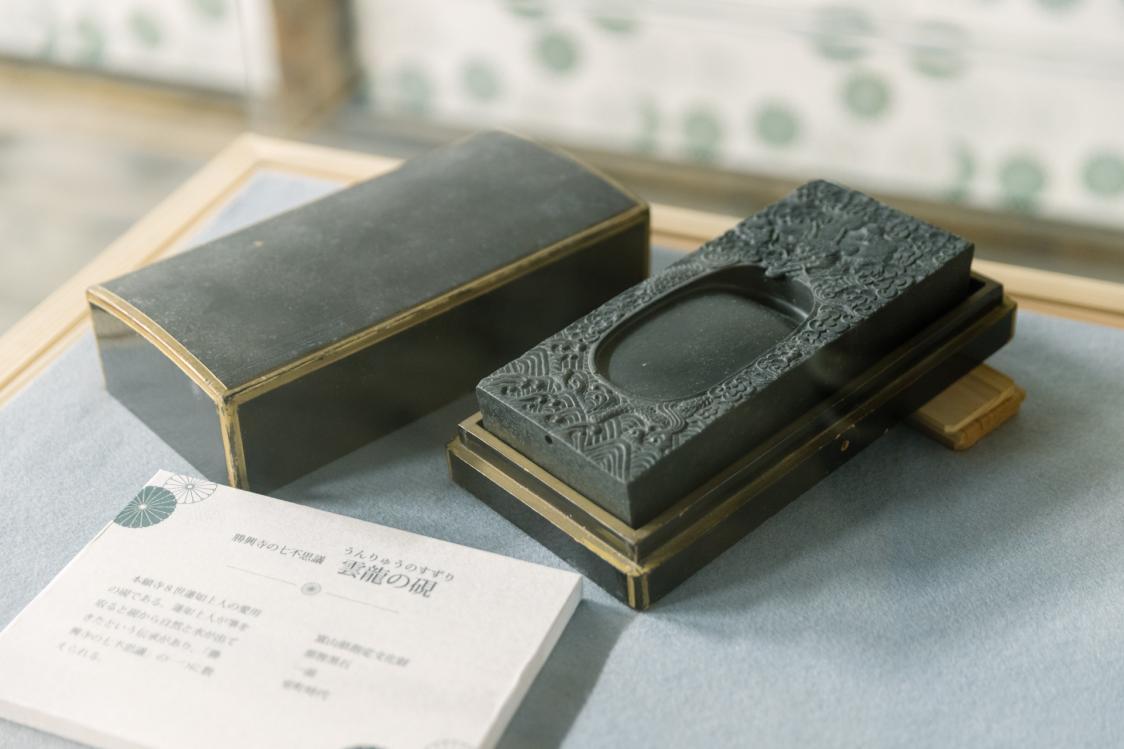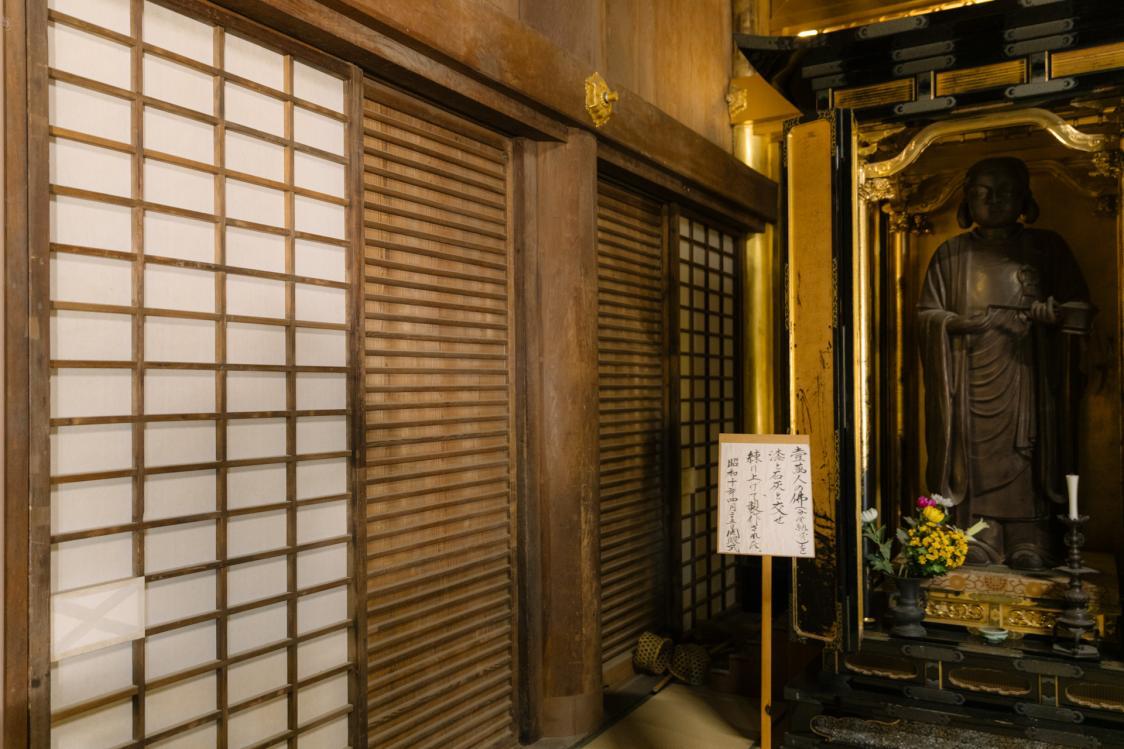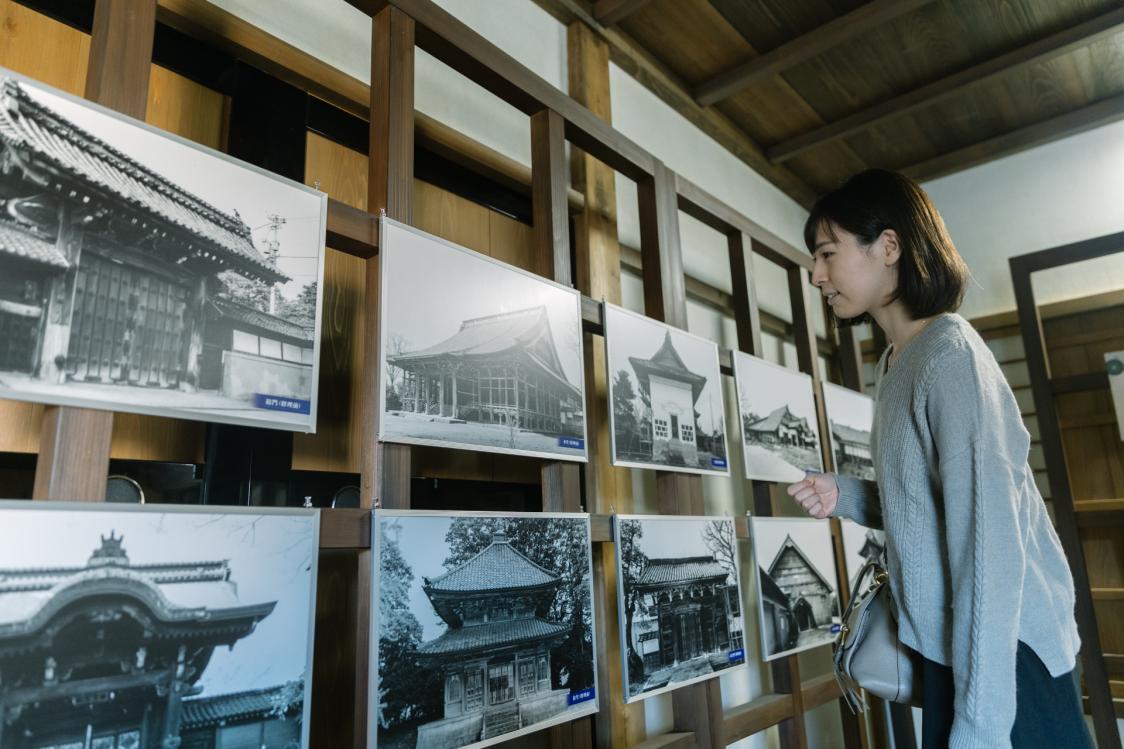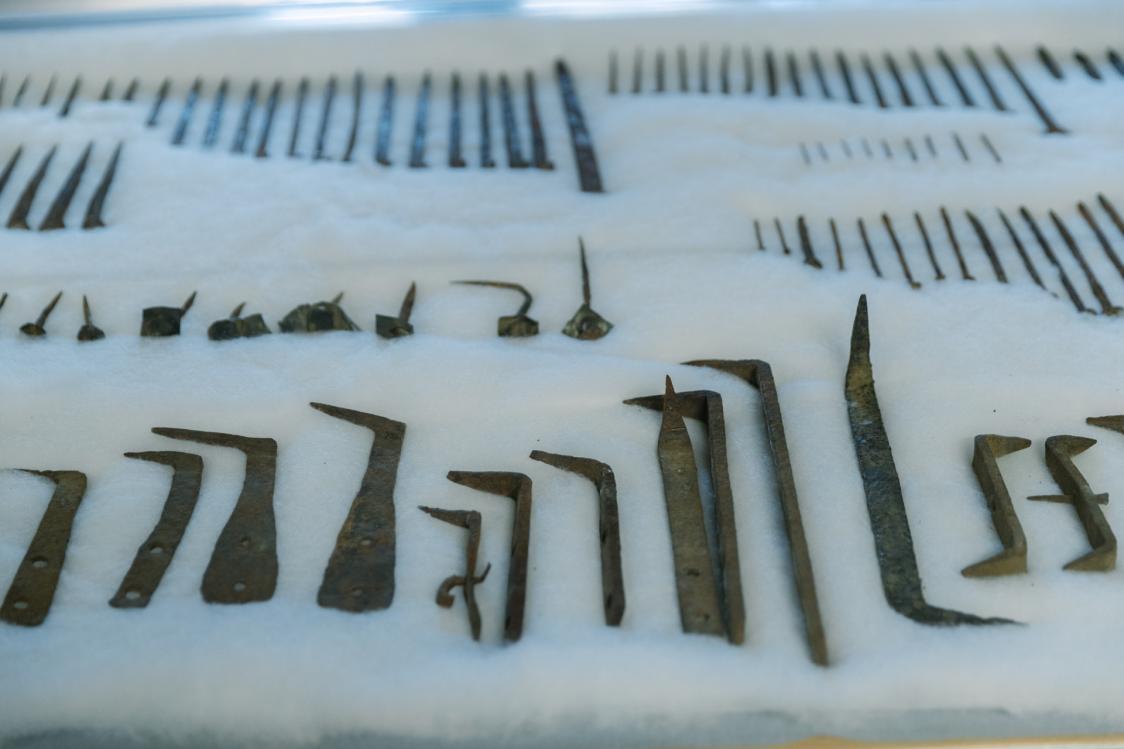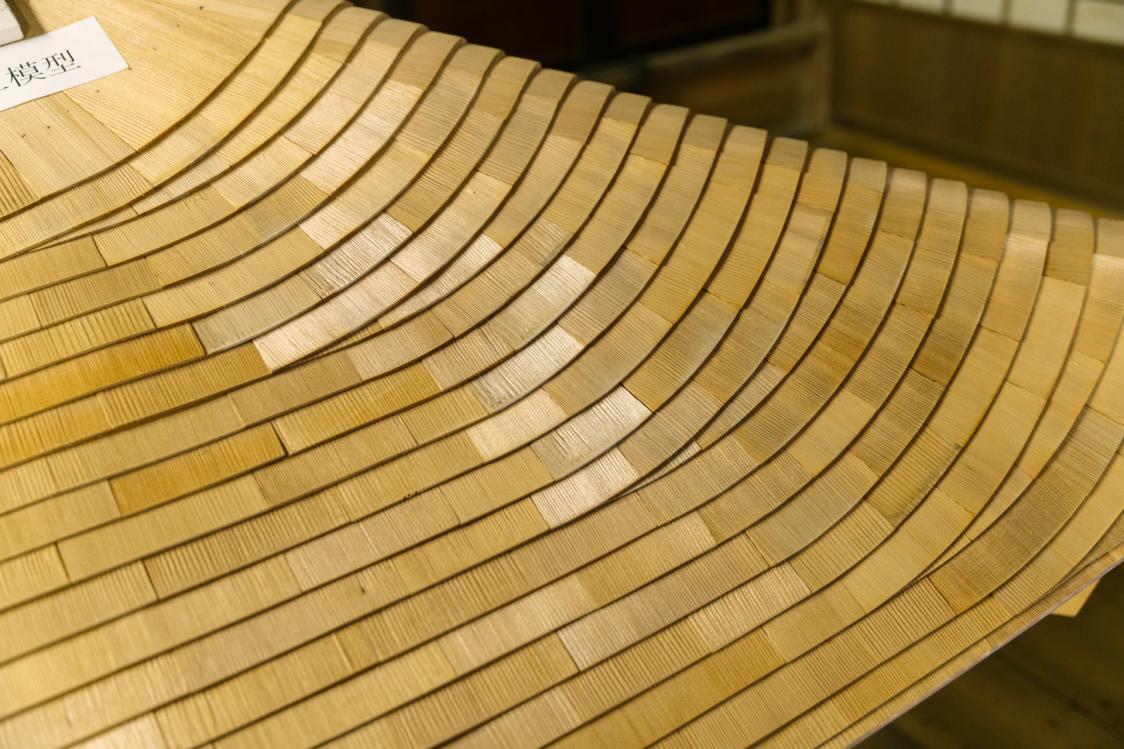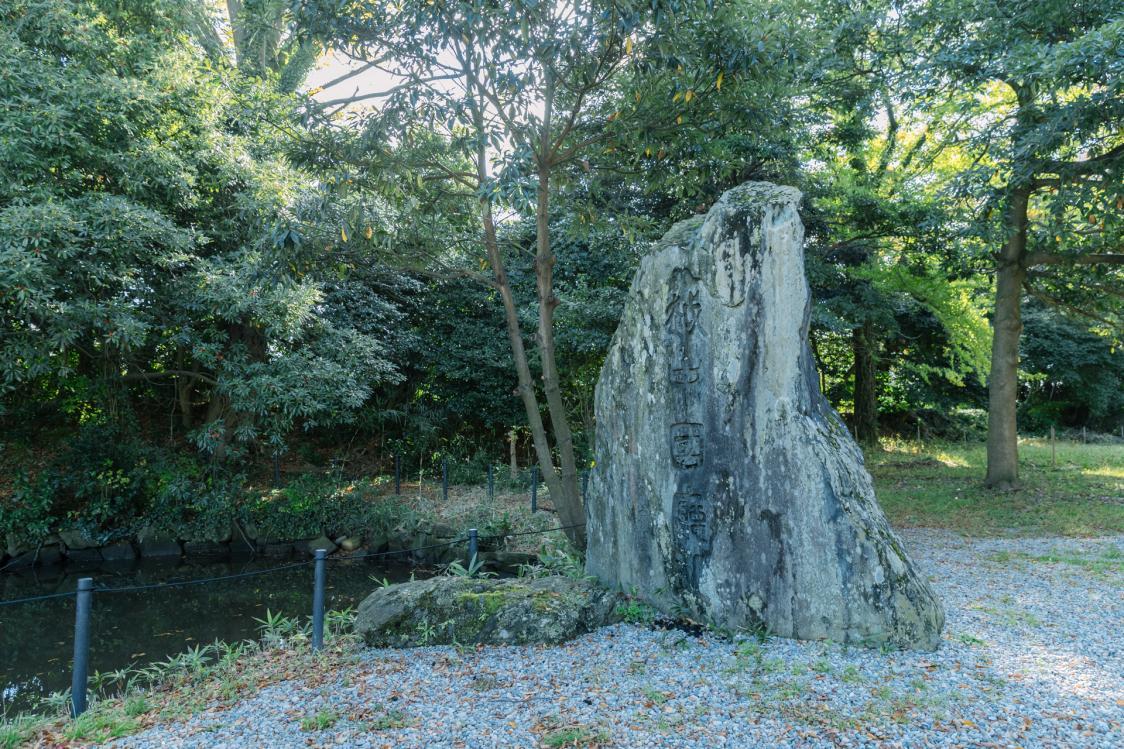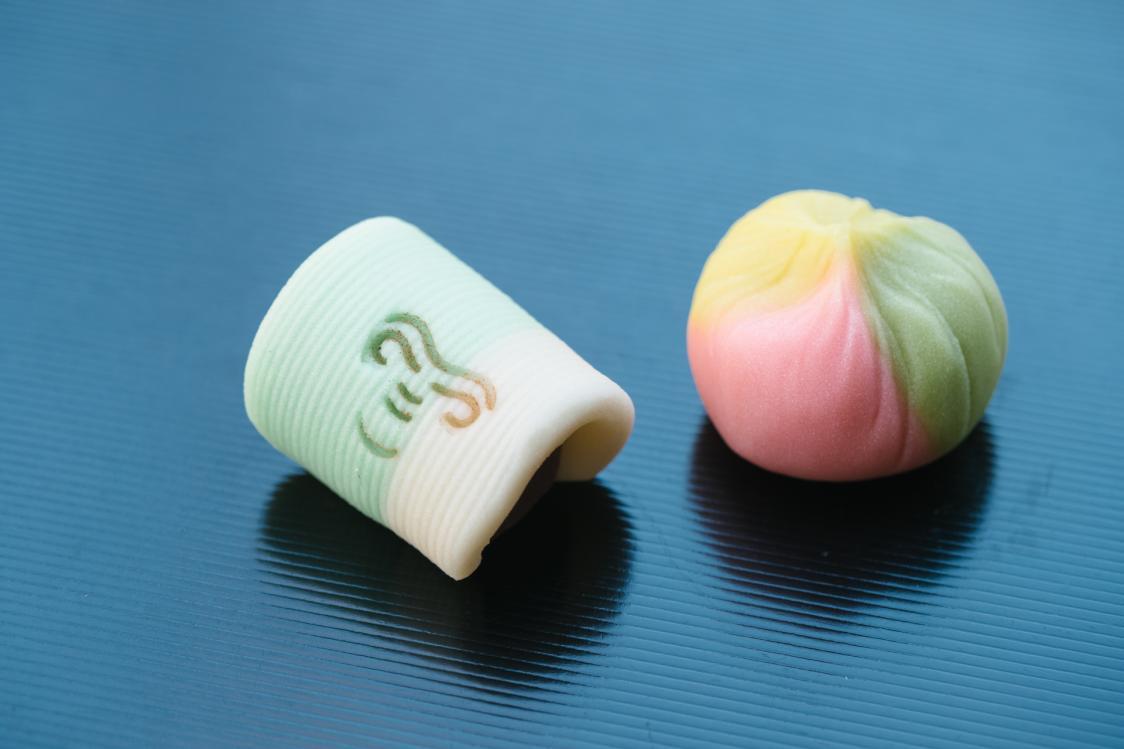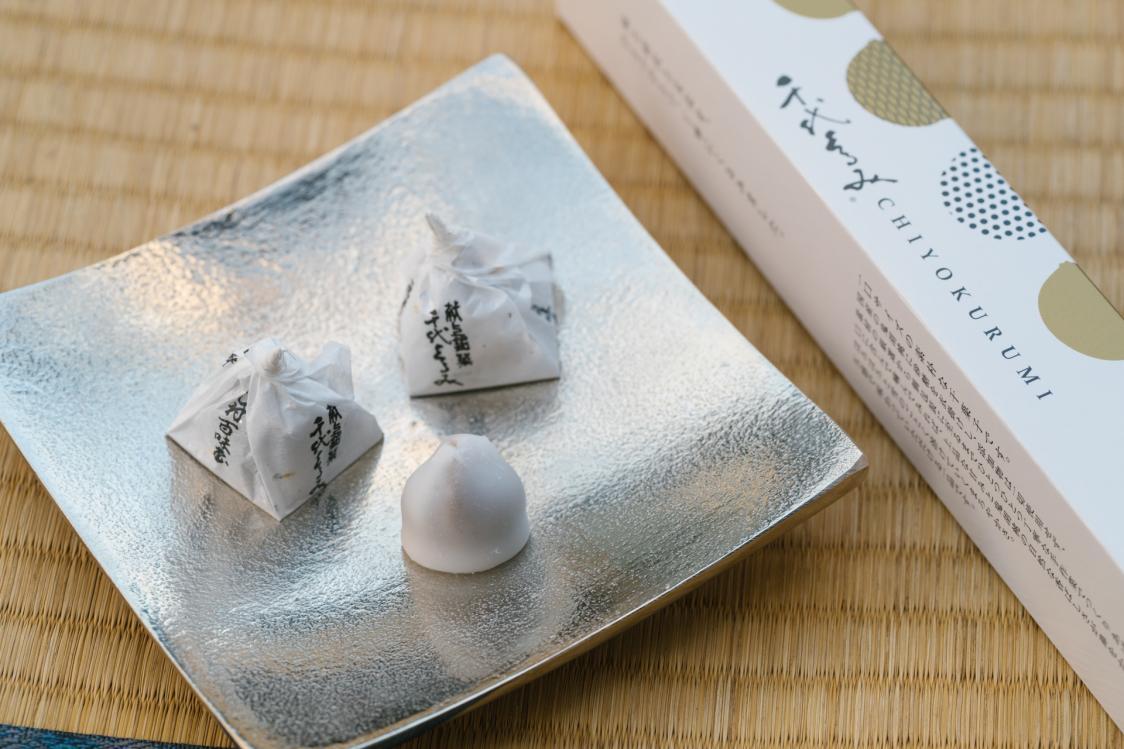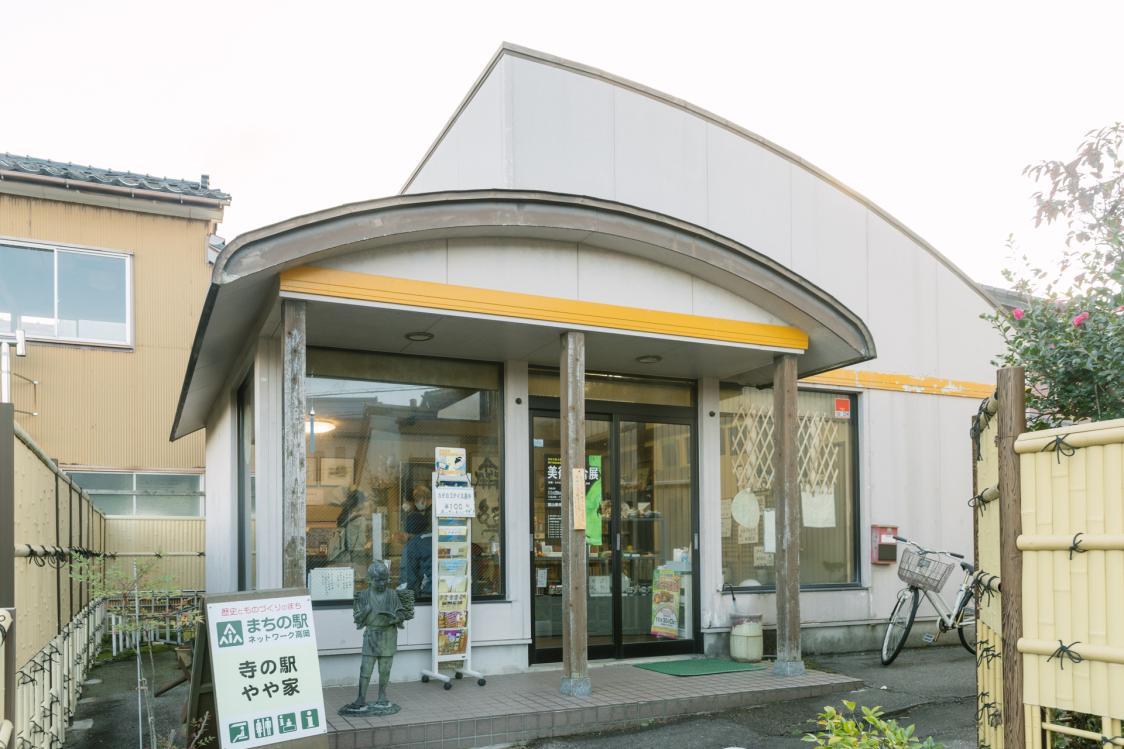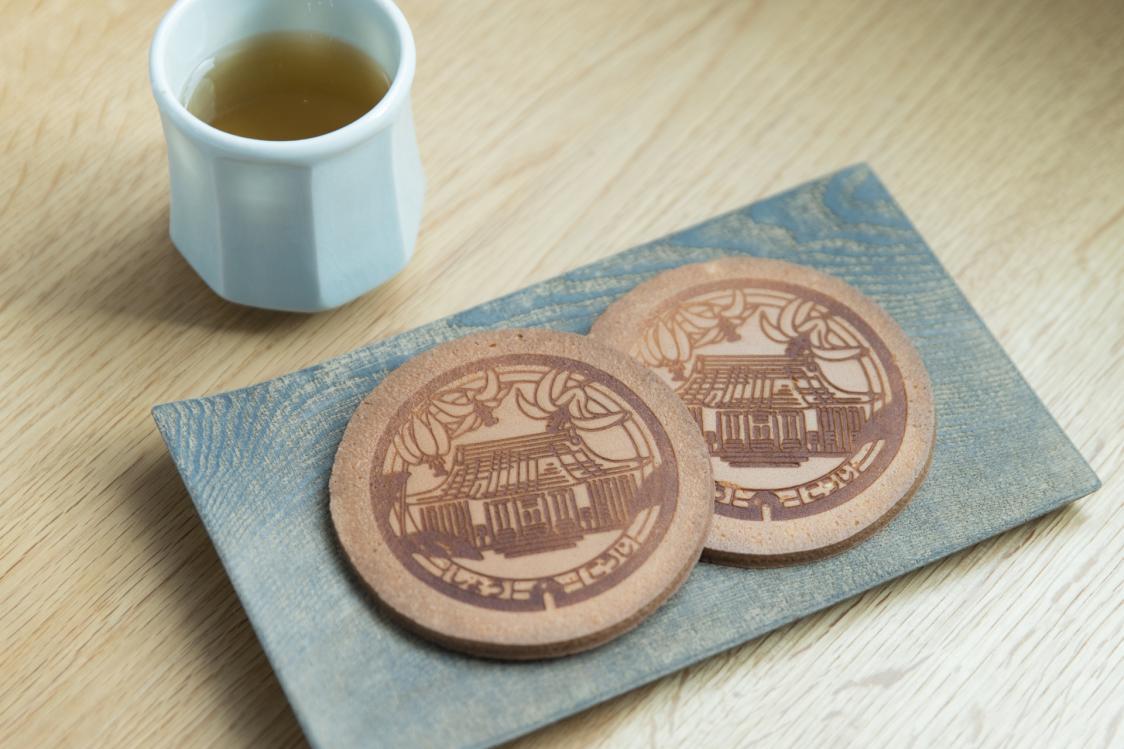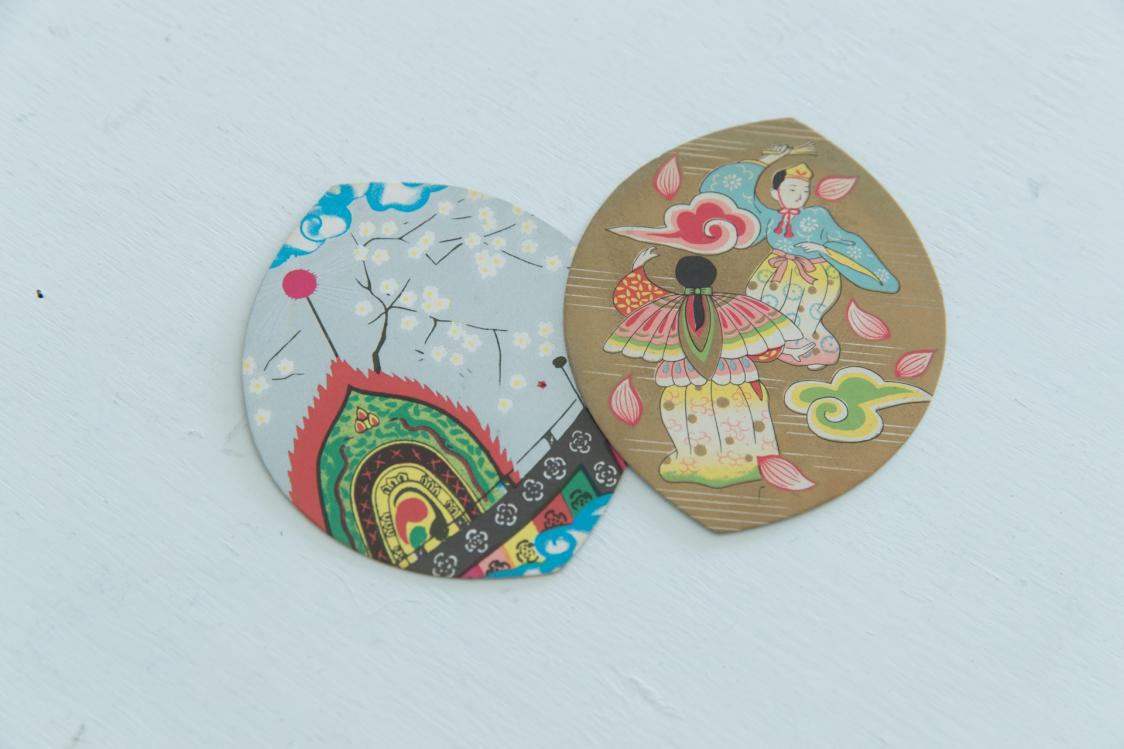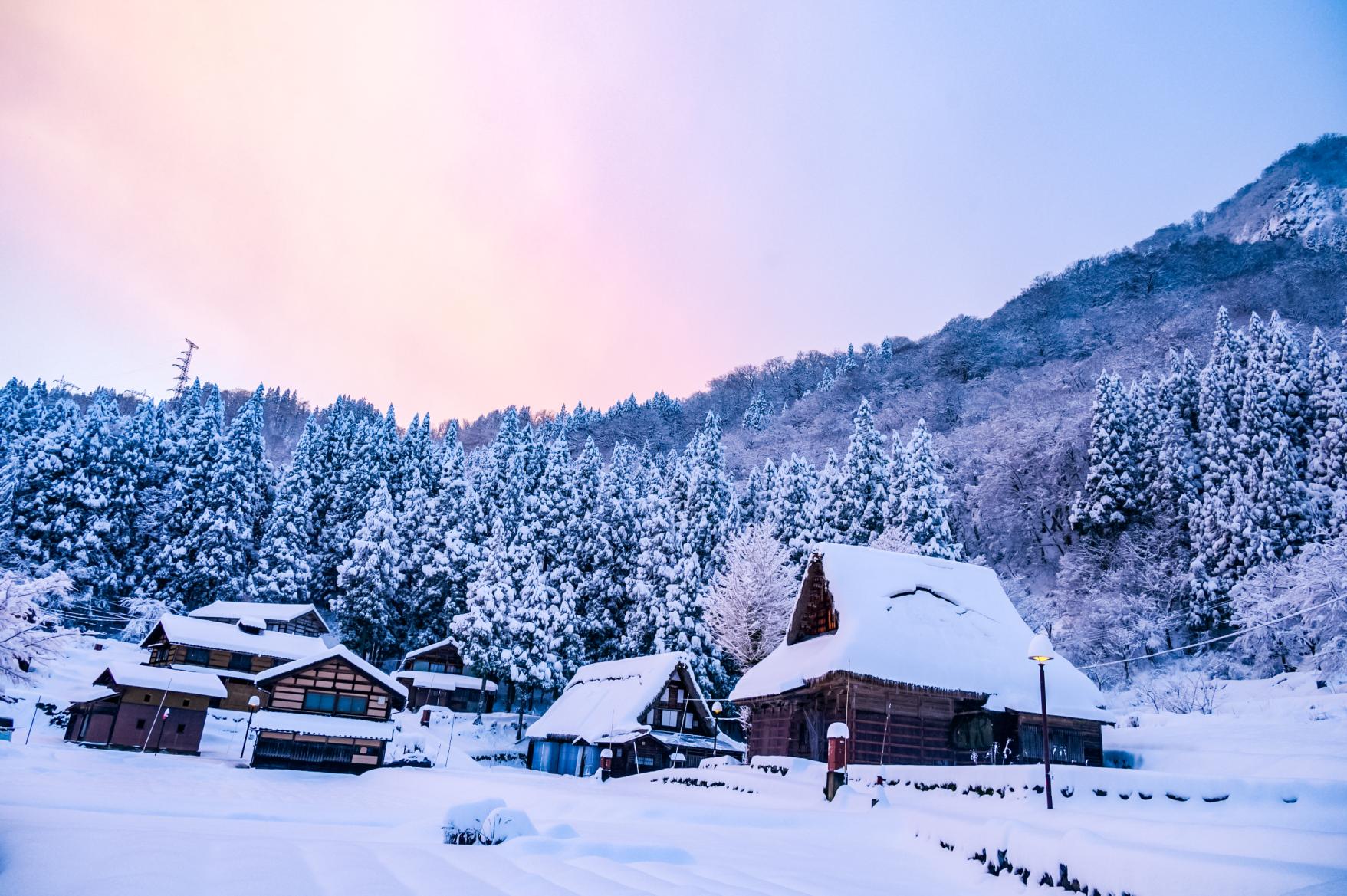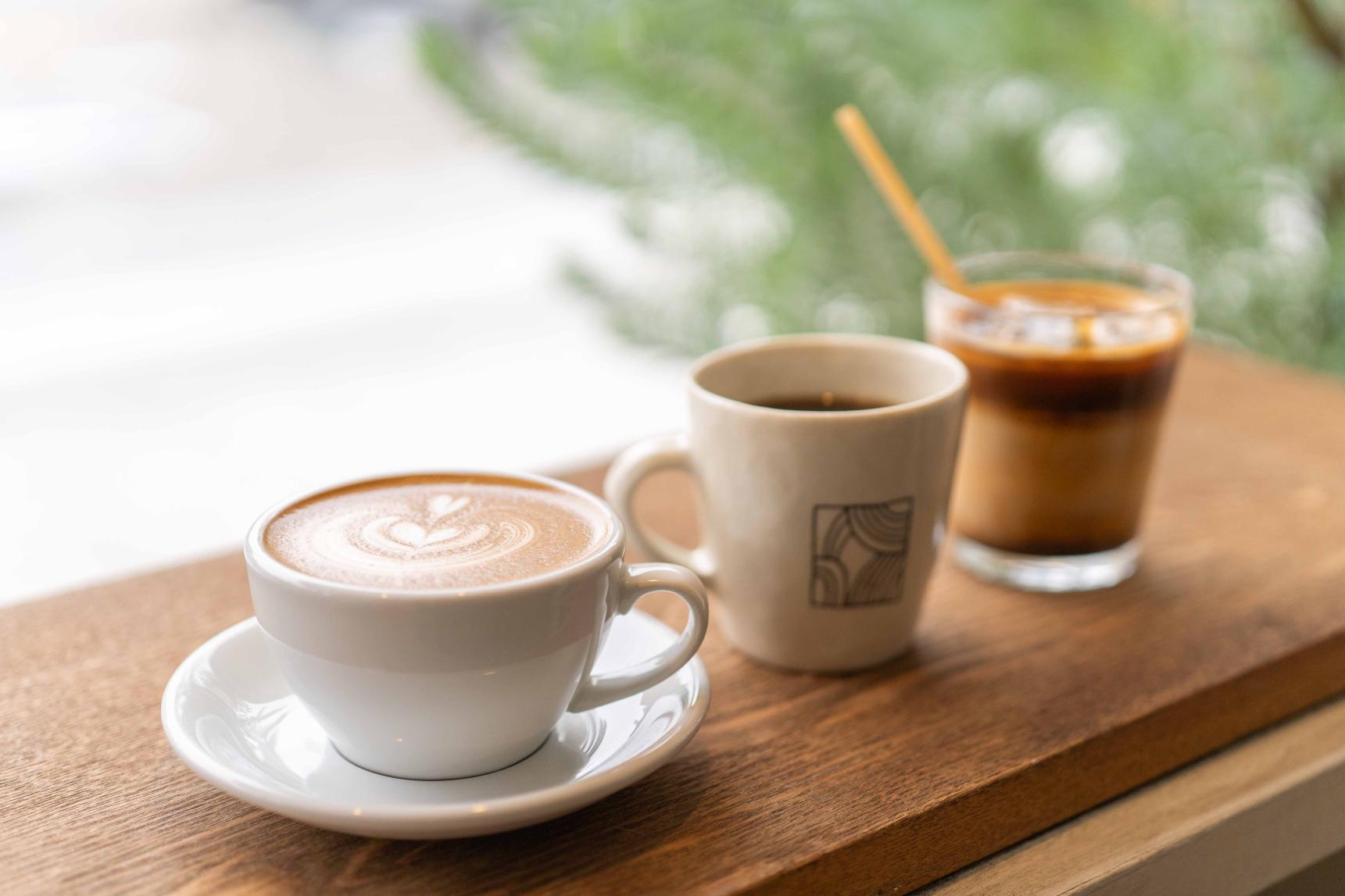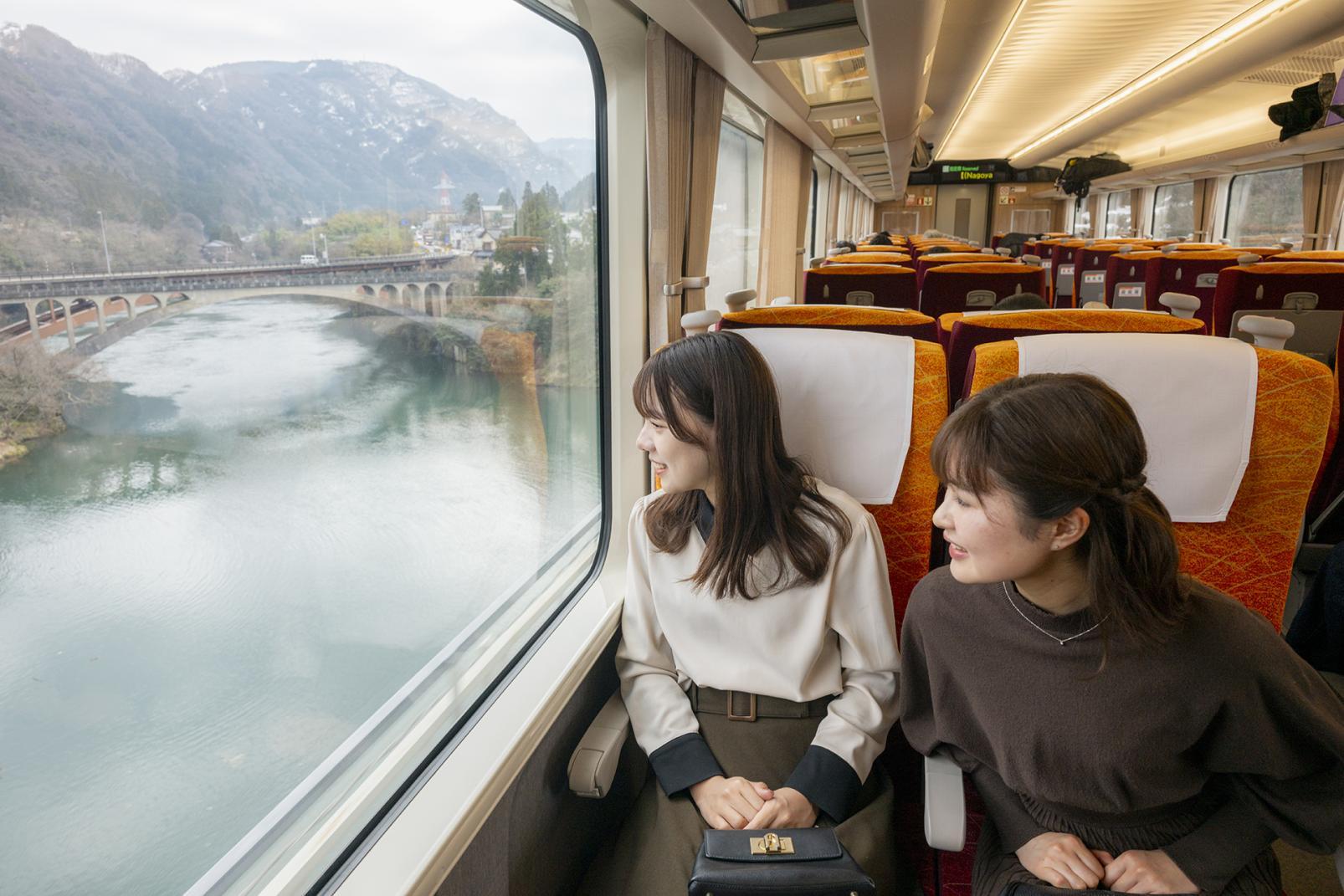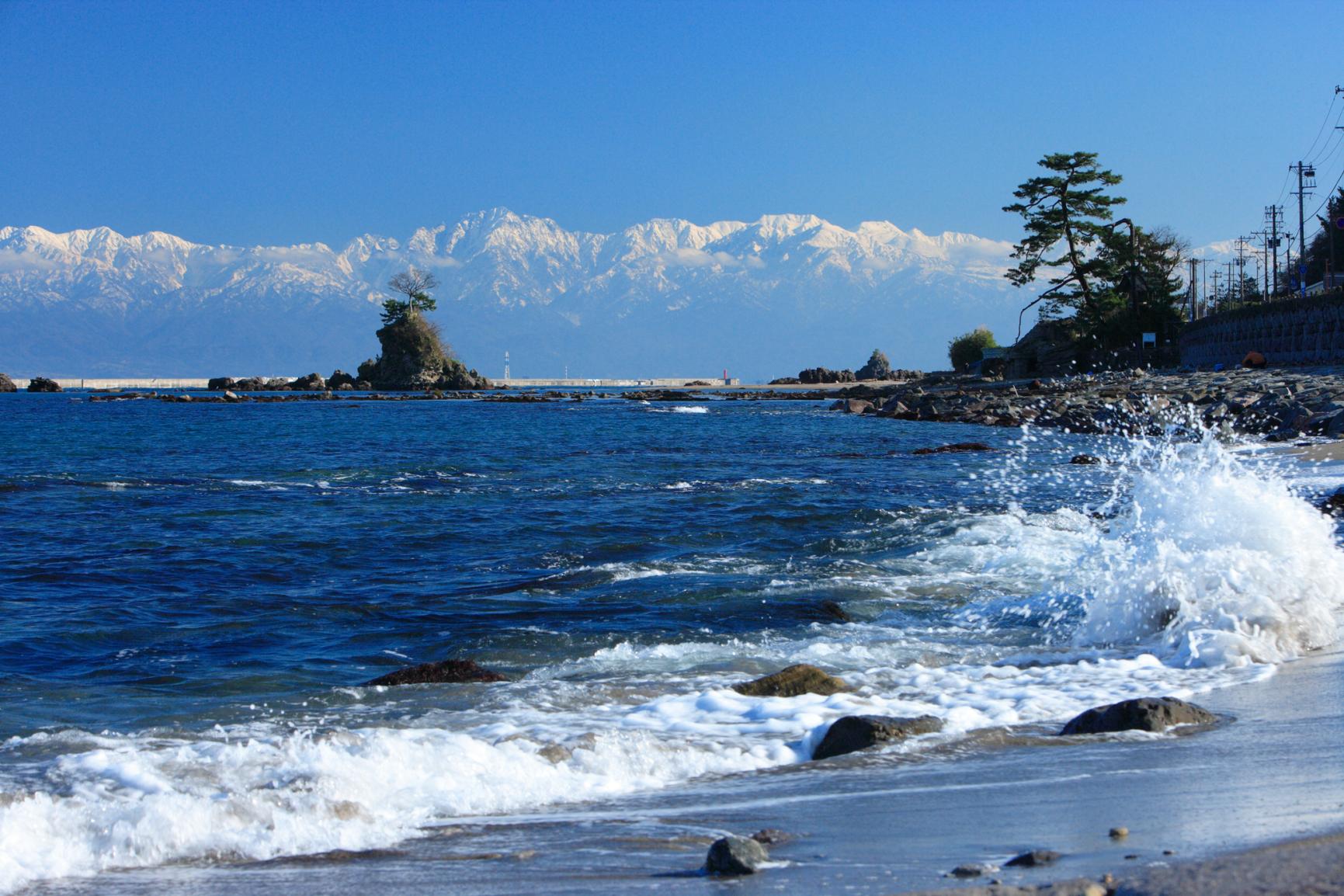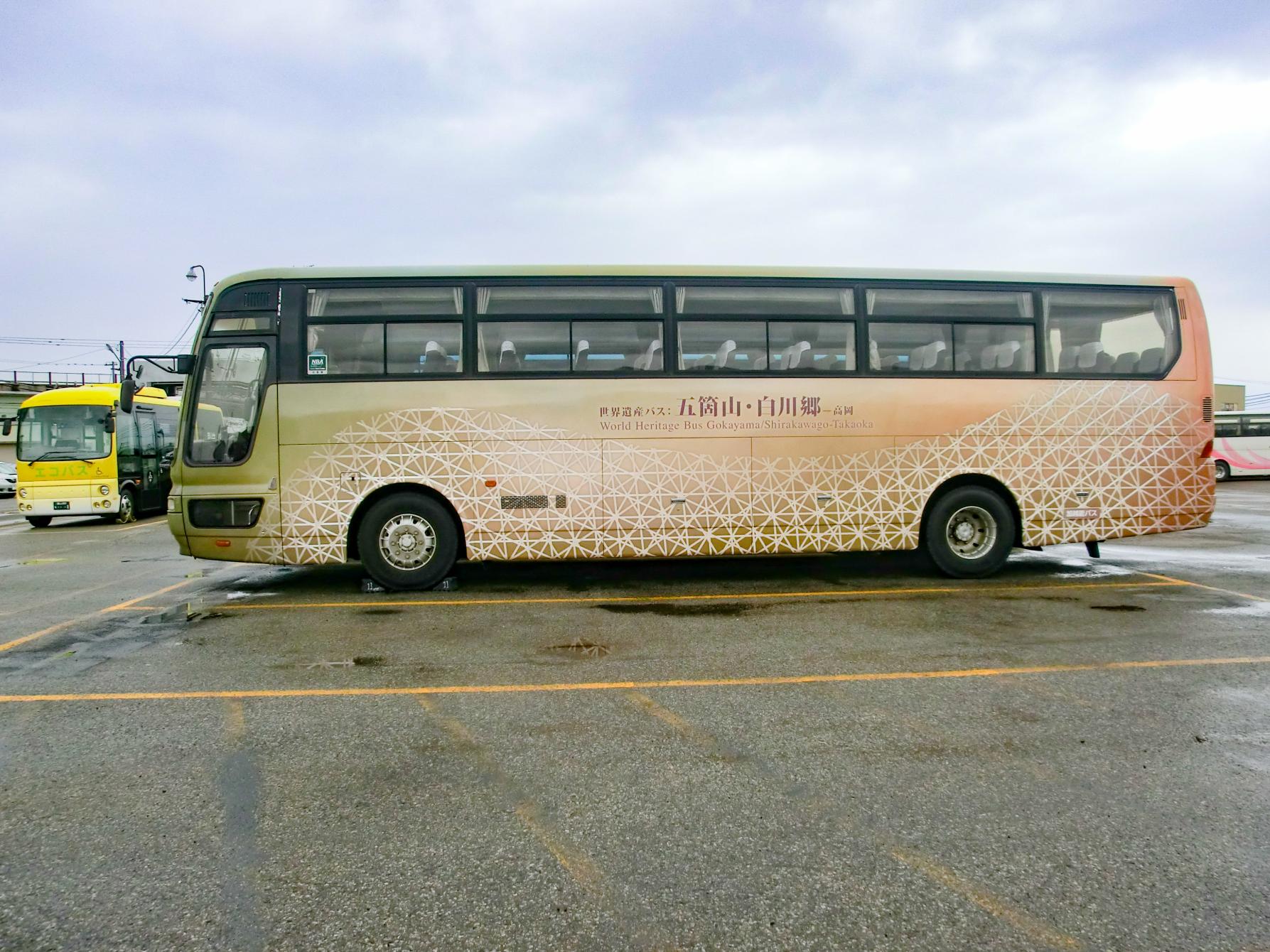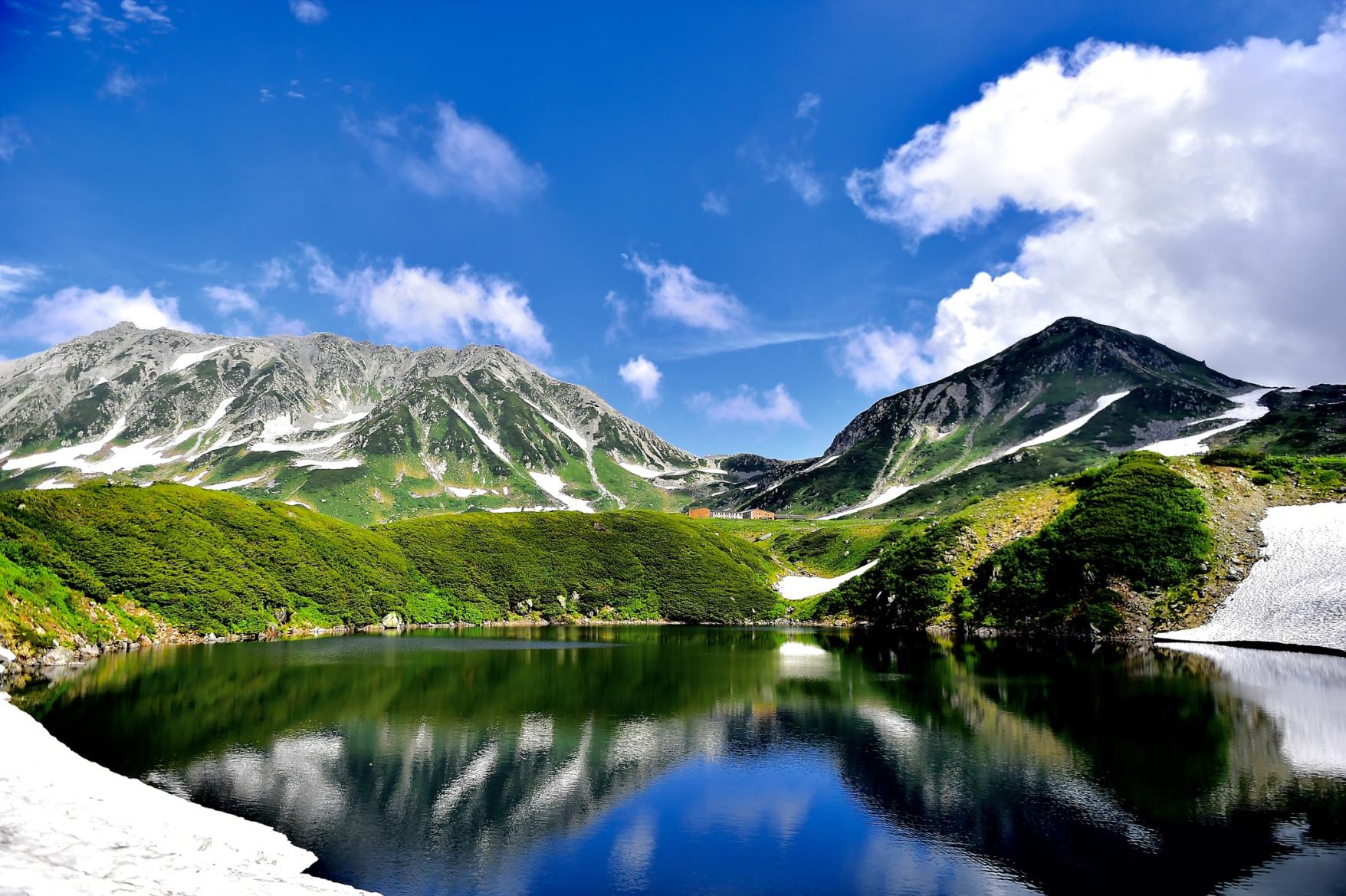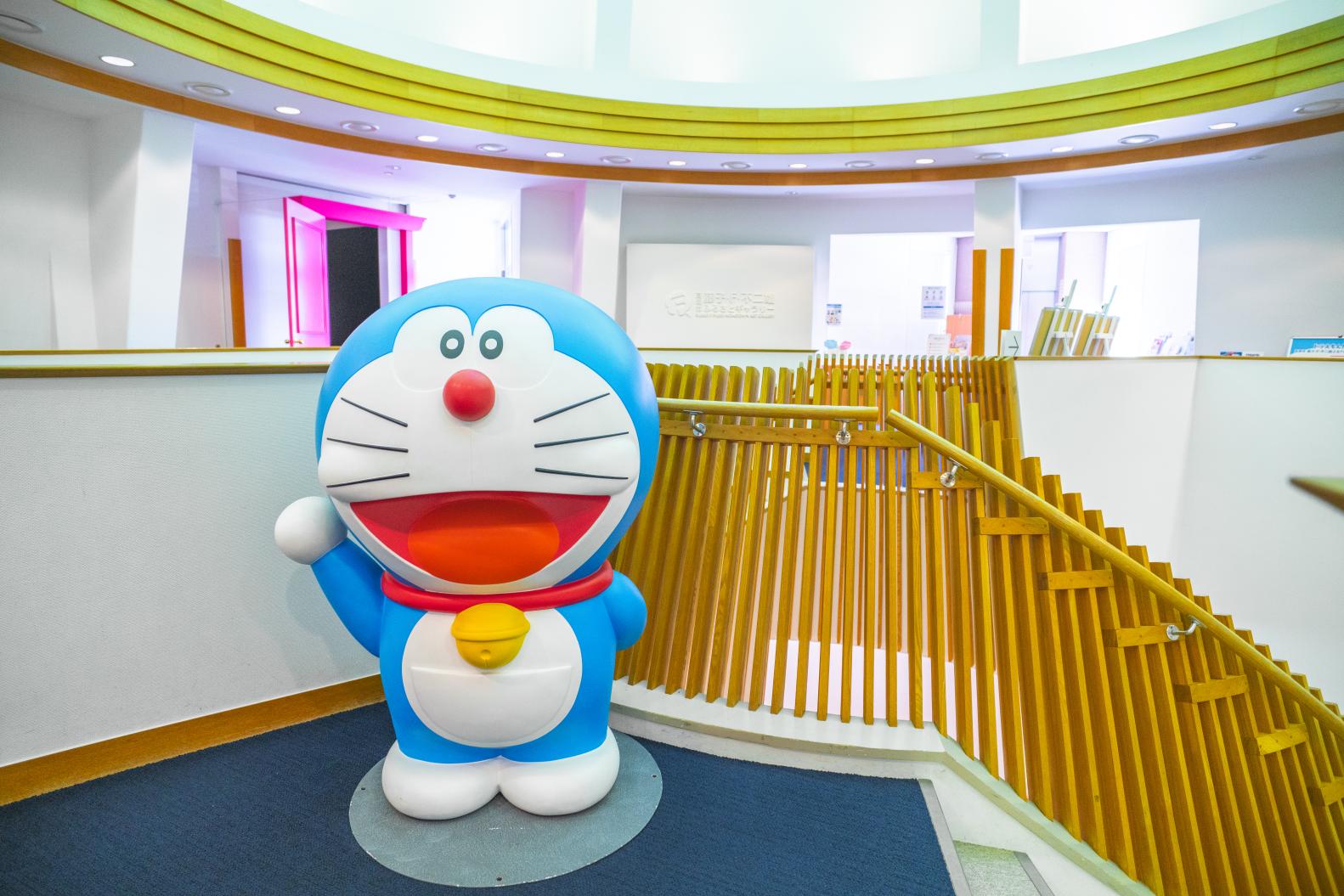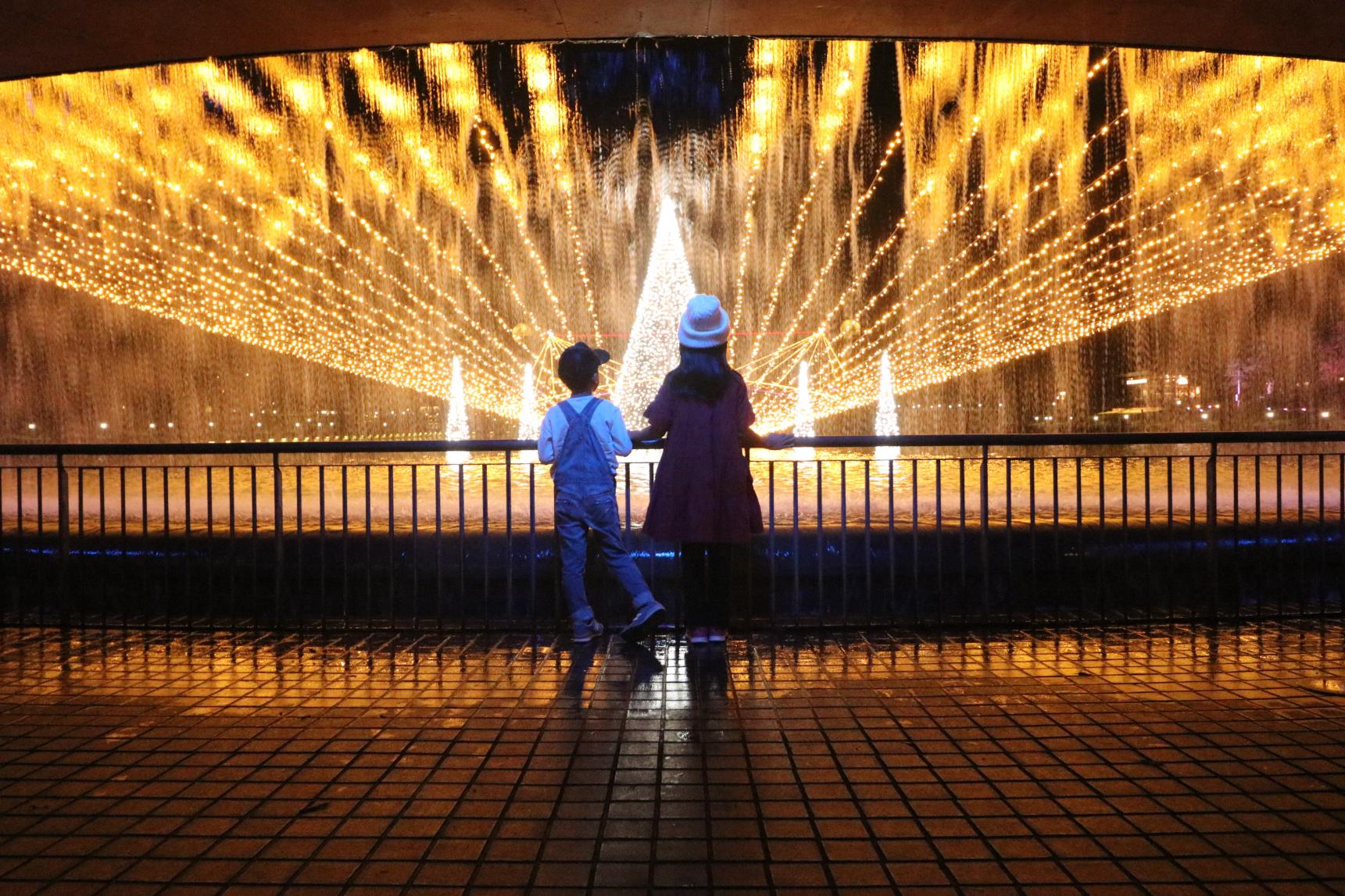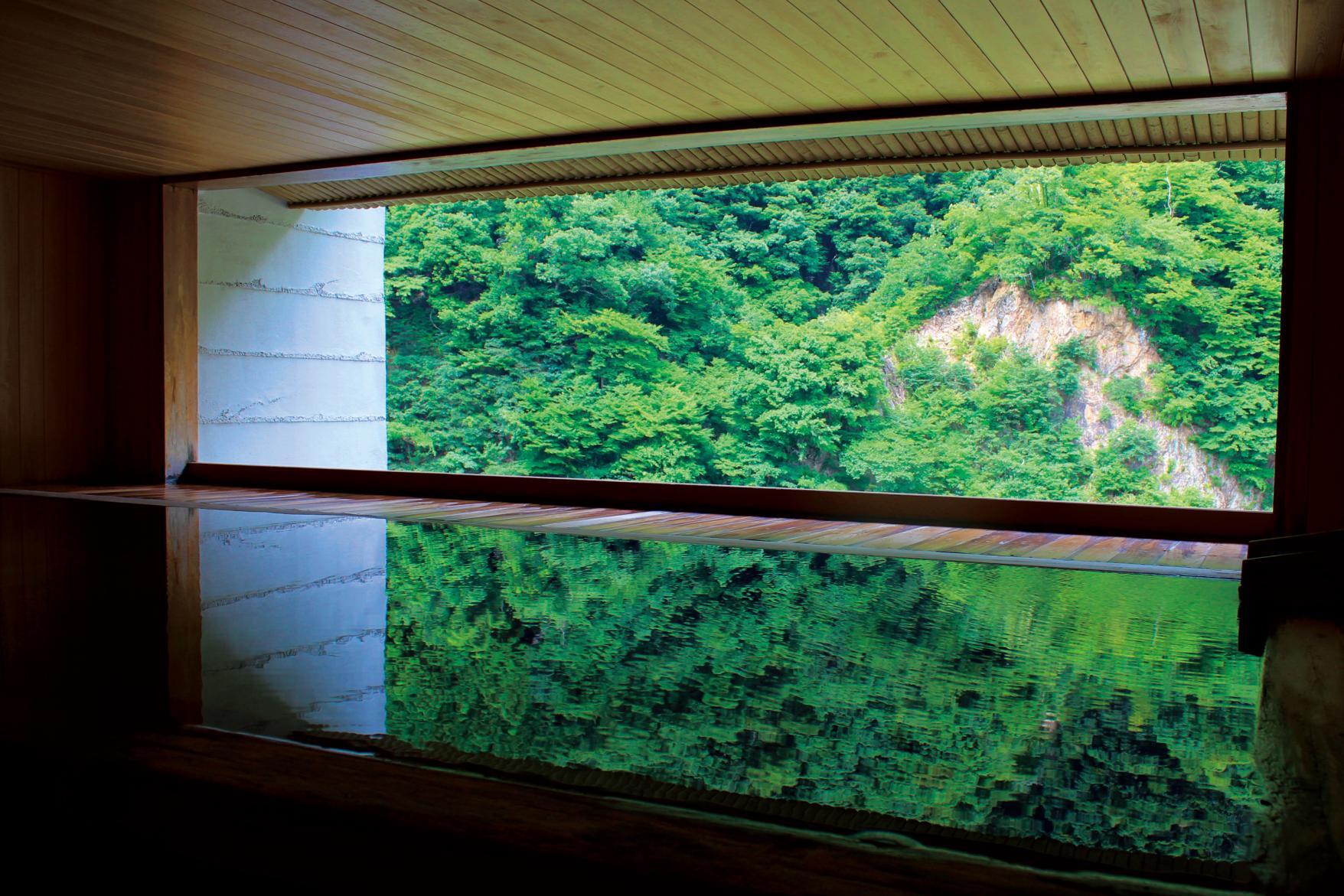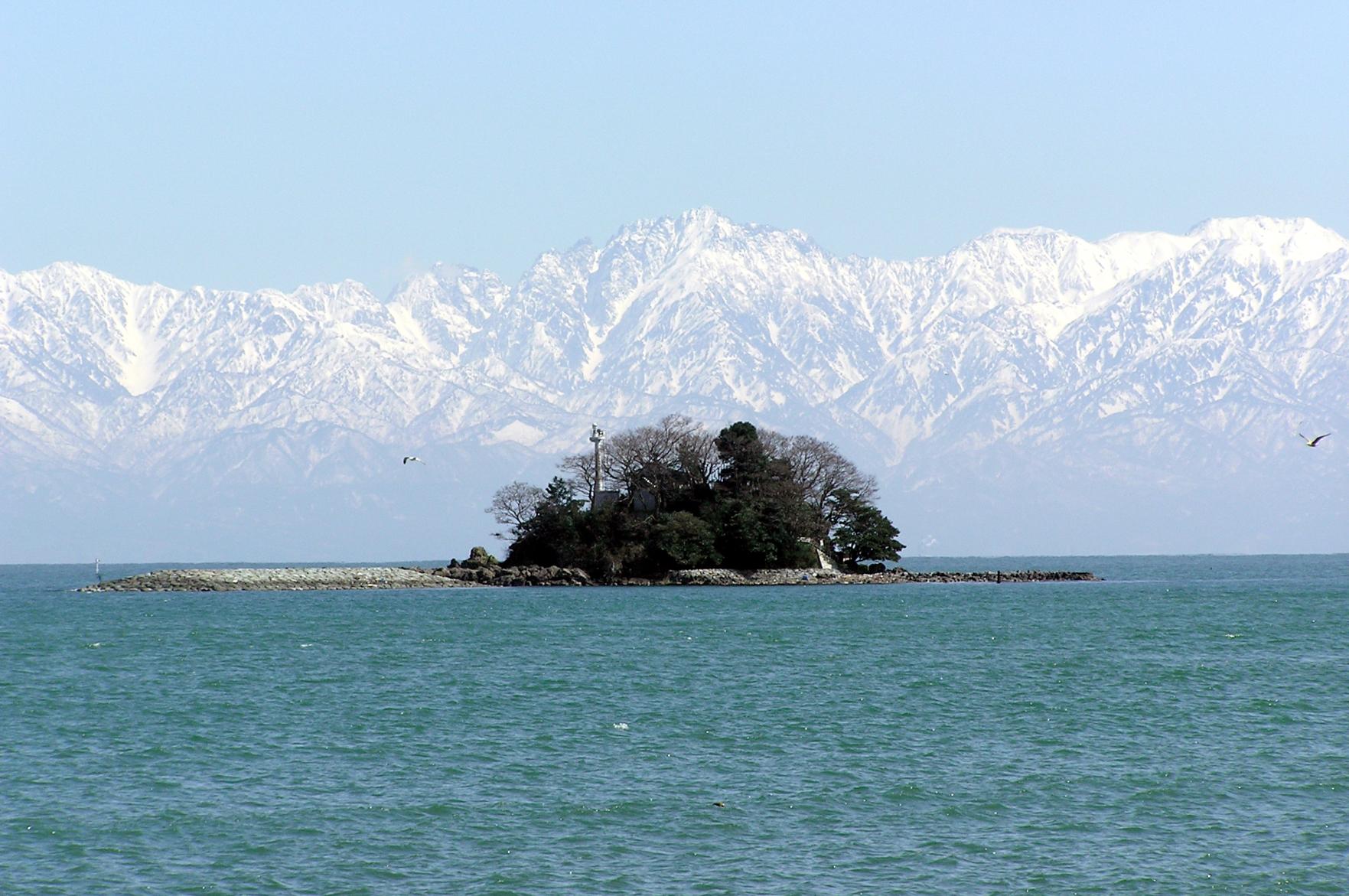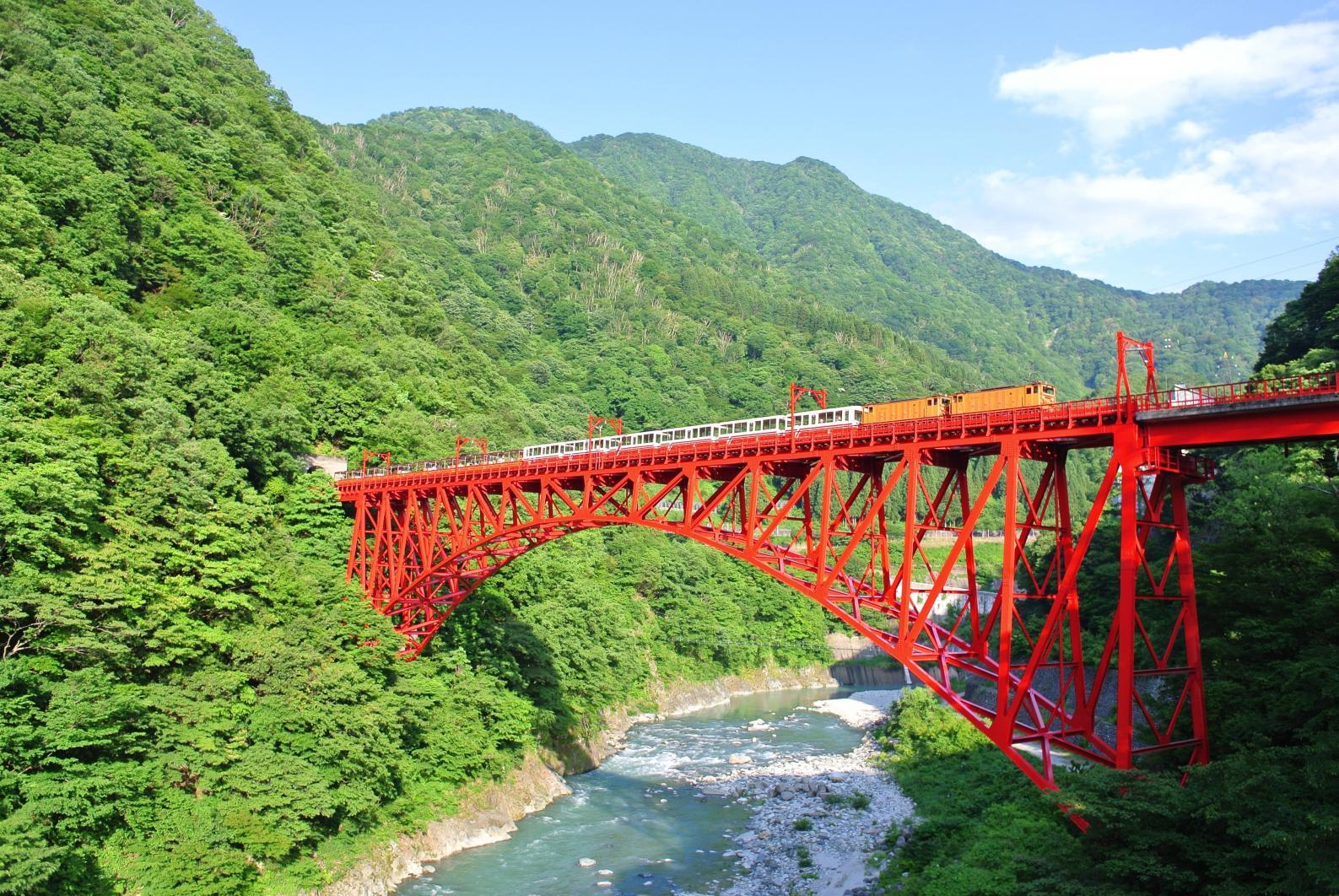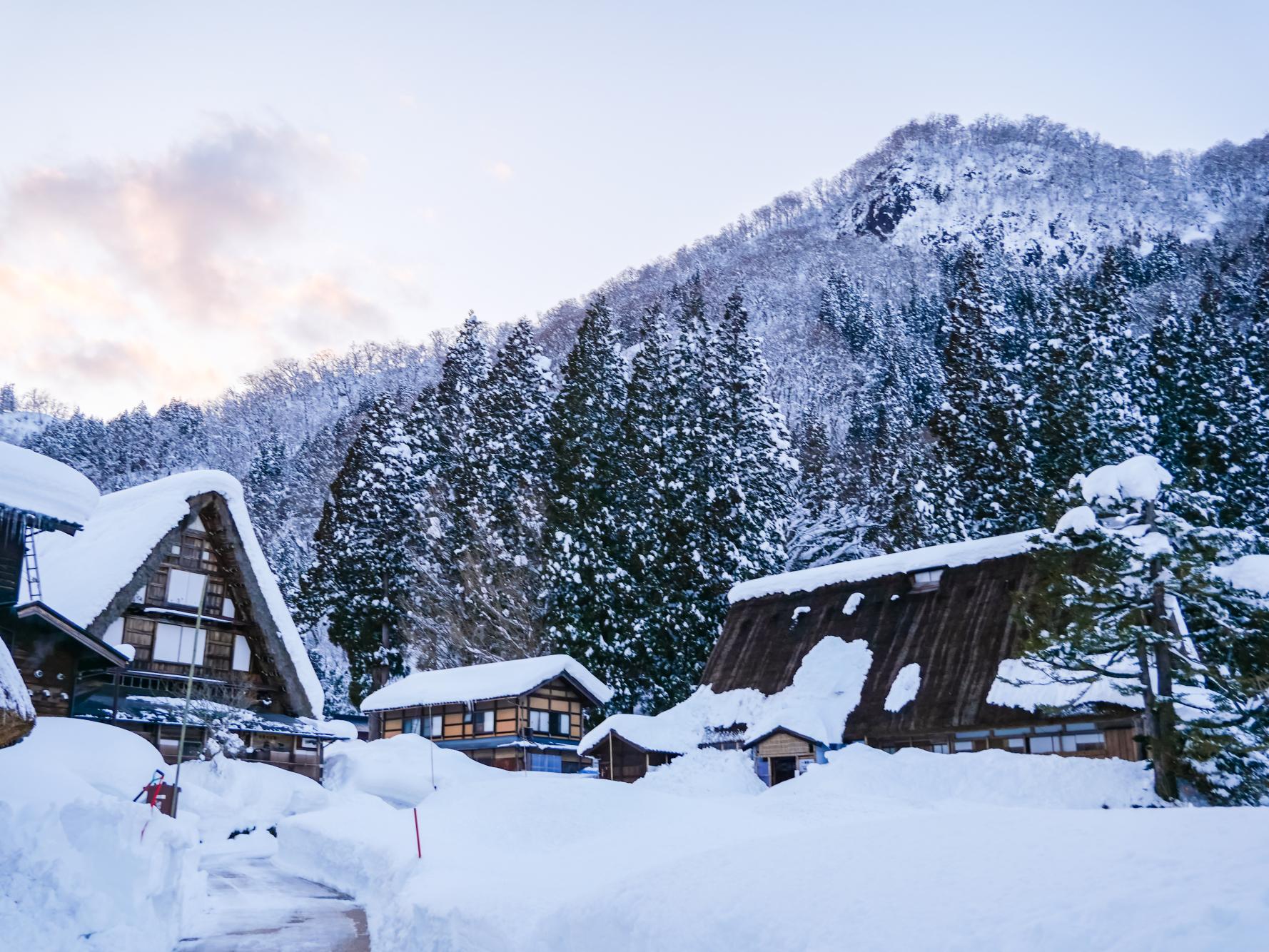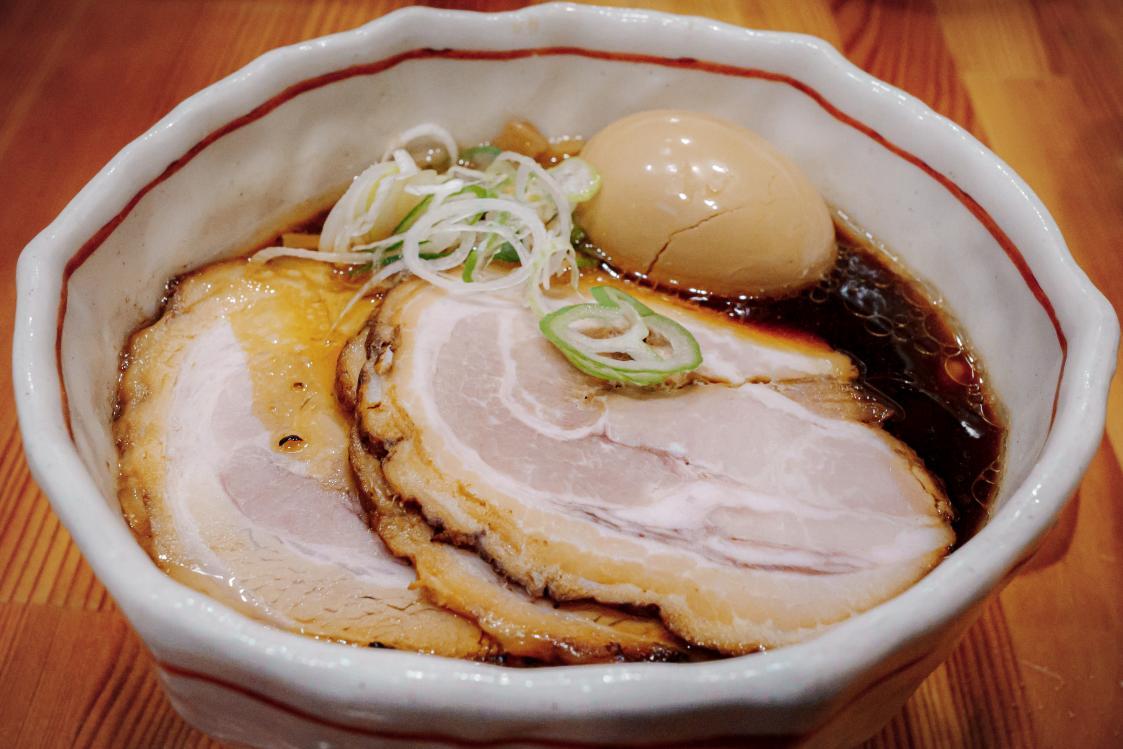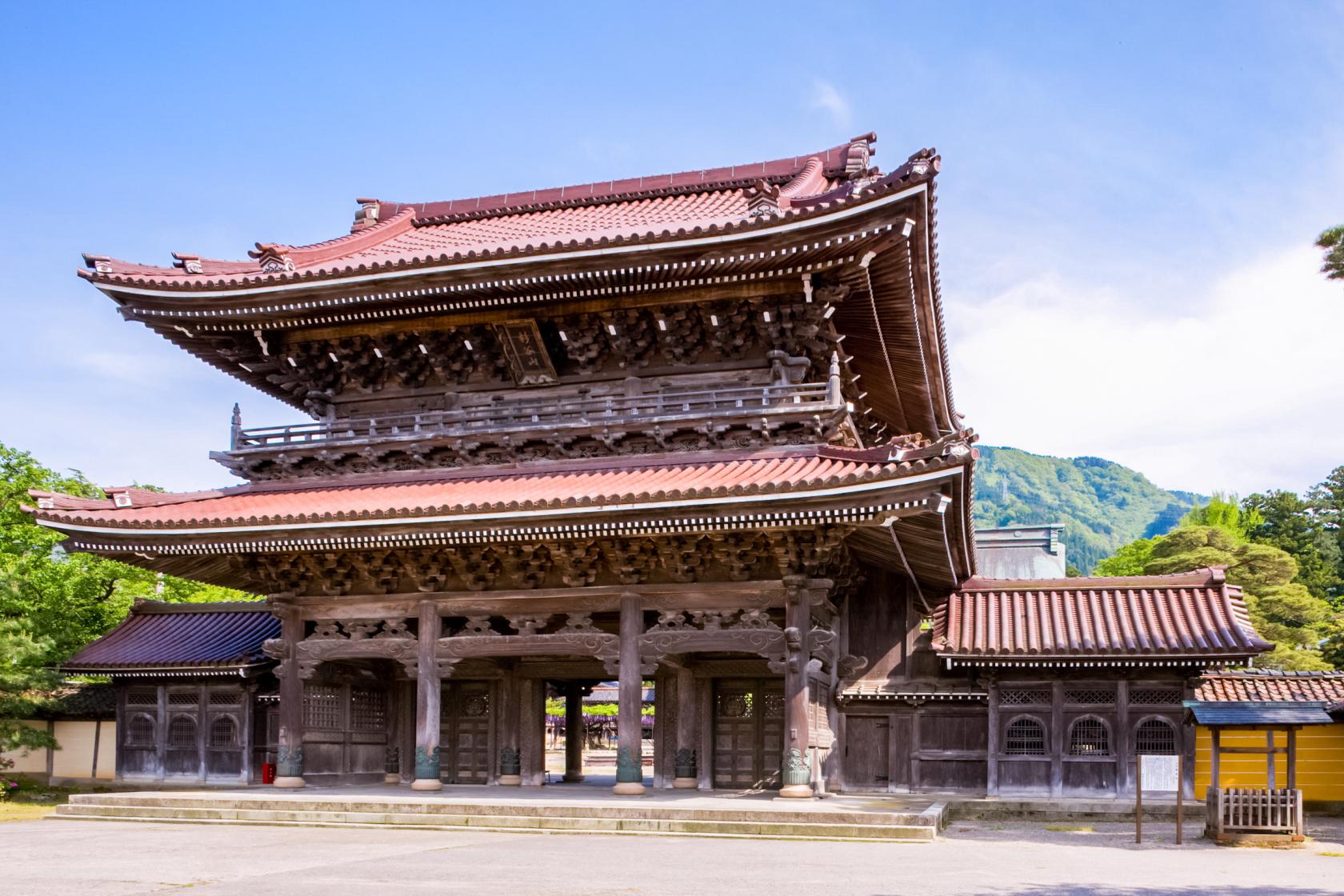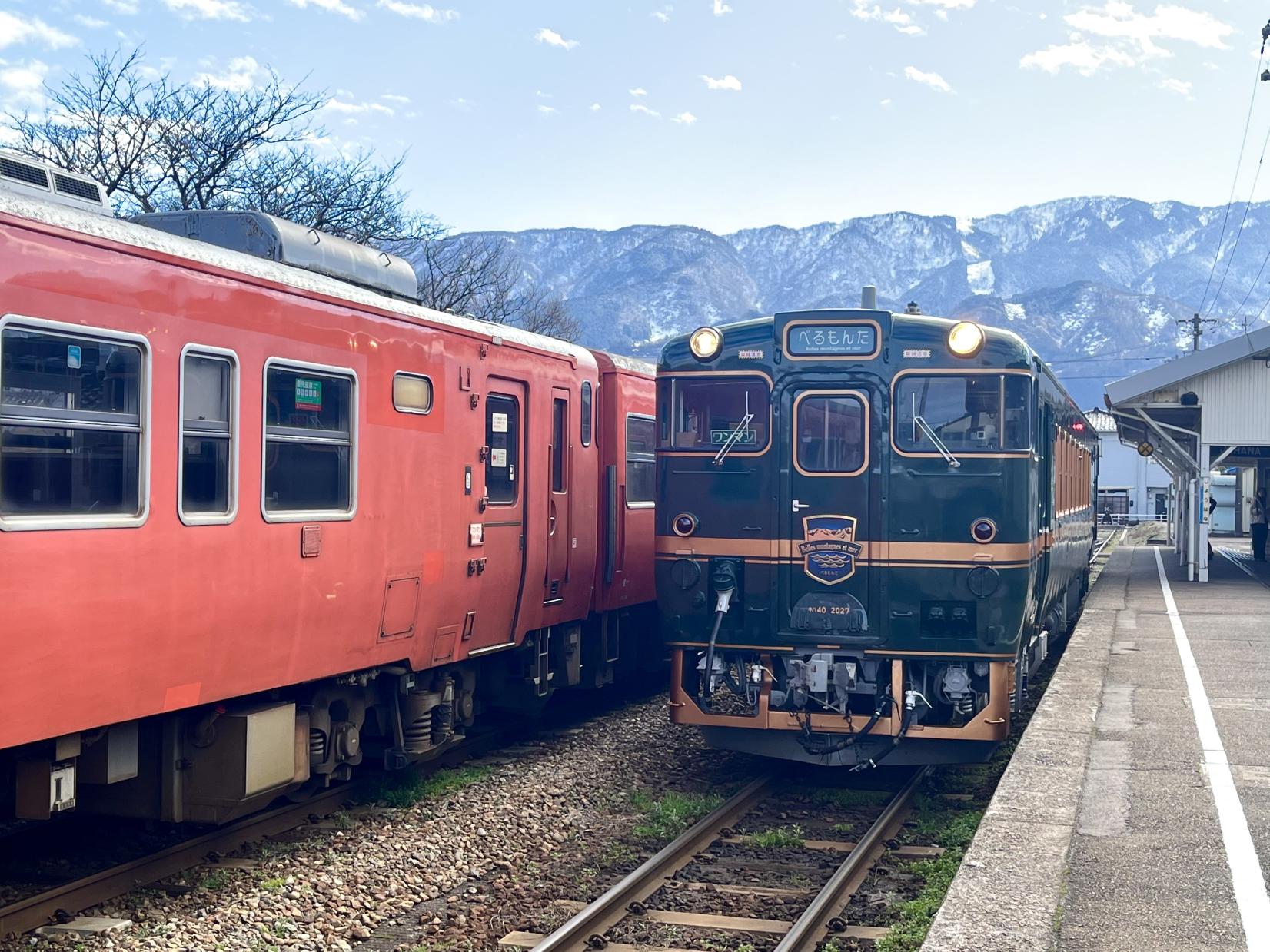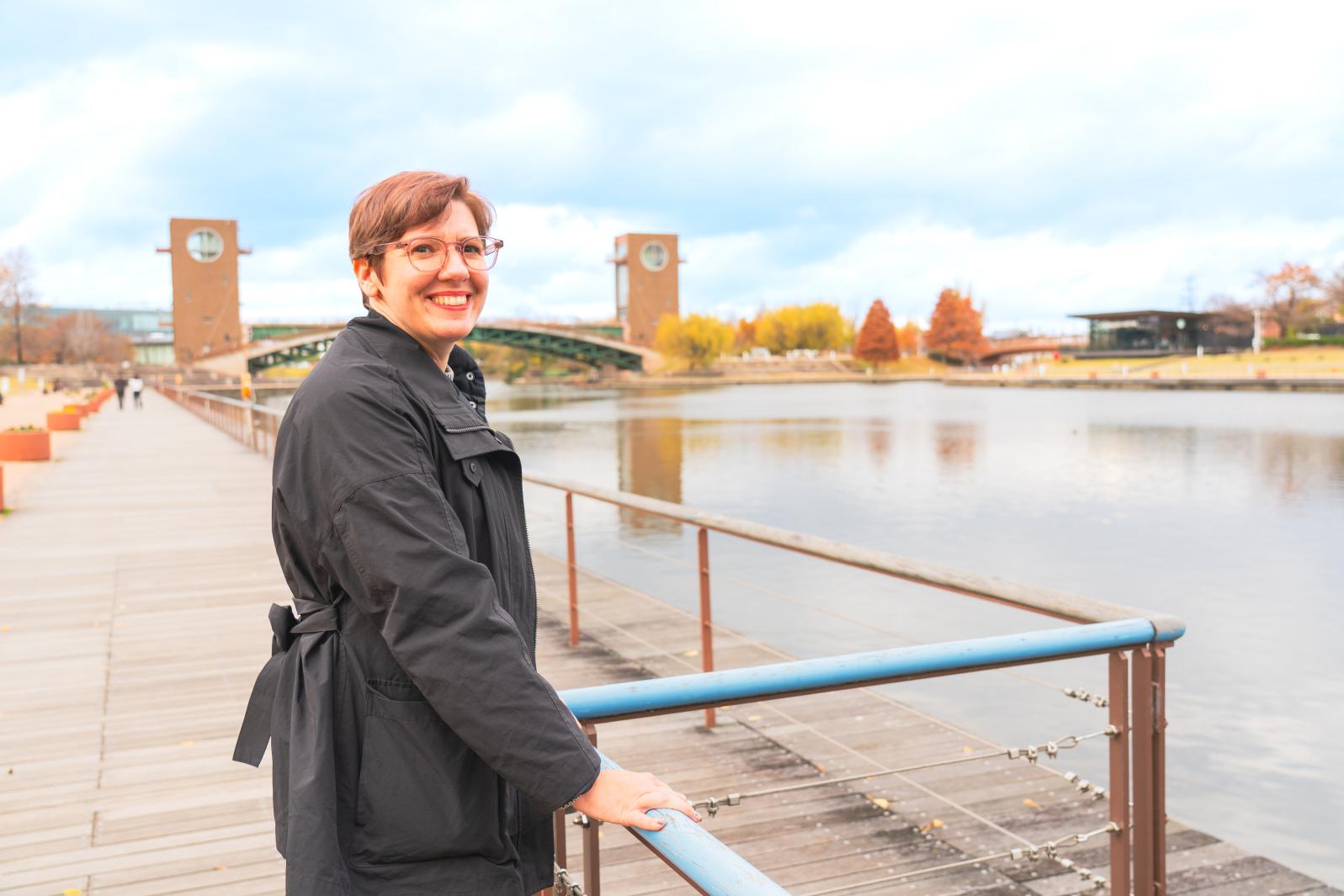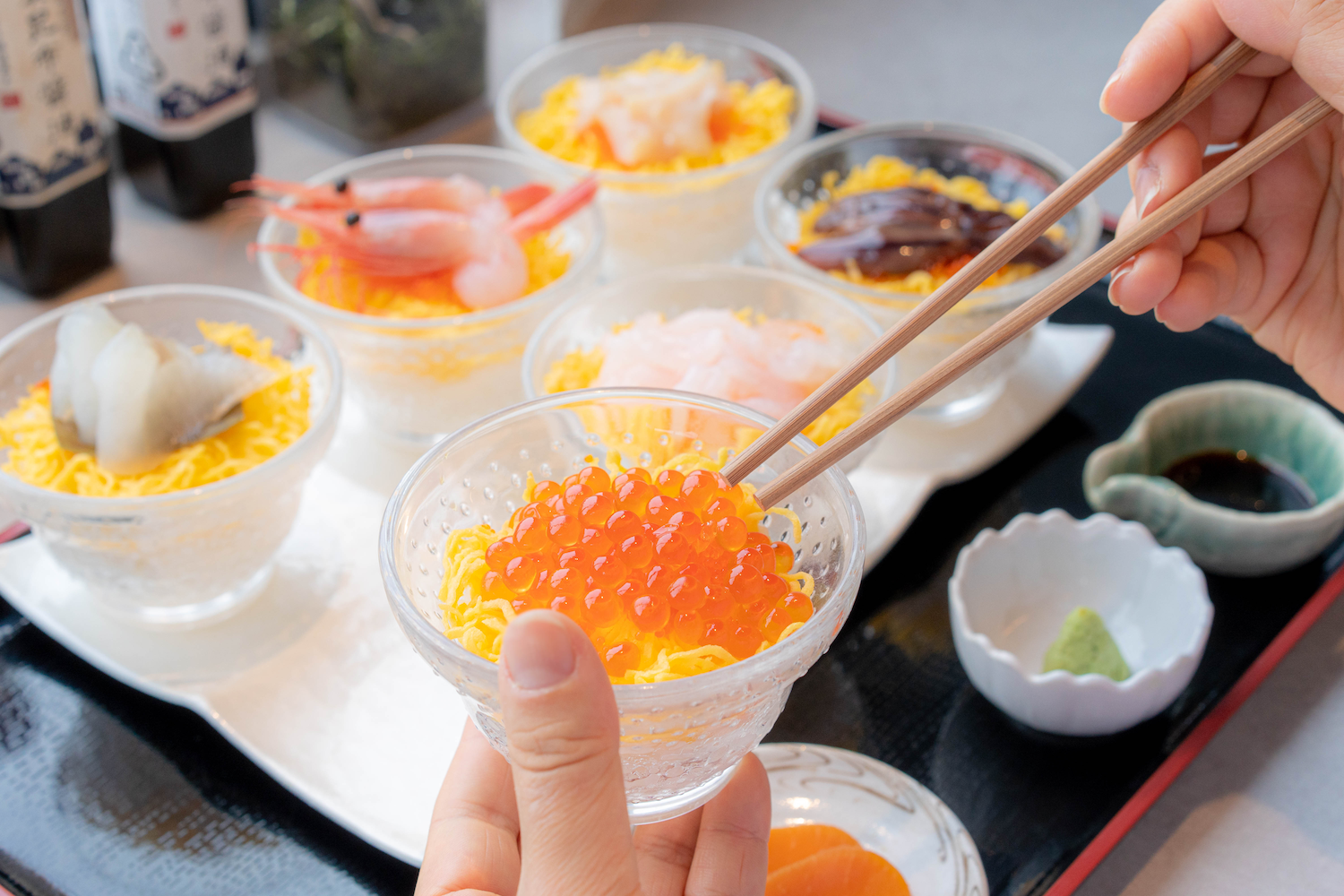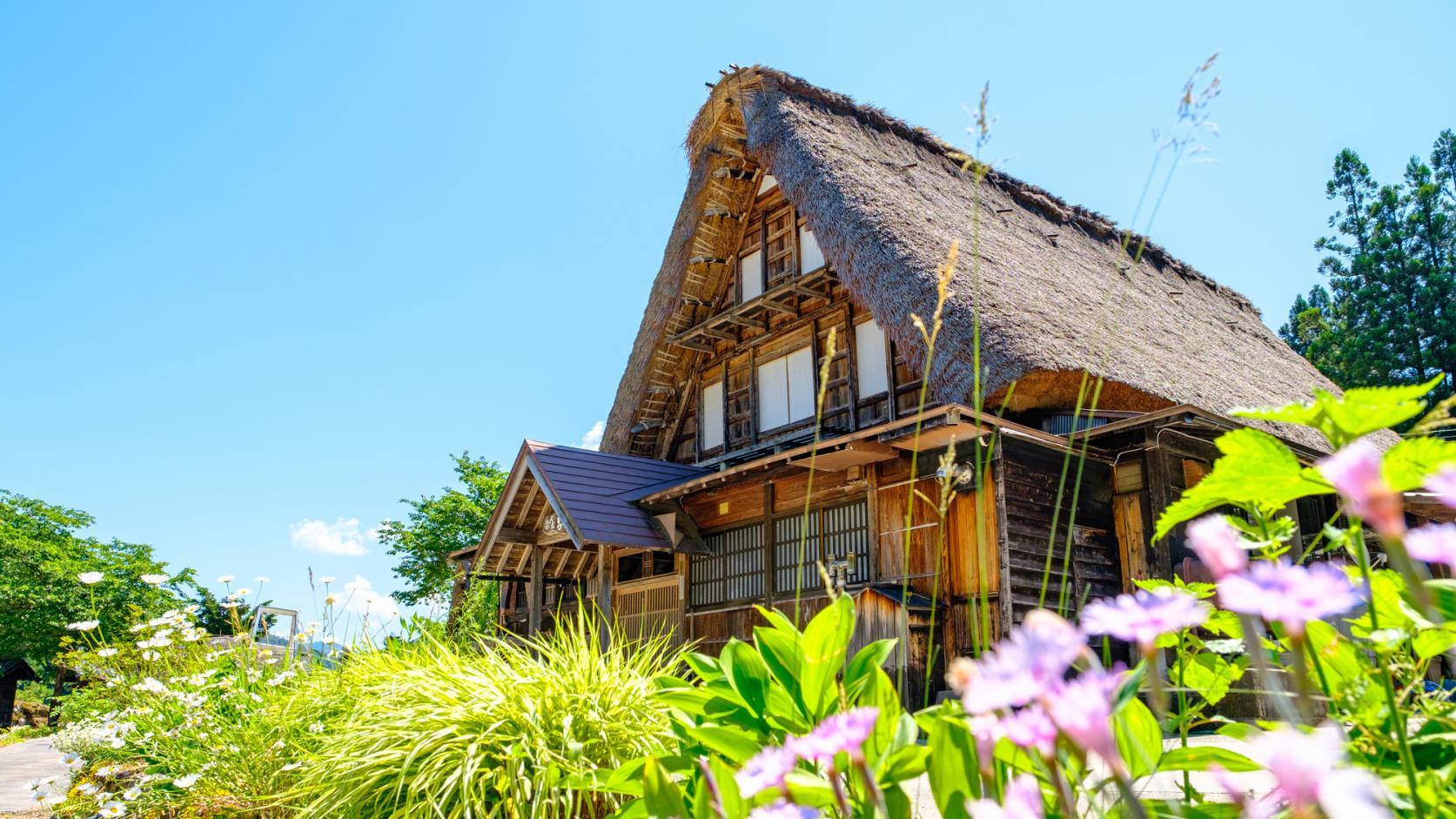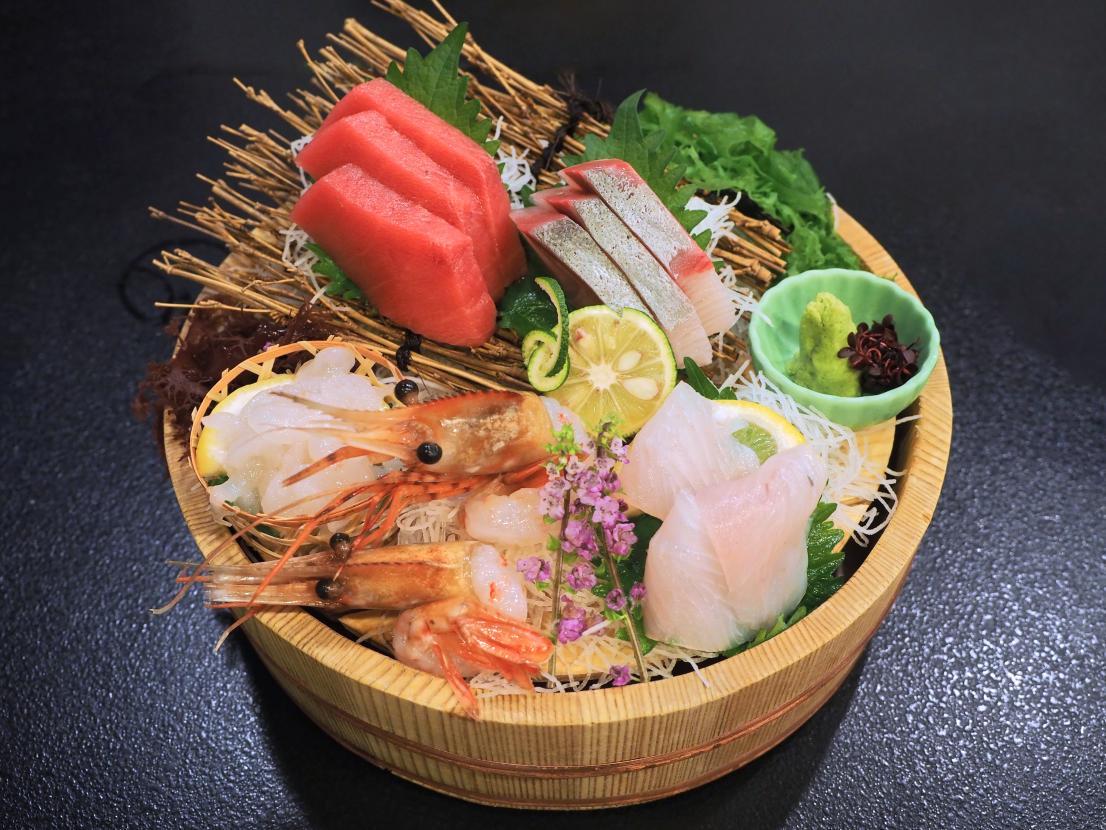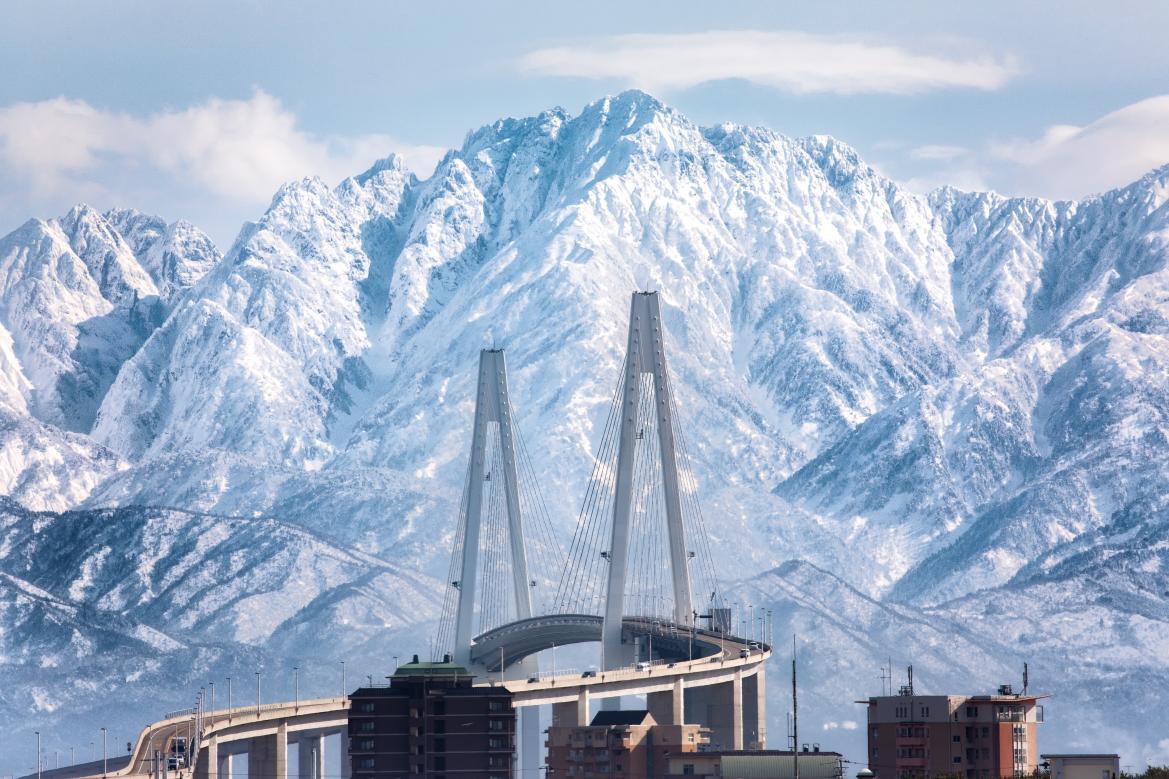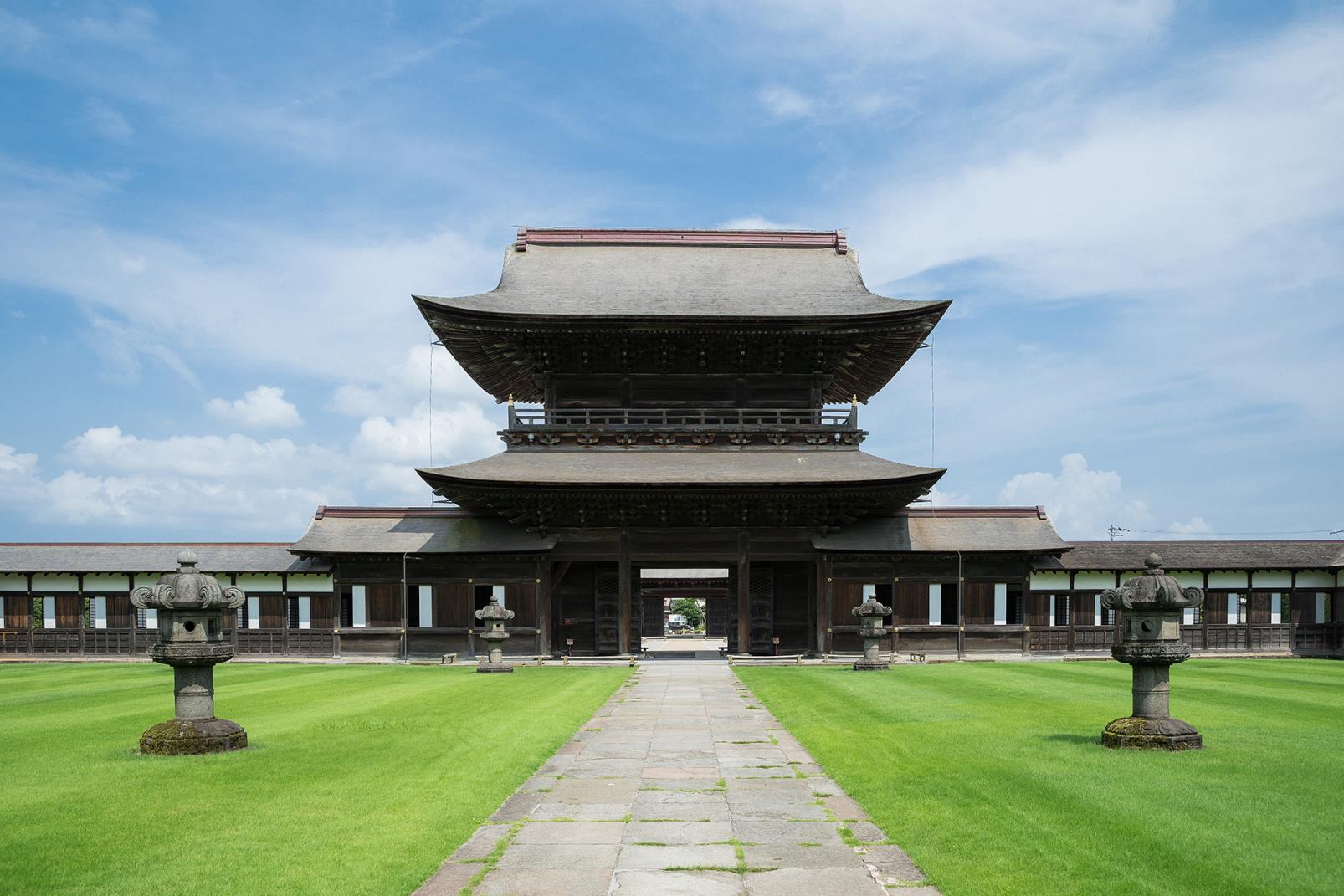
Visit the National Treasures, Zuiryuji Temple and Shokoji Temple
What Kind of Temple is the National Treasure, Zuiryuji Temple?
Takaoka City, founded by the second head of the Kaga Domain, Toshinaga Maeda, inherited the techniques of making traditional crafts such as casting and lacquerware for more than 400 years. In the city stands "Zuiryuji Temple," which was built by the third head of the family, Toshitsune, to commemorate Toshinaga Maeda. Zuiryuji Temple, which took about 20 years to build, has been described as "a masterpiece of Zen Buddhist temple architecture in the early Edo period," and the Sanmon Gate, the Butsuden Main Hall, and the Hatto Lecture Hall are designated national treasures.
Column
Zuiryuji Temple Guided Tours
Zuiryuji Temple offers tours held by monks and tourism volunteers. Since there are times when the tours are not available due to funerals, ceremonies, and Buddhist memorial services, please request the dispatch of a volunteer from the Takaoka City Tourism Association to make sure you will have a guide. *A transportation fee of 1,000 yen is required.
Click here for details on volunteersThe Temple’s City Location Makes for Easy Access
Zuiryuji Temple is located in the downtown area of Takaoka City, roughly in between Shin-Takaoka Station (Hokuriku Shinkansen Line) and Takaoka Station (Ainokaze Toyama Railway). It is a 15-minute walk from Shin-Takaoka Station (Hokuriku Shinkansen Line) and a 10-minute walk from the south exit of Takaoka Station (Ainokaze Toyama Railway).
When using the Kaetsunou Bus, please get off at "Zuiryuji-guchi.”
Free parking is also available, so it's easy to visit by car as well. It takes about 10 minutes from the Takaoka Interchange on the Noetsu Expressway by car, or about 15 minutes from the Kosugi Interchange on the Hokuriku Expressway.
Column
"Unlimited Ride 1-day Free Ticket for Takaoka Machinaka" Offers Great Value and Convenience!
If you want to visit Zuiryuji Temple, Takaoka Great Buddha, Yamachosuji, Kanayamachi, and other sights in central Takaoka, we recommend using the Free Ticket. For only 500 yen (250 yen for elementary school students and younger), you can take unlimited rides on the Kaetsunou Bus (from Shin-Takaoka Station to Kanayamachi) and the Manyo Line tram (from Takaoka Station to Shikino Chugakko-mae).
See MoreThe Sanmon Gate, the Butsuden Main Hall, and the Hatto Lecture Hall are Designated National Treasures
Zuiryuji Temple is a large Zen Buddhist temple with seven main buildings collectively called "Shichido Garan.” The Sanmon Gate, the Butsuden Main Hall, and the Hatto Lecture Hall are arranged in a straight line, such that when you stand in front of the temple gate, you can beautifully capture all of the structures in one frame. From the Sanmon Gate to the Hatto Lecture Hall, there are "Tomuro stones" that cannot be used without permission from the Kaga Domain. They're placed at important points, showing just how important Zuiryuji Temple was to the Kaga Domain.
The Sanmon Gate
The Sanmon Gate is 18 meters high, with Kongo Rikishi (mythological Buddhist warriors) statues enshrined on both sides and Shaka Nyorai and the Sixteen Arhats enshrined on the second story of the building. The gate demonstrates excellent techniques in temple architecture from the late Edo period.
It represents a unique presence past the main gate, and commands an imposing stance as the entrance midway through the temple complex.
The Butsuden Main Hall
The Butsuden Main Hall is roofed with lead roof tiles and enshrines three Buddhist deities from China: Shaka Nyorai, Manjushri, and Samantabhadra, and the coffered ceiling is covered with a silk canopy.
It was built using 600-year-old Japanese zelkova trees from the Noto Peninsula.
Another attraction is the four Baku (a Chinese mythical creature) on the four corners of the ceiling, so be sure to check them out when you visit.
The Hatto Lecture Hall
The Hatto Lecture Hall is a large reception hall with a traditional Japanese residential architectural style. When you enter, you'll find a Tomuro stone and a small portion of coffered ceiling and, in the inner sanctuary towards the back, the Buddhist memorial tablet of Toshinaga Maeda, the second head of the Kaga Domain.
Another notable attraction is Yasunobu Kano's painting, "A Hundred Flowers in the Four Seasons,” on the ceiling of the inner and outer chambers.
The Buildings Designated as Nationally Important Cultural Properties are Definitely Worth Seeing as Well
When you get past the Sanmon Gate, you'll find the Zendo (Zen meditation hall) and the Oguri on both sides of a beautiful green lawn. Here, all the buildings are connected by a corridor running through the perimeter of the lawn, giving the whole complex a sense of solemnity and orderliness.
The first main gate of the temple complex, the Zendo, the Oguri, and the Daisado (Great Tea Ceremony Hall), have all been designated as Nationally Important Cultural Properties of Japan. The Zendo and the Oguri also underwent major renovations in the Showa and Heisei periods, restoring them to their original state. Abbot Yotsuya said, "There used to be as many as 200 monks training here."
Put Your Hands Together for the God of Toilets, "Ususama-myouo"
"Ususama-myouo" is famous as the god of toilets. The god is enshrined in the Prajna (a Buddhist term meaning "wisdom") room to the right of the Hatto Lecture Hall.
Originally, the god was enshrined in Tosu, which was destroyed in a fire about 250 years ago, leaving only a few vibrant colors on the deity's robes. The deity is said to help worshipers burn away the impurities of the heart and daily life, and in recent years has become popular as the god of toilets. "The god's facial expression is different on each side of its face," said Yotsuya Chief Priest. Please look carefully and read both expressions when you visit. There's also a statue of Skanda in front of the Oguri.
Plenty of Historical Architecture and Attractions
You can enjoy Zuiryuji Temple from various perspectives, such as history, architecture, and religion.
The stone mausoleums of Toshinaga Maeda, Toshiie Maeda, Nobunaga Oda and his concubine Shokakuin, and Nobutada Oda are lined up in the Hatto Lecture Hall. Toshiie Maeda's stone mausoleum has Acala and Vaisravana carved on the front, Amitabha on the back, and Bodhisattvas holding musical instruments on the sides.
As you walk along the corridor, you'll find a colored replica of Ususama-myouo made of Takaoka Copperware near the place where the Tosu was located (at the corner of the corridor).
Column
Annual Events at Zuiryuji Temple
Every year, on June 1st and 7th, an event called "Hitotsu Yaito" is held in the Hatto Lecture Hall to pray for good health. The temple complex is also lit up differently every season for the seasonal lights displays, which are popular events that visitors can enjoy at night.
See MoreZuiryuji Temple's Goshuin and Other Attractions
3 Types of Goshuin and Kutabe Talismans as Souvenirs
At Zuiryuji Temple, there are three types of Goshuin (red seals from temples), including a colorful Goshuin of Ususama-myouo. The Goshuin can even be used as talismans. It's said that if you place the Ususama-myouo talisman above eye level, facing east or south, it can grant blessings such as purification of the toilet, healing of illnesses, easy childbirth, and prosperity to the family and to descendants. Also, it's said that the talisman of Kutabe, a sacred beast that is said to have appeared in Tateyama at the end of the Edo period, acts well as an amulet for warding off evil spirits and inviting good fortune when you place it on your front door.
Sights to See and Things to Do Around Zuiryuji Temple: "Kirin-yaki"
Taste Kirin Tea House's specialty, "Kirin-yaki"
Kirin Tea House, just in front of the main entrance to the temple, is a sweets shop where visitors to Zuiryuji Temple can take a break. Their famous specialty, "Kirin-yaki," was designed by Abbot Yotsuya himself, while the baking molds were made by a factory in Takaoka.
The fragrant batter contains adzuki beans and cream, and the red bean paste is purchased from the Japanese confectionery shop, "Fuwa Fukuju Dou” nearby. The mild sweetness will soothe your body after a day of touring the temple. They also offer Kuniyoshi apple juice and original blend coffee.
Sights to See and Things to Do Around Zuiryuji Temple: "Early-Morning Zazen”
Early-morning Zazen (seated Buddhist meditation) is held every Sunday.
Early-morning Zazen is held every Sunday from 5:15 am to 6:10 am at the temple's Zendo. It has been held for about 30 years, and anyone can participate by simply dropping by the Zendo on the day without having to make a reservation. (However, it is recommended to inquire with the temple in advance as there are rare occasions when it is closed.)
In Zazen, you cross your legs, put your hands together with the backs of your hands facing down, look downward at a 45-degree angle with your eyes half-closed, and repeat the slow breathing exercise. "There are many people who make it a habit because it is a calming time for them,” said Abbot Yotsuya.
Sights to See and Things to Do Around Zuiryuji Temple: "Hatcho Michi”
Walk along Hatcho Michi to the Toshinaga Maeda Graveyard.
Zuiryuji Temple and the Toshinaga Maeda Graveyard are connected by Hatcho Michi, a white stone-paved road lined with stone lanterns. The name Hatcho Michi comes from the length of the path, which is 870m.
Right next to Zuiryuji Temple, there's a bronze statue of Toshinaga Maeda wearing a catfish tail-shaped helmet – his trademark – and it is recommended to take a commemorative photo with it.
Walk along the row of pine trees heading east, and you'll find the Toshinaga Maeda Graveyard, a two-story mausoleum built of Tomuro stone in an area of about 250 square meters. Its sides are engraved with 130 lotus patterns, which are said to be the work of Tan'yu Kano.
How was your trip to the National Treasure, Zuiryuji Temple? You can tour the whole temple complex in about an hour, so be sure to visit when you come to Takaoka.
What Kind of Temple is the National Treasure, Shokoji Temple?
Shokoji Temple, a designated National Treasure, is the head temple of the Jodo Sect of Buddhism in Etchu Province. It boasts unprecedented scale and form for a branch temple.
In December 2022, the main hall, the reception hall, and the ceremonial platform were designated as National Treasures. The main hall, which was built in the late Edo period (1603-1868), is based on the Amidado (Hall of Amida Buddha) of Honganji Temple, the sect's head temple. The plans for Shokoji Temple were also drawn up by the temple carpenters of Honganji Temple.
The "Major Heisei Repairs," a 23-year project that began in 1998, has restored the main hall, the reception hall, the ceremonial platform, and twelve other structures to their original state in the late Edo period.
The Main Hall, the Reception Hall, and the Ceremonial Platform are Designated National Treasures
In December 2022, the main hall, the reception hall, and the ceremonial platform of Shokoji Temple were designated as National Treasures. Shokoji Temple, located on the site of the former Etchu Provincial Government, is a temple of the Honganji School of the Jodo Sect of Buddhism and acts as one of the branch temples supporting the head Honganji Temple.
Founded by Rennyo Shonin, the temple was originally called "Doyama Gobo." This name derives from the fact that it was rebuilt and inherited from Emperor Juntoku's imperial temple, the Shusho Seigan Kogyoji. During the Edo period, Harunaga Maeda, the 11th head of the Kaga Domain, served as the abbot from ages 10 to 23.
Column
An Audio Guide to Go with Your Visit
For those who wish to listen to detailed explanations when visiting the temple, you can rent an audio guide (500 yen). You can also hire a volunteer guide, but this requires applying in advance. It's 1,000 yen per hour per guide.
Click here for more detailsHow to Get to Shokoji Temple
If you're taking the train to Takaoka
At Shin-Takaoka Station (Hokuriku Shinkansen Line), take the Kaetsunou Bus and get off at the "Fushiki Eki Mae" bus stop, then walk for about 7 minutes.
At "Takaoka Station" (Ainokaze Toyama Railway), take the Kaetsunou Bus and get off at the "Fushiki Eki Mae" bus stop, then walk for about 7 minutes.
Walk for about 7 minutes from Fushiki Station (JR Himi Line).
If you're driving to Takaoka
About 20 minutes by car from the Takaoka-kita Interchange on the Noetsu Expressway.
*Free parking is available
Column
"Takaoka Wide Free Ticket"
This ticket allows you to take unlimited rides in the Takaoka City area, as well as on buses and the Manyo Line tram in the following areas: the Important Preservation District for Groups of Traditional Buildings, "Yoshihisa;" the Fukishi area that's home to the Takaoka Manyo Historical Museum; and the spectacular Amaharashi Coast offering a vista of the Tateyama Mountain Range beyond Toyama Bay.
Click here for detailsA Large Main Temple Hall Representative of the Late Edo Period
The main hall of Shokoji Temple is a large temple hall representative of the late Edo period. It was designated as a National Treasure due to its historical importance, as evidenced by events such as Abbot Harunaga Maeda asking the next abbot to rebuild the main hall before the former returned to secular life; and Kaga Domain giving significant financial support to the temple for the rebuilding; and even Honganji Temple encouraged followers of the then-expanding Jodo Sect to make donations as well.
In addition, the temple carpenters of Honganji Temple were involved in the construction, and the decorative carvings on the Tabasami and Kibana are worth seeing.
A Reception Hall with a Meeting Hall
The reception hall and the ceremonial platform were also designated as National Treasures at the same time as the main hall.
The reception hall has a highly prestigious Jodo Sect meeting hall. The building was designated as a National Treasure because it retains clear traces of the process of expansion and maintenance that took place over the years as Shokoji Temple developed.
The reception hall used to have only two rows of tatami mats, but due to the temple's increase in size and the number of monks, a third row of tatami mats was added. On the other hand, the fusuma (Japanese sliding screen) with bright empress trees and chrysanthemums was recreated from the color pattern of the original fusuma paper that was a few sheets under the top one.
Ten Important Cultural Properties Restored to Their Appearance in the Late Edo Period
Along with the main hall, the reception hall, and the ceremonial platform, which have been designated as National Treasures, ten Important Cultural Properties have also been restored.
Many of the buildings had tiled roofs before the restoration but, with the exception of the main gate which still has a tiled roof, the Karamon Gate now has a cypress bark roof, while the other buildings now have wood shingle roofs.
There are many highlights, such as a special well in the kitchen that’s accessed from above the floor, and a basket that Harunaga rode with displayed on the side of the corridor. As you tour around the various halls of the temple, you'll also notice the high quality of the residential architecture.
Let's Go See the "Seven Wonders" of the Temple
There are "Seven Wonders'' at Shokoji Temple. It is said that they were thought up by a monk long ago, but it's not known when they were created. As soon as you enter the Karamon Gate, you'll find the "Stone That Fell from Heaven." If you tap it with one of the pebbles nearby, it will make a metallic sound.
There's also the "Ginkgo Tree Without Fruit," the "Pond That Never Runs Dry," the "Evil Spirits Guarding the Roof," the "Cloud Dragon Inkstone," the "Three-Leafed Pine Tree," and the "Heavenly Demon That Guards the Four Corners." Their photographs are included here, so you can browse through the photos and check these wonders. Please look for them when you visit.
• Stone That Fell from Heaven: A stone that once stood on the nearby Kokubu Beach that sobbed night after night. It's said that it finally stopped crying when it was brought into Shokoji Temple.
• Evil Spirits Guarding the Roof: These sculptures are located above the pillars at the four corners of the main hall. The two sculptures on the front side of the main hall support the roof with both hands, while the two sculptures on the back side support the roof with one hand. They are meant to ward off evil.
• Pond That Never Runs Dry: It is said that the dragon carved into the sutra hall watches over the water, making sure it doesn't dry up so that it can be used to extinguish any fires that might occur in the main hall.
• Ginkgo Tree Without Fruit: It is said that children used to fall from the tree, and fights would break out over the fruit, so the priest gave a sutra and the tree stopped bearing fruit the following year.
• Three-Leafed Pine Tree: The pine tree on the north side of the main hall has leaves clustered in threes instead of the typical clusters in twos.
• Cloud Dragon Inkstone: An inkstone that was used by Rennyo Shonin, the founder of the Jodo Sect. There's an anecdote that when Rennyo Shonin picked up his brush, water came out of the inkstone.
• Heavenly Demon That Guards the Four Corners: The pillars of the main hall are made of Hinoki cypress, but only one is made of cherry tree. The pillars are inverted to prevent the building from being too perfect.
23 Years of "The Major Heisei Repairs"
As more than 200 years had passed since its construction, Shokoji Temple was rapidly deteriorating, so large-scale preservation efforts and repairs were carried out over 23 years starting in 1998. A total of twelve buildings were targeted, including the main hall, the reception hall, the stairs in the entranceway, the study hall and inner study, and the Buddhist altar. During the renovation work, it was decided to proceed with restoration and maintenance based on its appearance during the late Edo period when the main hall was built.
Next to the study hall, there is a room showcasing "The Major Heisei Repairs," including photos of the temple before restoration, old building materials, and architectural models that are on display.
Think Back to Manyo at the Estimated Location of the Former Etchu Provincial Government
It is presumed that the place where Shokoji Temple is located was the site of the Etchu Provincial Government during the Nara period (710-784).
In the temple halls, there are a total of three tanka monuments inscribed with tanka poems written by Otomo no Yakamochi, the editor of the Manyoshu anthology of poems and who served as the governor of Etchu for five years. Otomo no Yakamochi wrote a poem about Tateyama, and even today, the Tateyama Mountain Range can be seen through the trees from the main hall. When you visit Shokoji Temple, please think back to the Manyo era.
Souvenirs of Shokoji Temple Also Found at Nearby Shops
At Shokoji Temple, you can buy rice crackers made with original baking molds, towels designed with the pattern of the sliding screen in the reception hall, and more. These are also available at nearby stores, so be sure to stop by on your way home.
In addition, "Koshimura Hyakumidou," a Japanese confectionery shop that has been in operation in the area for three generations, has been making Jonamagashi with the motifs of the Seven Wonders since Shokoji Temple was designated as a National Treasure. It is recommended to get them as souvenirs, along with the shop’s other famous sweets, such as Jonamagashi with motifs of seasons and events for every month of the year.



